We are now traveling in Europe, you can follow us on our Polarsteps site:
Christmas in O’Higgins and the Carretera Austral
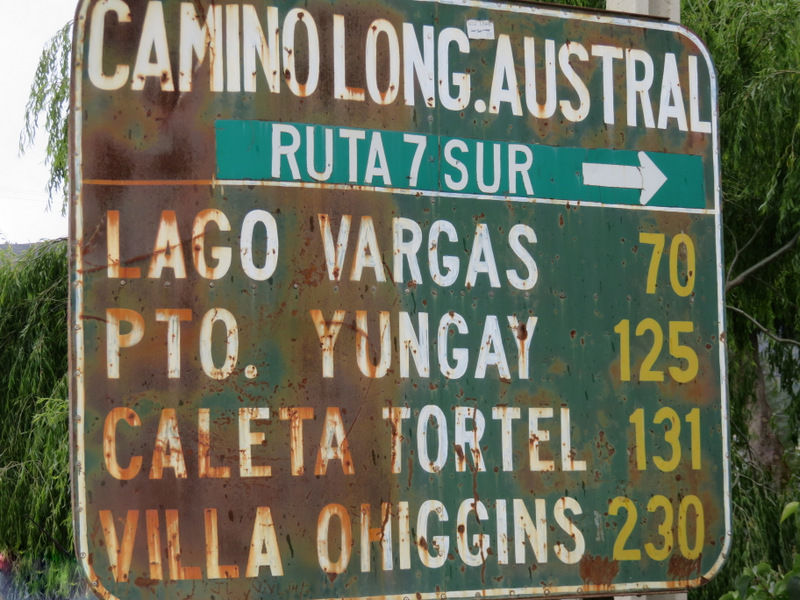
Villa O’Higgins sounded interesting and so we decided to go there for Christmas. The Carretera Austral (Ruta 7) is long and winding road in Southern Chile, 1240 km long, it starts in Puerto Montt and runs all the way south to Villa O’Higgins. It is interrupted by fjords that are crossed by ferries. Construction of the this road started in the 1970s on the orders of General Augusto Pinochet, the Chilean president of the time. Patagonia is very challenging when it comes to building a road, everywhere you look there are obstacles, mountains, lakes and fjords, rivers and glaciers. There was no land route that provided access to the isolated territory of southern Chile until this road was completed 2003. It finally connected the north with Villa O’Higgins. Lago O’Higgins marks the end of the road.
It has been described to us as a very beautiful road and we planned to drive it from one end to the other.
But our plans changed. On our way to O Higgins we encountered fog rain and snow.
O’Higgins is a strange little town, few people out and about, a new and empty square, trails that look nice on the tourist information but most are really not passable or disappear. The bad weather didn’t help. We camped at hostal El Mosco, more or less a biker hostal.
Lots of bikers here. Remember, the ones that we saw heading to Lago Desierto from El Chalten. They hike, bike and ferry over from Argentina, there is no road.
I looked for the church to see if there was maybe a service on Christmas Eve, a piece of paper nailed to the door said there would be a service at 8 pm. The little church is very small and holds 20 people at the most. So I left it to the locals.
We had our own little Christmas celebration in the camper. I made Glühwein, sausages and sauerkraut, lit the candles, put on Christmas music from back home and we had a very nice evening.
To get away from the bad weather we took off and headed north, and we drove and camped and drove and camped and it rained and rained. Every time we had a few hours of nice weather we took some pictures.
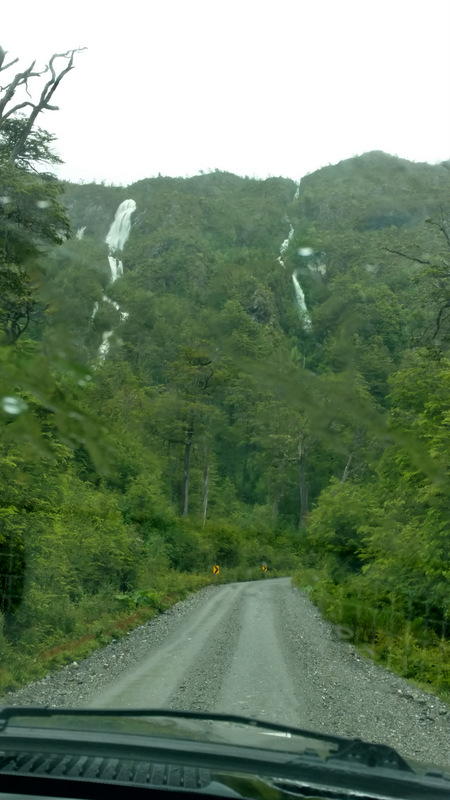


December snow in the middle of summer.

Rock falls and mud slides are a common occurrence on this road

“Socked in”

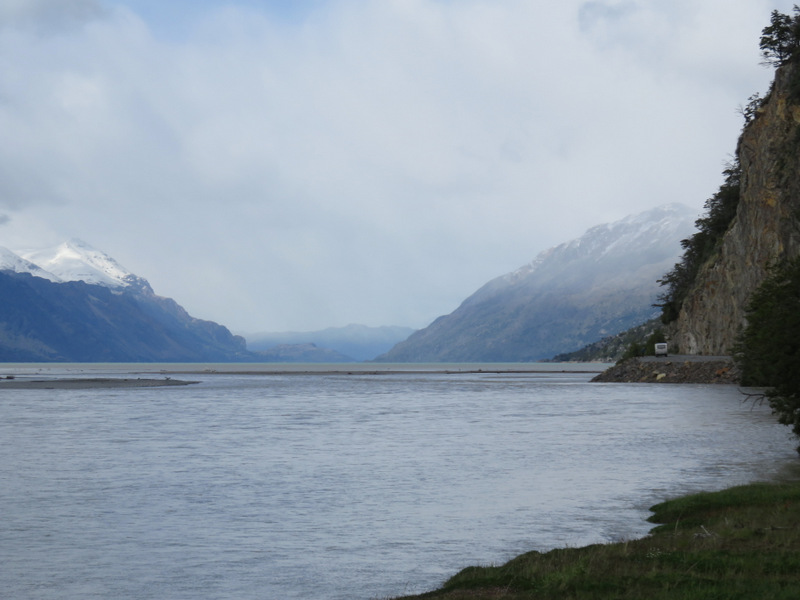

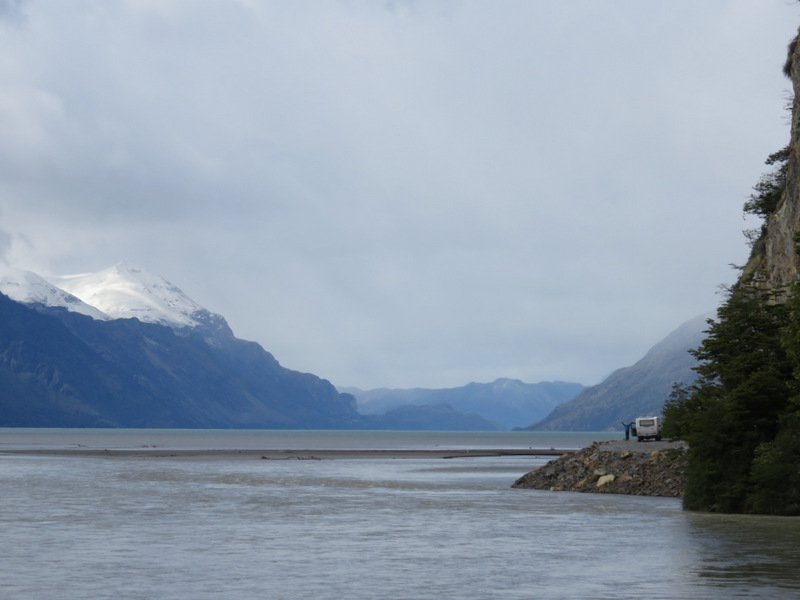



Villa O”Higgins


At the hostel “El Mosco”

The black lines are the trails, we tried to hike up the Mosco river….


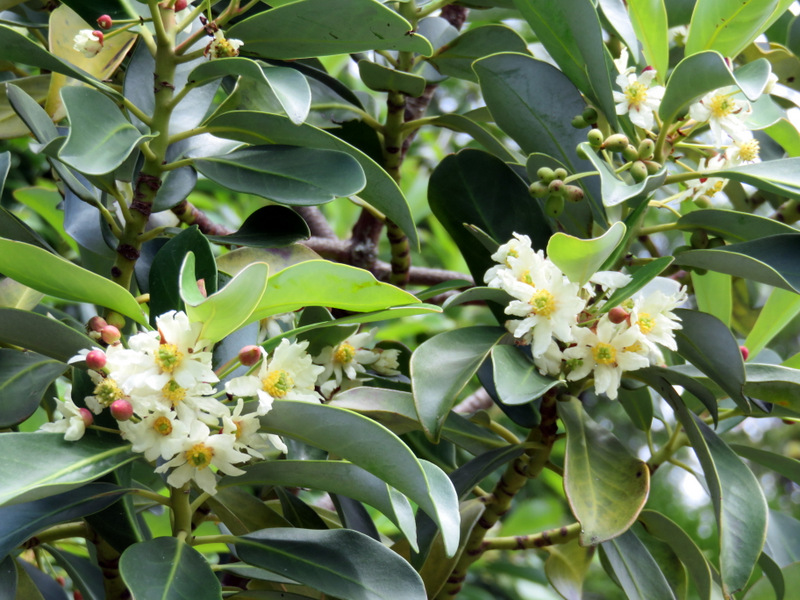


It got worse and eventually the trail disappeared….
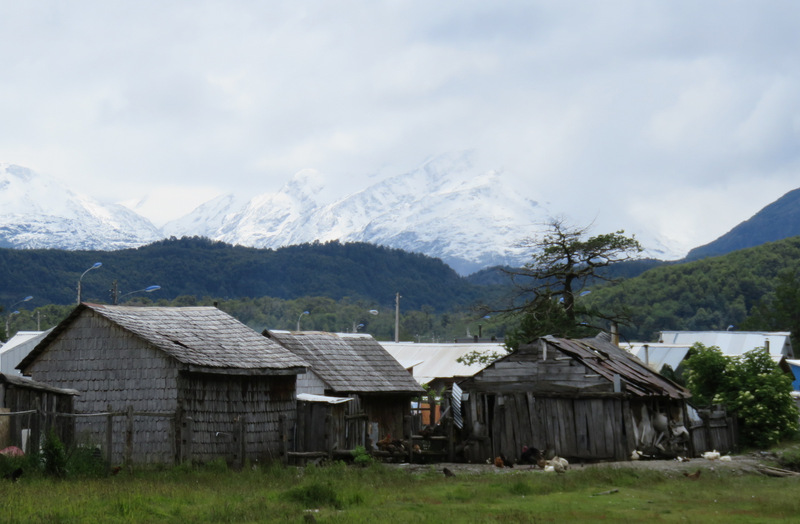
Some of the original buildings in town.
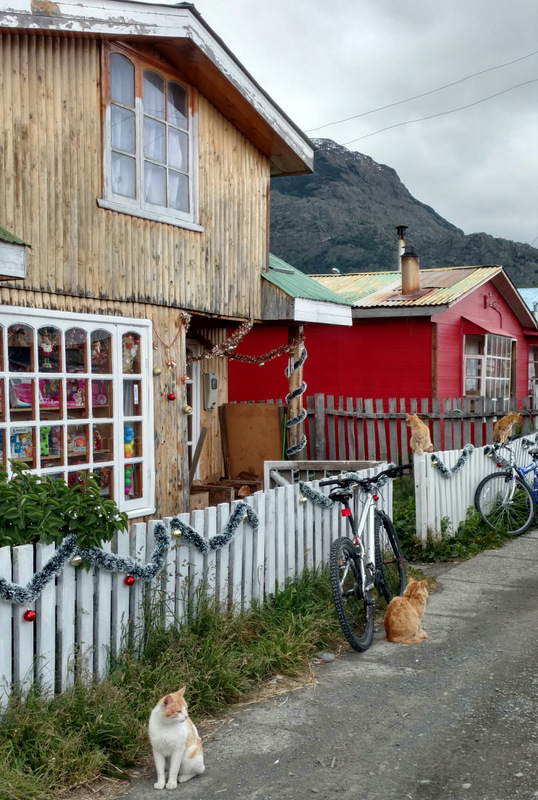
Time to get ready for Christmas, the kitties are waiting.
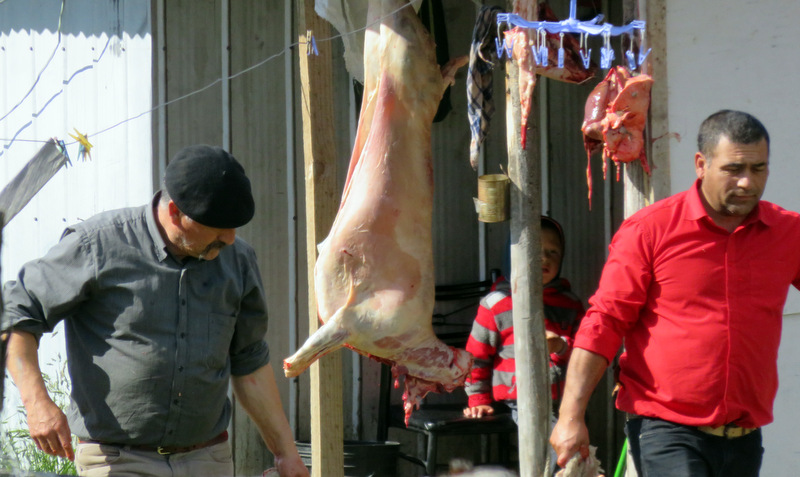
Our neighbors brought a sheep in the back of their car, in no time it was butchered and ready for the Christmas feast.
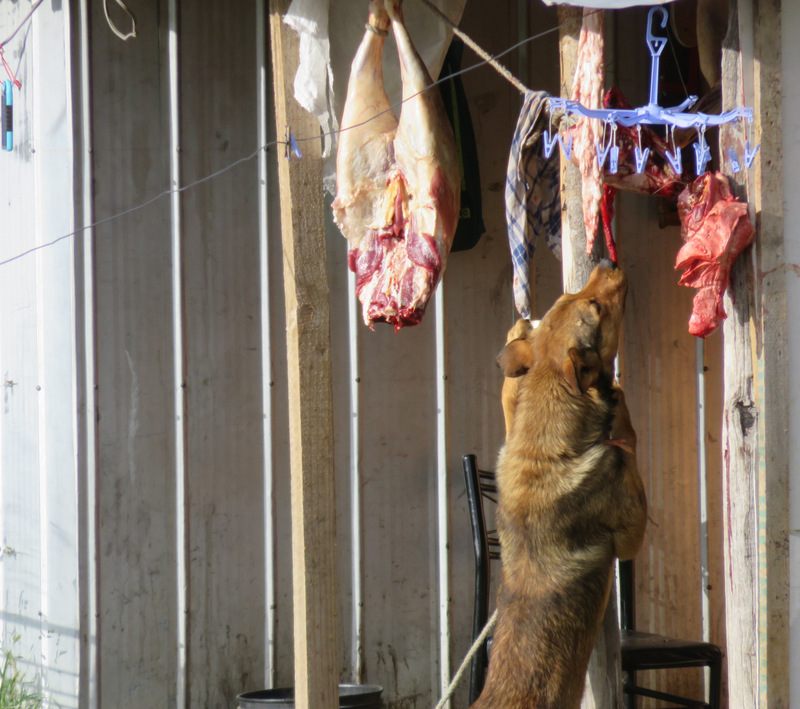
Leg of lamb and Perro wants his share too.

The old church on the right, the new church with the nativity scene on the left.

Below the nativity scene it looks like they are trying to grow the Christmas trees.

Wow, the sun is out!
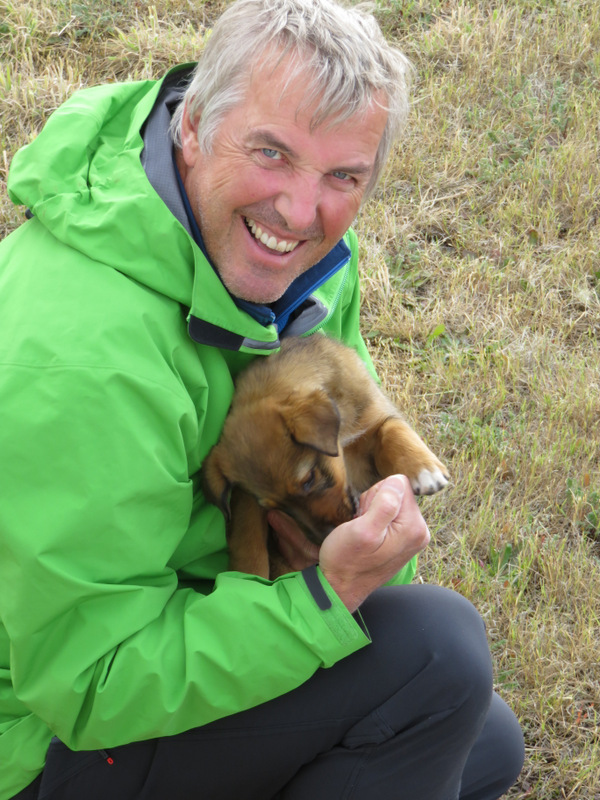
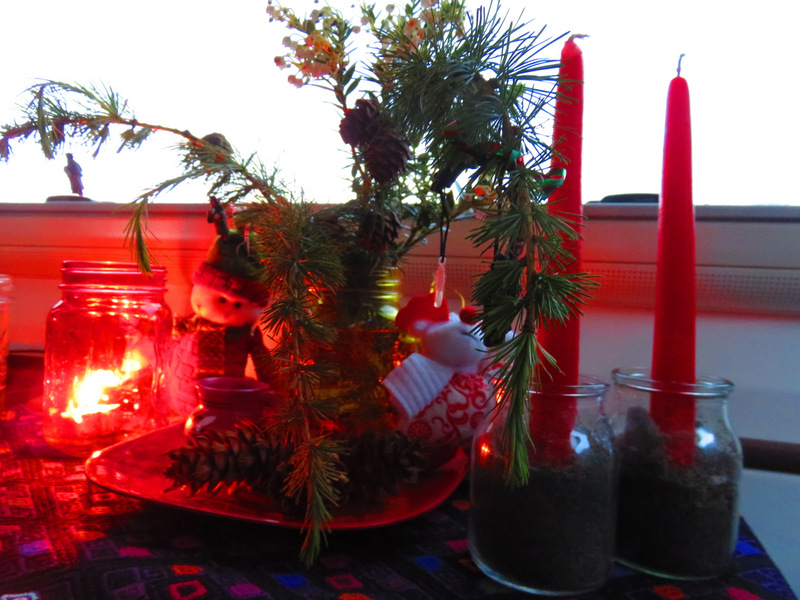
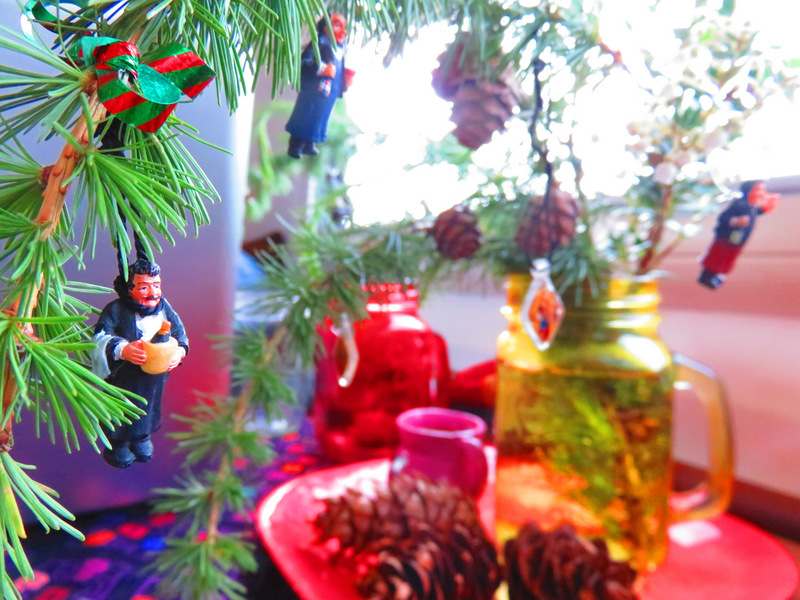
Christmas in our camper.
Mount Fitz Roy, Cuevas de los manos and on…
Mid December 2017

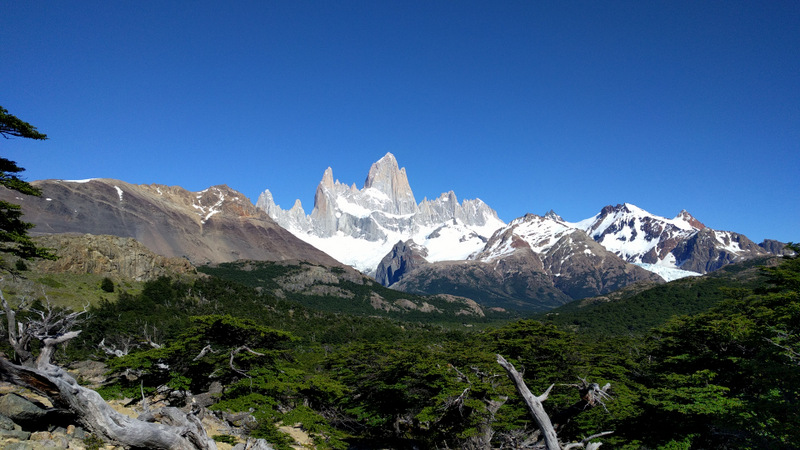

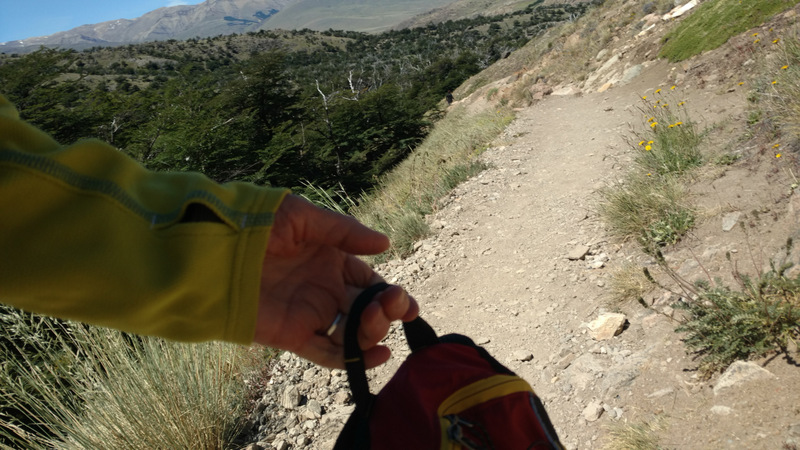



 :
:
We both hiked up toward Mt Fitz Roy, a mountain in Patagonia, on the border between Argentina and Chile. It is located in the Southern Patagonian Ice Field, near El Chaltén village and Viedma lake. First climbed in 1952 by French alpinists Lionel Terray and Guido Magnone, it remains among the most technically challenging mountains for mountaineers on Earth. I made it to the mirador, it was crowded withother hikers. Günter hiked the whole the circuit and we both really enjoyed the scenery.
Our blog is more or less just a way to write down our memories before we forget (ha) and our friends and families can read it if they are wondering what we are up to. It is not a guide-book and so I am usually not recording “useful” information about the towns or our camp sites. The towns are necessary stops to replenish our larder and fill up the tank. Anyway, El Calafate and El Chalten are gateways to the mountains and trekkers and bikers and bus tourists are all over the towns in summertime. We add to the mix and meet other overlanders in the campgrounds. Always interesting to talk to them and hear their stories. But too busy for us, so we left for Lago Desierto, west of El Chalten, near the Chilean border, we wanted to go for a hike to a glacier. On the road to the lake we saw several bikers who planned to take a boat across Lago del Desierto and hike and bike over to O’Higgins. The little town at the end of the Carretera Austral in Chile. This is a popular excursion for the more adventurous backpackers/bikers. We camped in the woods near the lake and the next day it rained, and it rained the day after, and it kept raining – and I started to wonder what we were doing there. Rain drenched bikers and hikers passed by on their way to the lake. To escape the rain we decided to head back to the steppes. Cuevas de las Manos is an ancient site with paintings dating back to 7370 B.C.On the way we detoured through Perito Moreno National Park. It was time for another hike, but there the wind was impossibly strong. I actually could not walk in it, it was crazy. We parked at the former estancia building, behind a large rocky hill. Even with that protection the wind shook our camper so hard that we had a restless night. So much for hiking here.



On the road to Perito Moreno National Park

This was the only hike we went on,it was just too windy.
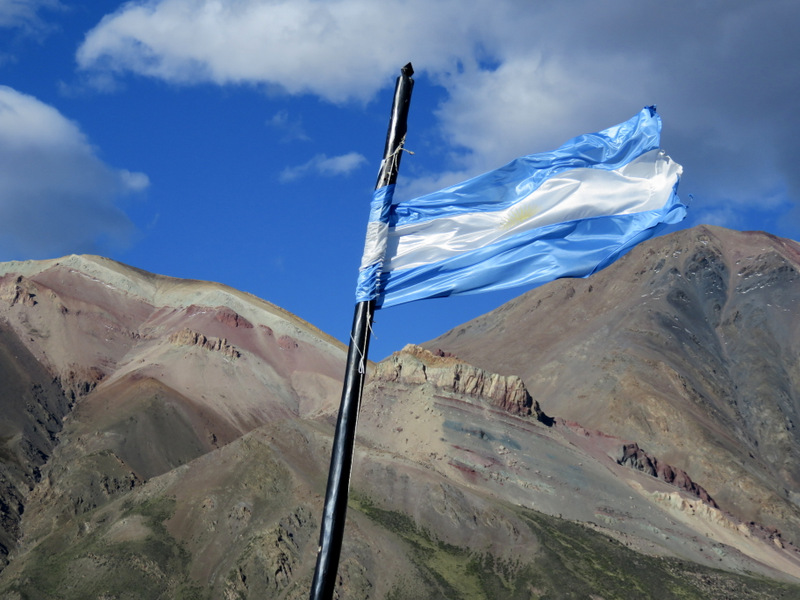

Rhea
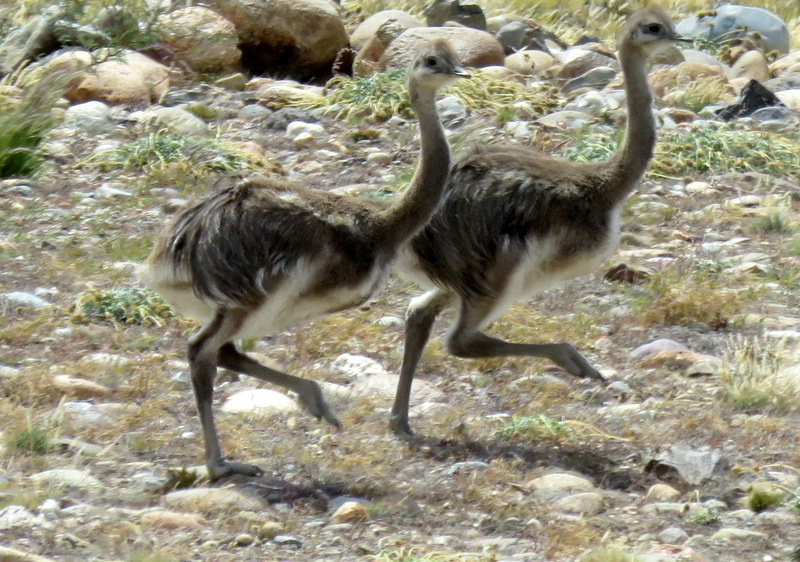
…..and two of many chicks.
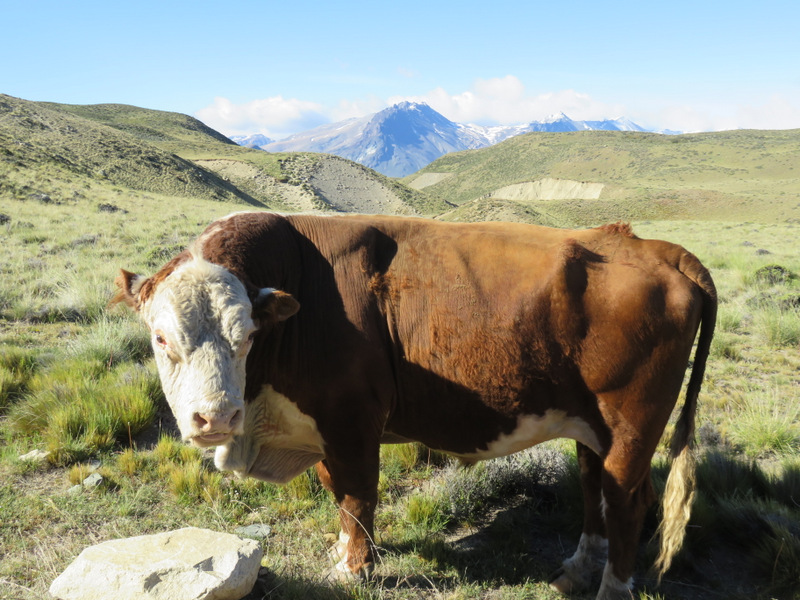
It took this guy a while to move off the road so we could drive on.
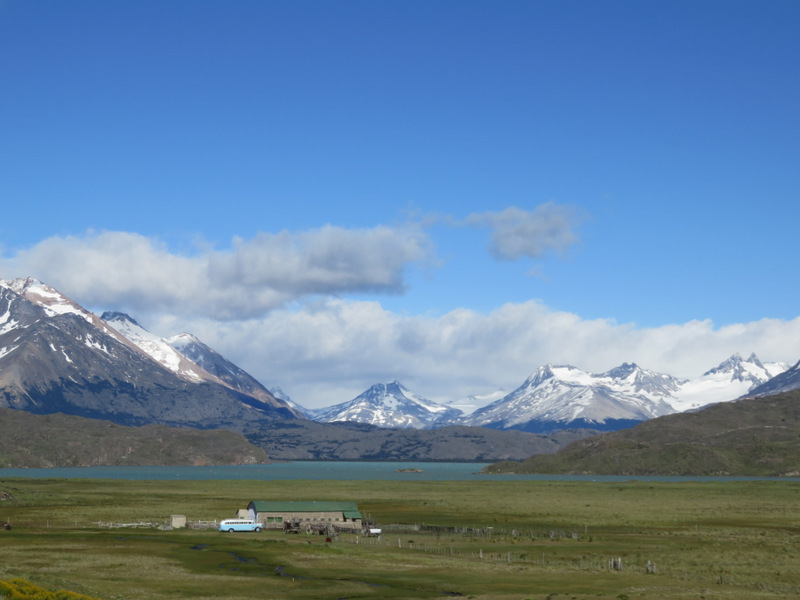
Estancia la Oriental

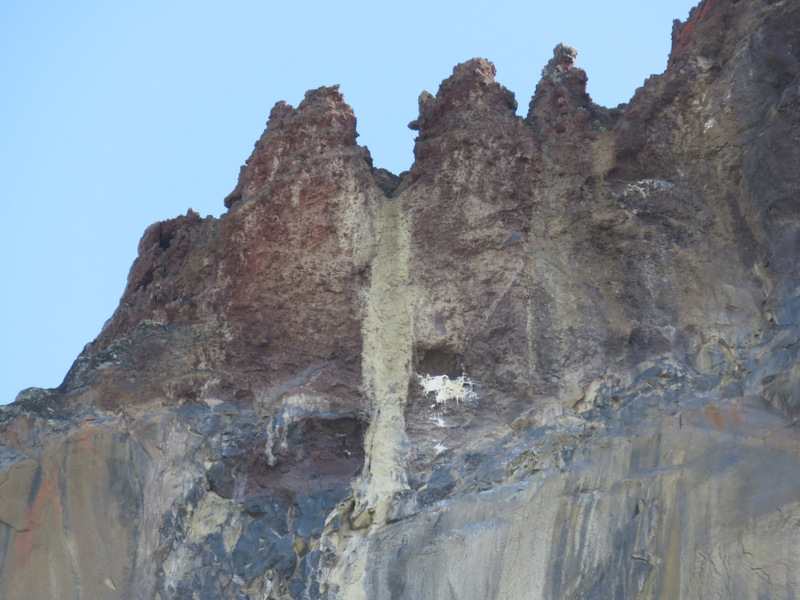
Condor nests
The weather got better, we camped in Canyon Caracoles near the UNESCO site Cuevas de los Manos.



The grey fox came across the salt flat and checked us out.
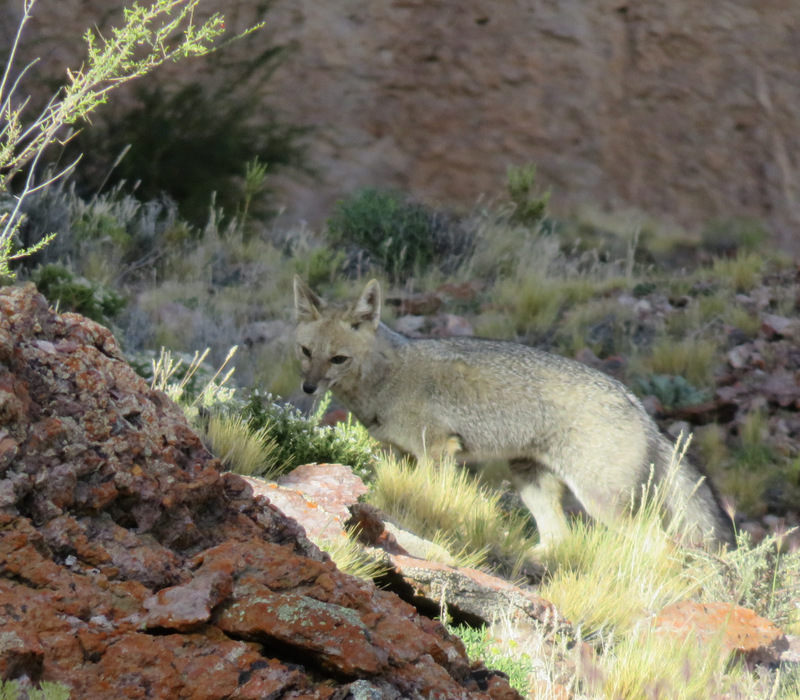

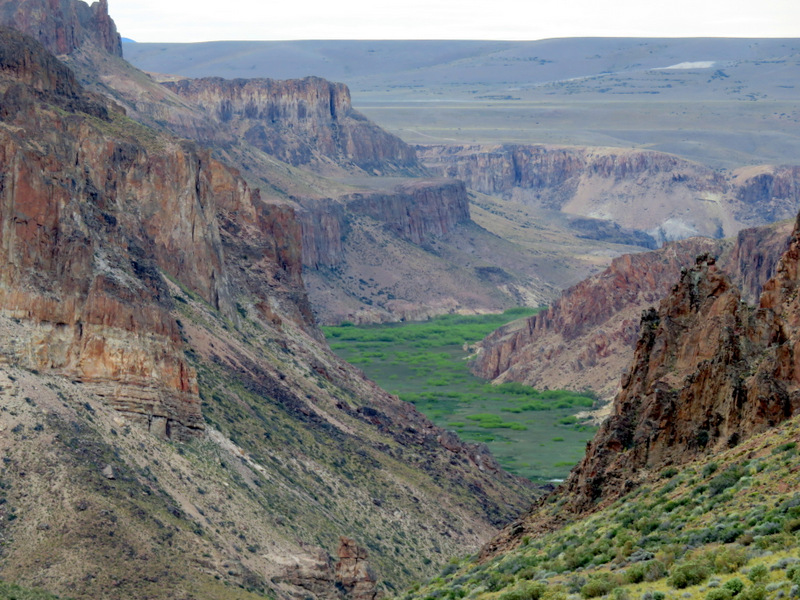
Rio Pinturas canyon
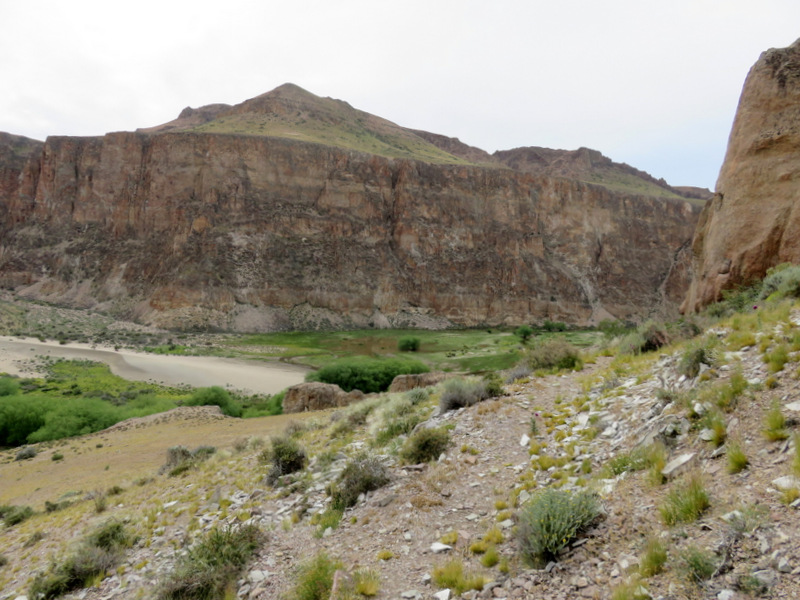

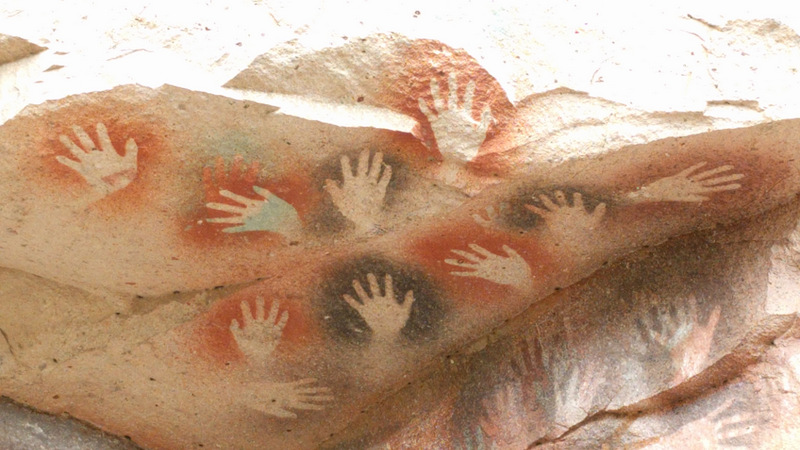



This person had six fingers!
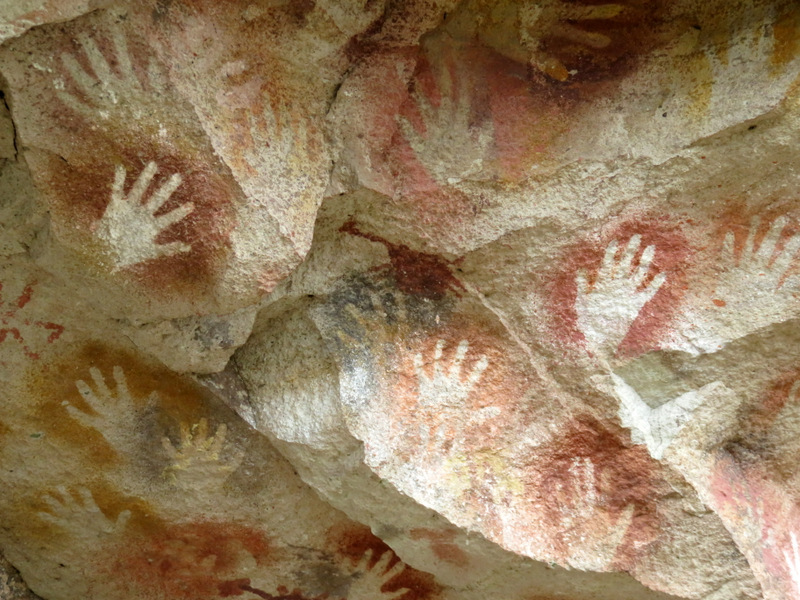

Pregnant guanacos!
Cueva de las Manos is famous for the paintings of hands. The art in the cave, which is really just an overhang dates from 13,000 to 9,000 years ago. Several waves of people occupied the area and early artwork has been dated to 7300 BC. The artist used bone pipes for spraying the paint on the wall to create silhouettes of hands and animals.

Viscacha

The canyon reminded us very much of the canyons in Utah.
It was time to go to the other side of the mountains, Paso Robalo:

What looks like a gaucho…..

…is a border patrol guy.


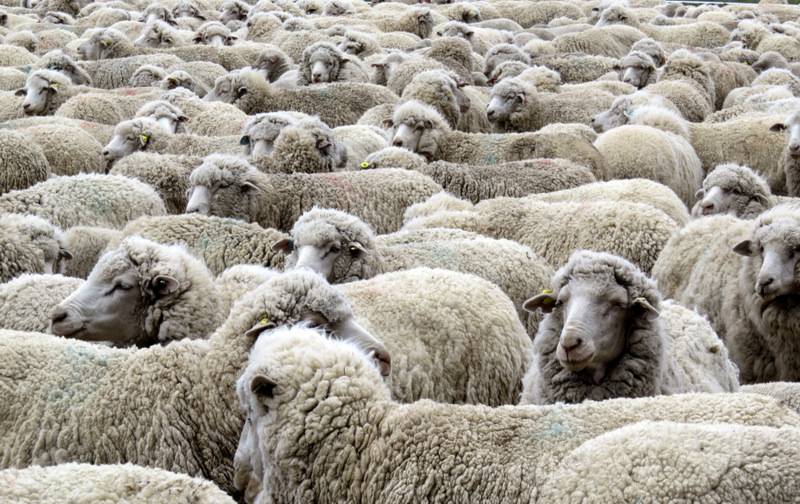

On our way over to Chile we passed this estancia, they were just in the process of seperating the sheep. So we stopped and watched, the truck near us in the photo was waiting to load lambs.


Yes, more guanacos!





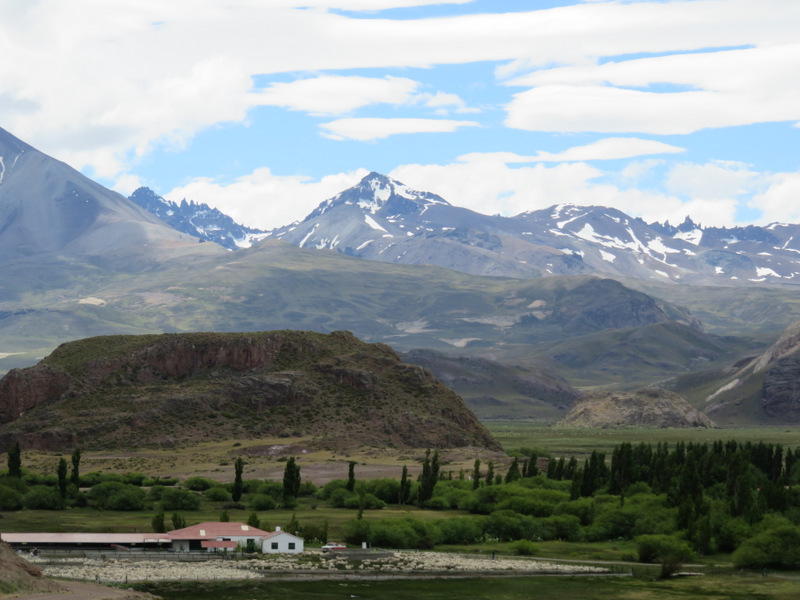

Parque Patagonia,Chile: Doug Tomkins and Kristine Mc Divitt Tomkins bought several large pieces of property and let the farmland go back to wilderness. It was beautiful!


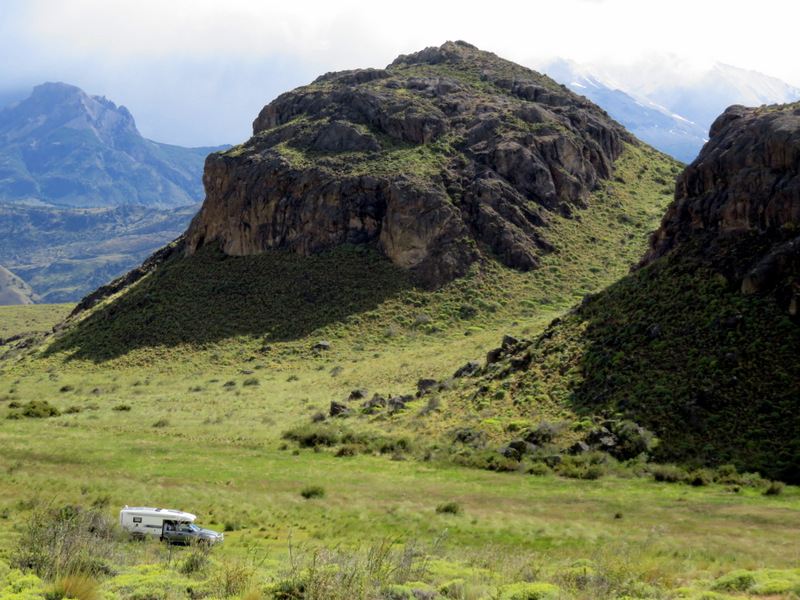
Torres del Paine
At the visitor center Las Torres at Torres del Paine National Park we were allowed to camp for a few days under a tree and use their facilities. A nice spot, we went for hikes and enjoyed the views and nice weather.
The towers are really a spectacular sight and we were lucky enough to have great weather while we were there.
This is a world-famous destination and gets very busy. I hiked up a hill on the opposite side of the famous sendero Mirador Las Torres and watched hundreds of people file up the trail. Günter had taken it very early the same morning to beat the crowds. (He met them on the way down and had to step off the trail constantly to let large groups pass). You can hear many different languages on the trails. European and North American mostly. I was glad to be all by myself on that hill on the other side, the wind was not up yet. I layed in the grass, watched and listened to the birds and smelled the air – perfumed by the mata negra bushes. Being together so much while traveling is not always easy and can take its toll on any relationship, so having some quiet time to myself was a treat. It was early summer and the flowers were starting to bloom, a great sight. Beautiful orchids and bright red fire bushes were all along the trails. After a few days exploring different sights and going on some hikes we left for Lago Azul, it was incredible blue, lived up to its name. We were not allowed to camp there and after checking the weather forecast, we decided to head for Mount Fitz Roy before the clouds and rain will hide it from view.
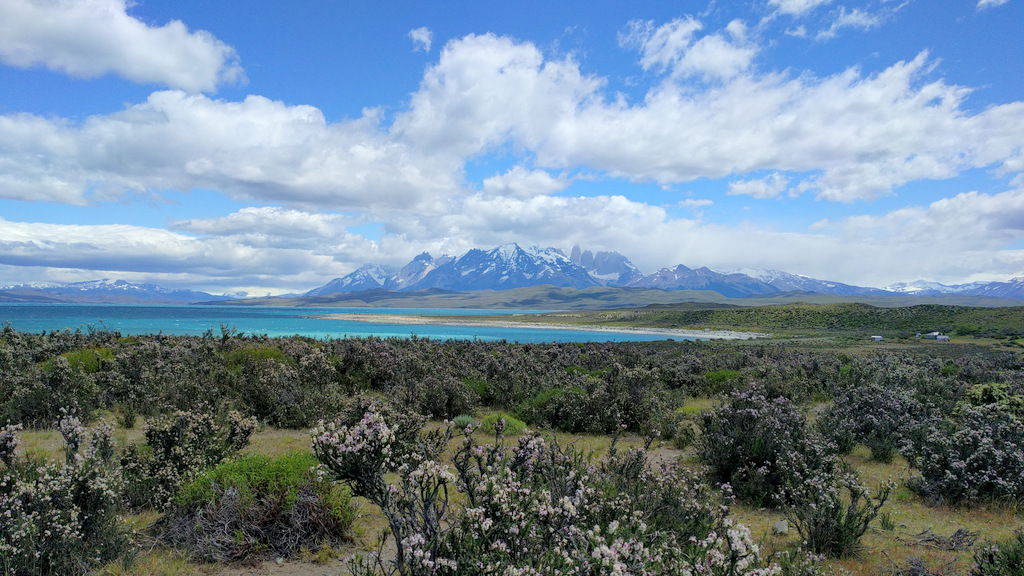
Getting closer to the torres.

Breath taking views

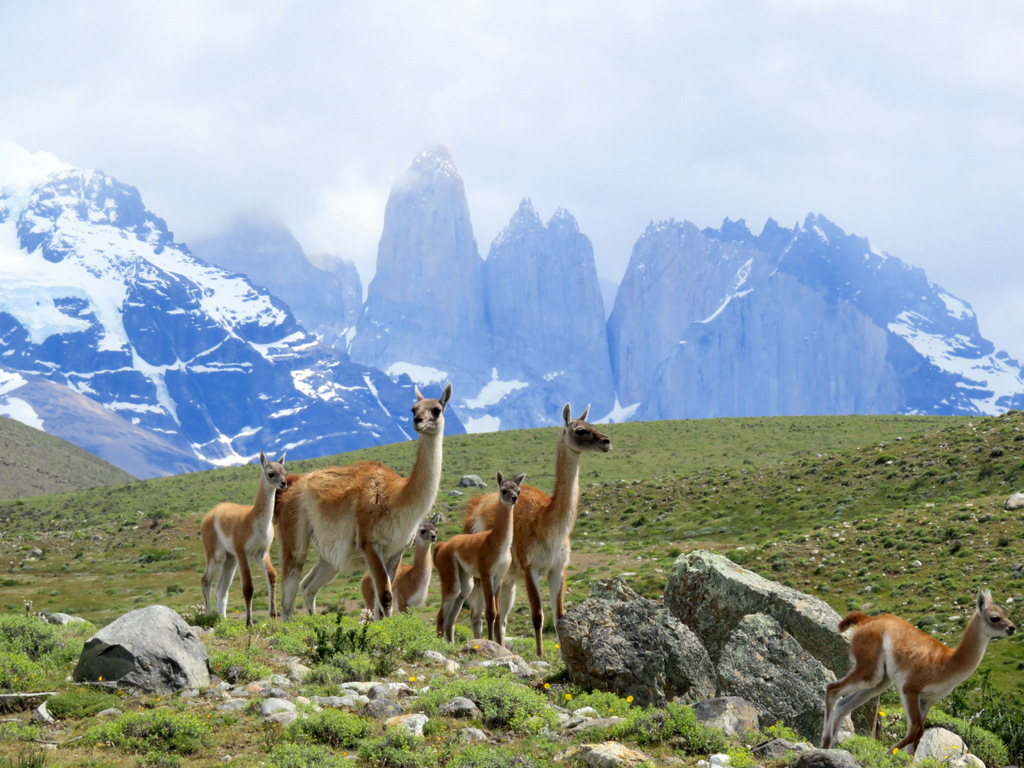
When you first drive up to the visitor center at Torres, this is what you see. I just can’t stop taking pictures of the guanacos.

Our camp spot for a few days.
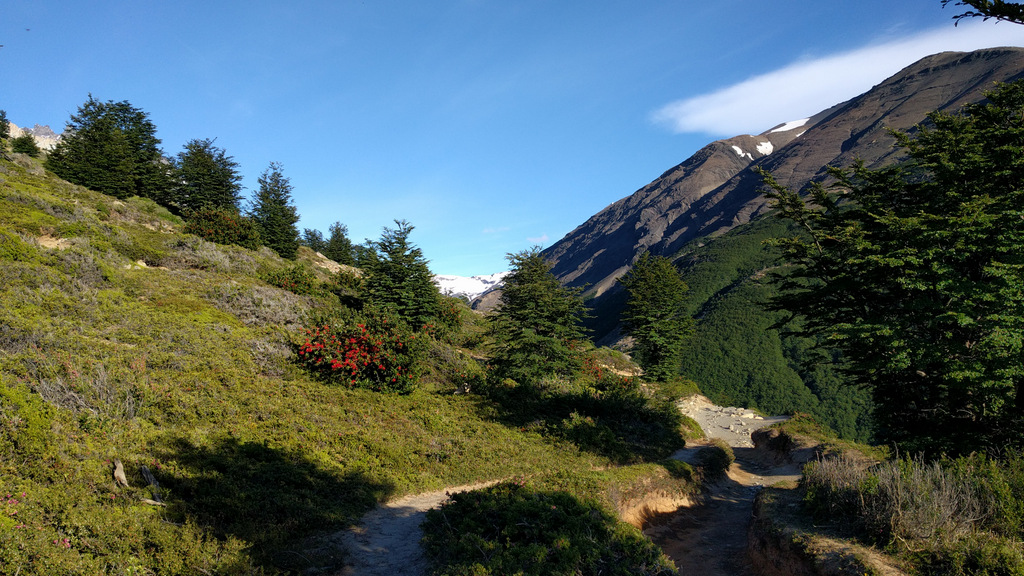
The trail Günter took up to the mirador, right side and start of the “W” treck.
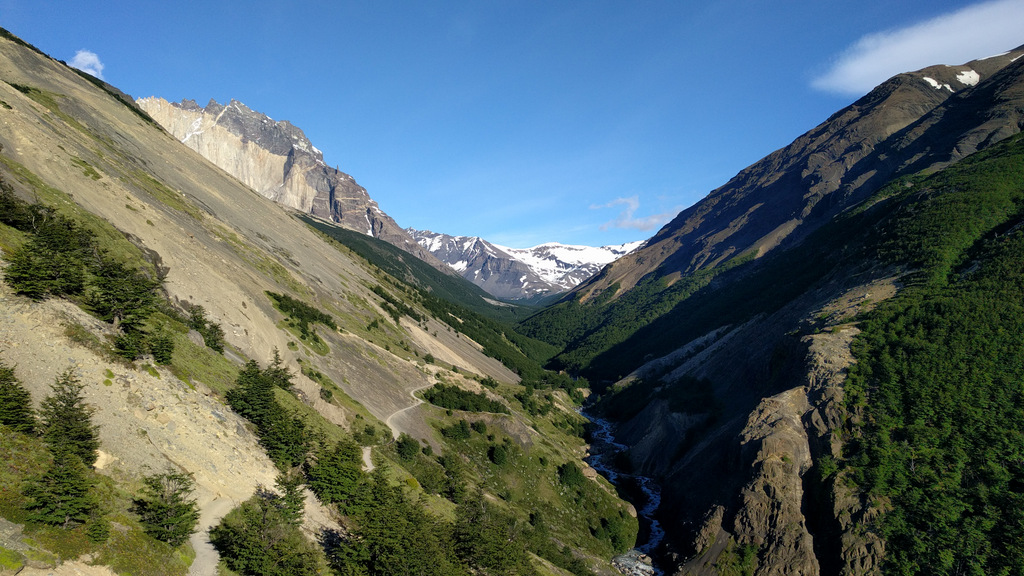

Meanwhile, down below, the rest of the hikers get going.

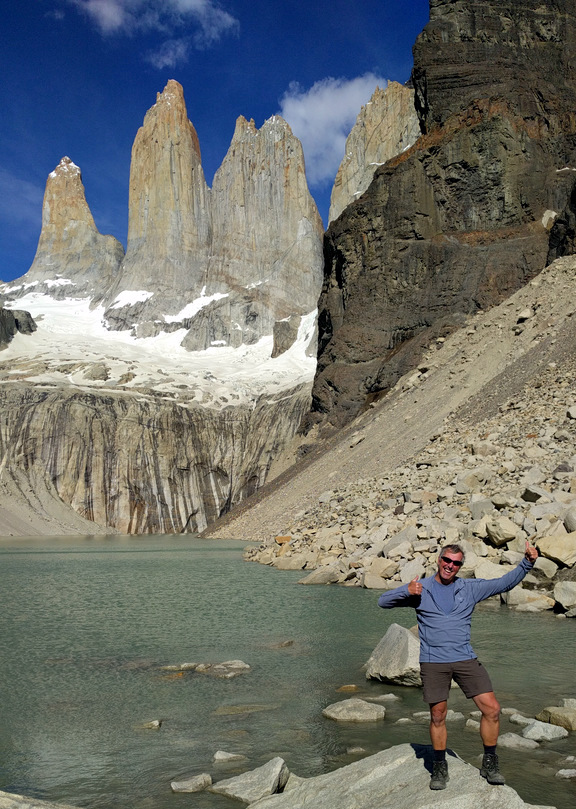
The mirador!!! What a view!
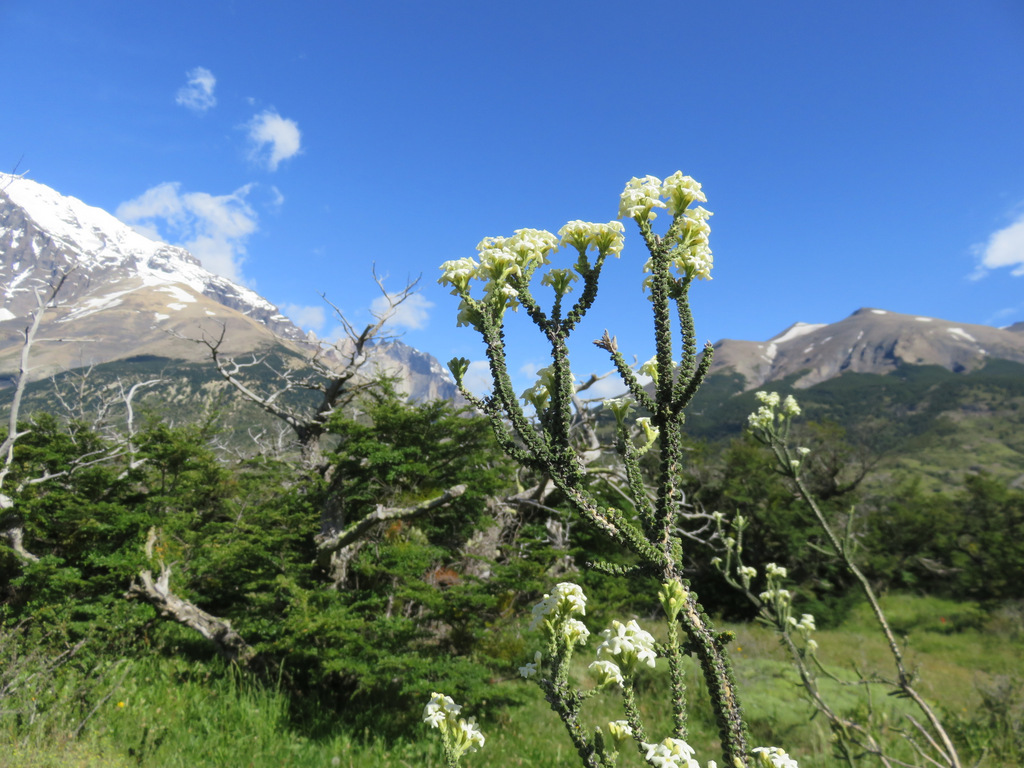
Mata Negra, I love the smell of this bush.

The mountain in the back is called Condors Nest, the story of the name is on the next photo.


Orcida Porcellana
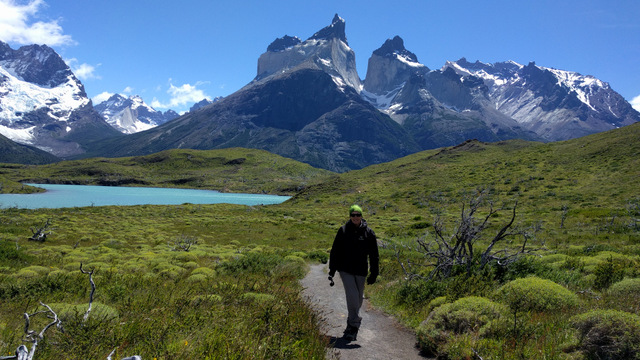


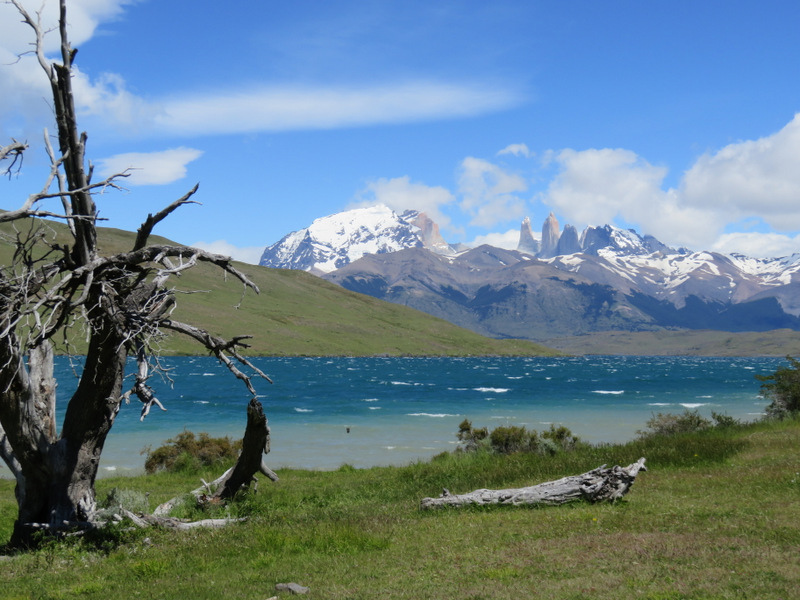
Lago Azul

Lady Slippers

Ushuaia to Puerto Natales, going north again.
Back in Ushuaia and with our heads still filled with the images of penguins and icebergs we picked up our camper and said good-bye to the friends we had made on the boat. When we drove out-of-town we reflected on the fact that for the first time we were heading north. Since we left Juneau we had been driving south, the goal was to make it to the southern tip of South America. And we made it! Now it is time to head back, we planned to work our way up the famous Carretera Austral, a road in Chile that winds its way up along the west coast of the continent. On the map it looks a lot like Southeast Alaska. High mountains, dense forests, glaciers, fjords and countless islands.
As it turned out, it WAS very much like Southeast Alaska, our other home.
On our way we visited famous places like Torres del Paine, Mt Fitz Roy and Perito Moreno.
Driving through the vast estancias with their sheep, cattle and wild guanacos it makes you think of the people who live here. So remote and so windy. Yes, the wind is still an issue and it is relentless. Often there is no place to hide and it grabs you (and your vehicle) and shakes you and tries to knock you over.
The indigenous people here lived in simple shelters, hunted guanacos and were more or less naked. Wow, I am walking around wearing a down vest and wool t-shirt, hard to imagine. The wide open pampa is not really that wide open anymore. It is fenced off and many roads are gated. Not so good for the guanacos who don’t always make it when they get tangled up in the fence. Private property is a big deal. Once, when we camped beside a bridge (on public land) and I decided to go for a walk along a big river that ran through estancia land, it did not take long for the estancia manager to show up and question Günter about “the person that’s fishing out there”. He was nice and told Günter that this is a salmon river and they charge people to fish for atlantic salmon in their river. Well, I was not fishing, having commercially fished for salmon in Alaska and with a net for many years, I don’t really feel like angling. (Salmon and trout were introduced in Patagonia and are not endemic, they belong in the northern hemisphere. Between 1904 and 1910 Patagonia in Argentina imported numerous consignments of fertilized eggs of brook trout, landlocked salmon and lake trout from Canada. Patagonia also received shipments of brown trout eggs from Germany, France, Belgium and Great Britain. A consignment of rainbow trout eggs came from the United States and Germany. The United States was the source for the fertilized eggs of sockeye, coho and chinook or king salmon.)
The estancias have huge shearing sheds, butchering sheds and corals for separating the animals. The horses are beautiful, sturdy animals with a nice gait, it is a beautiful sight to see the gauchos on their horses herding the livestock with their dogs.
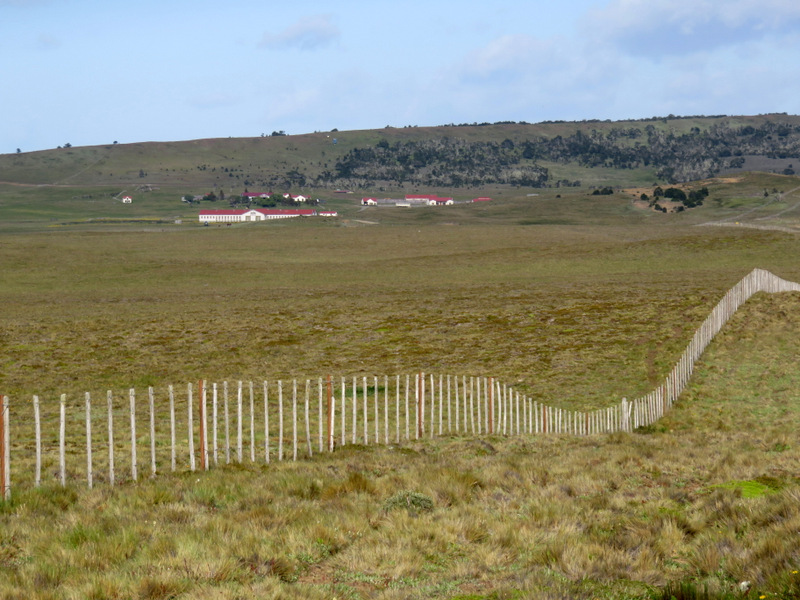
An Estancia

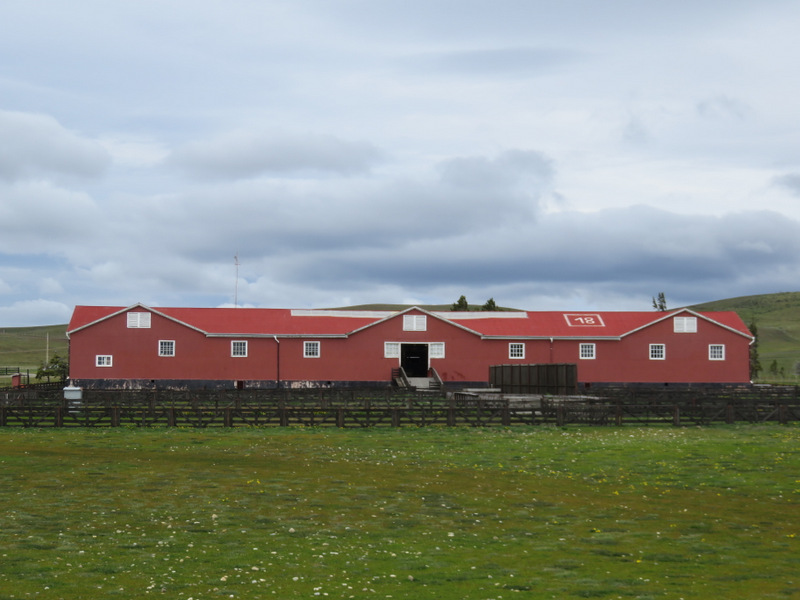
A huge sheep shearing shed
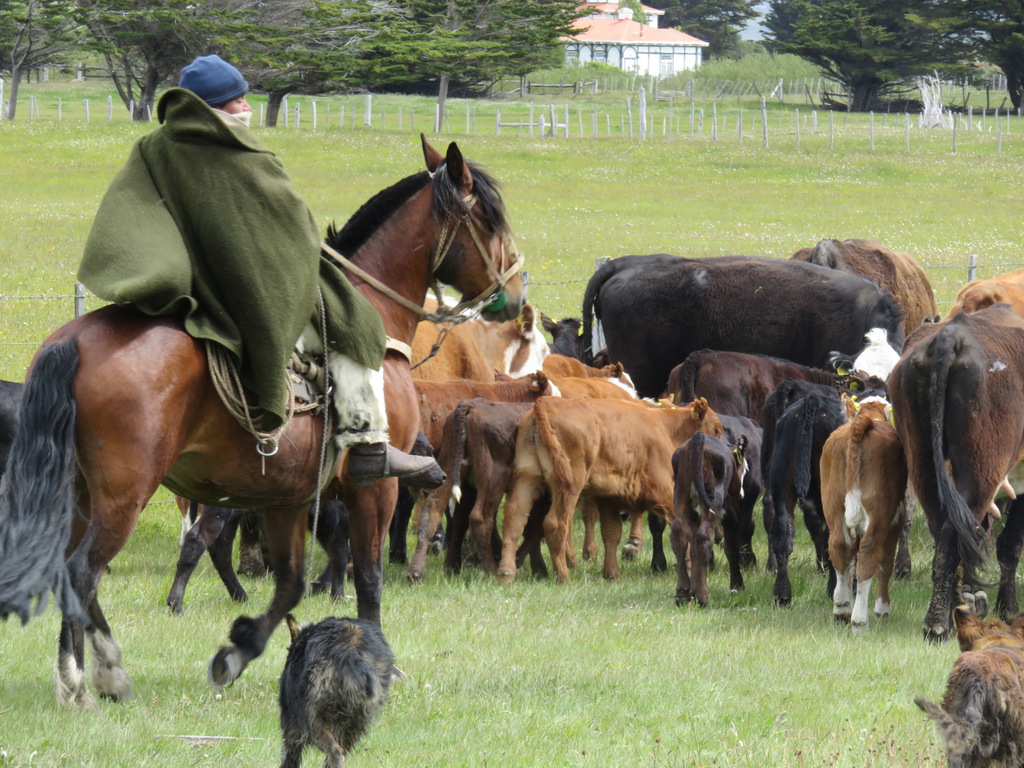


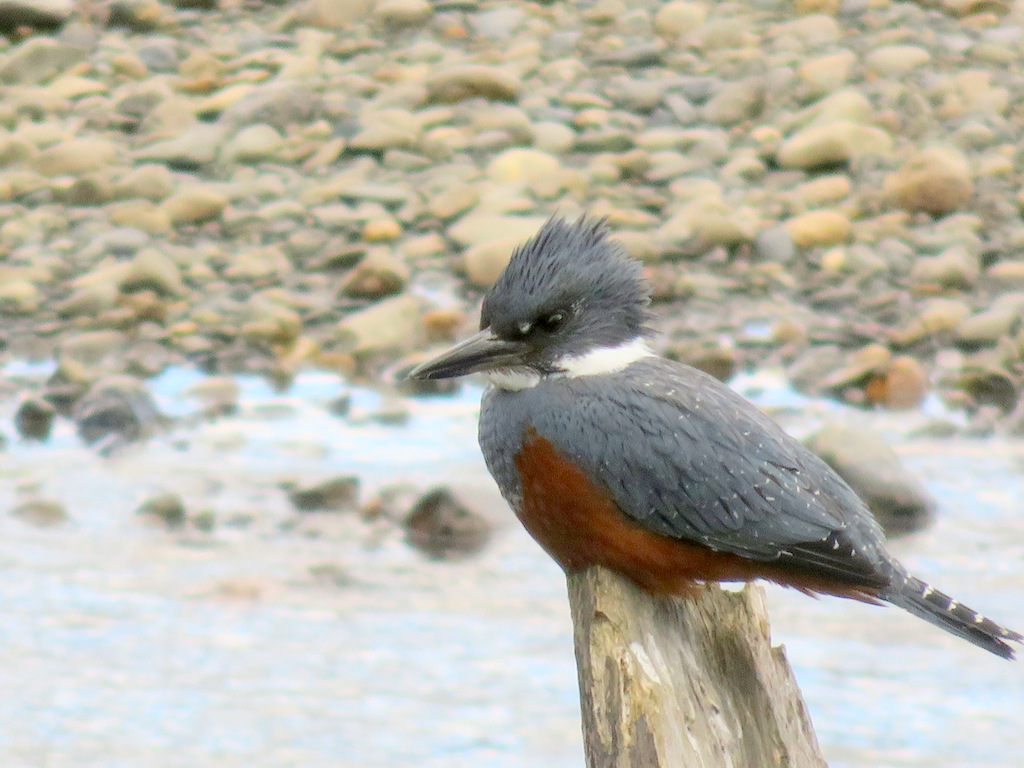
Ringed kingfisher, he had a nest in the river bank near our camper.

We camped in a field in the middle of an old growth forest of lengas, a southern beech (deciduous). A formidable tree that can withstand the fierce winds and rough climate of Patagonia. It reaches an average of 30 meters (~100 feet) in height. Its leaves are small and green with sharp, toothed leaf-margins. Come autumn, the lenga puts on a striking color show across the mountainsides. As the weather begins to chill in April, its leaves change from green into a fiery array of yellows, oranges and reds.
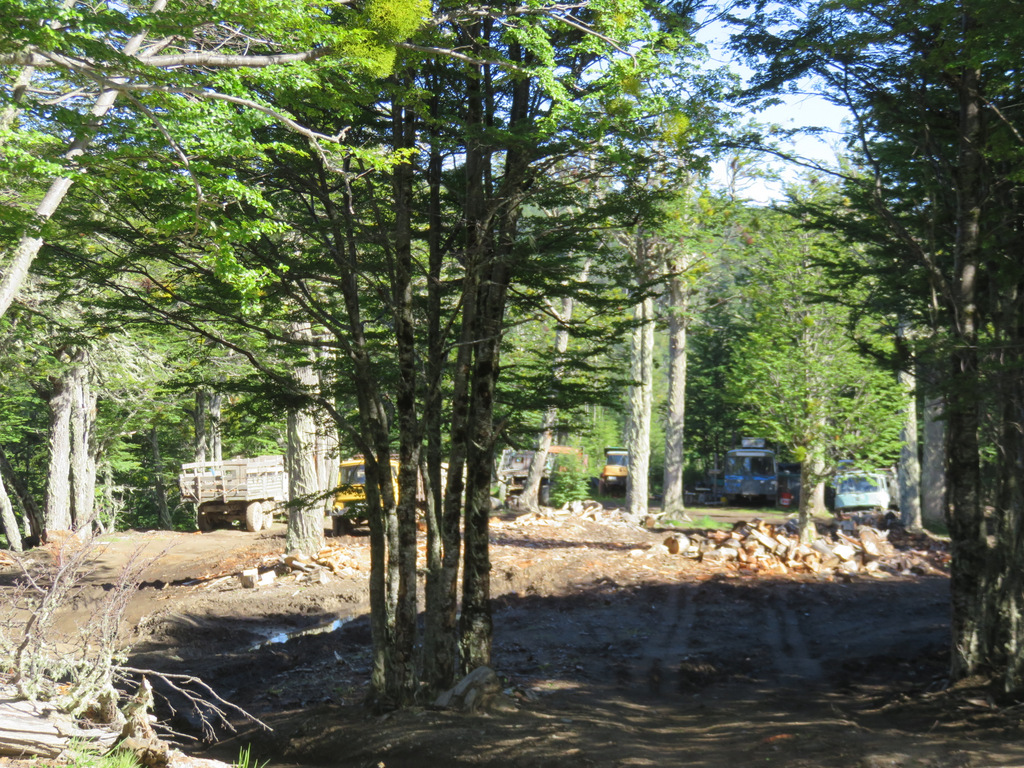
Sadly, the trees are logged out in many places and have to make room for faster growing foreign species like pines and firs.
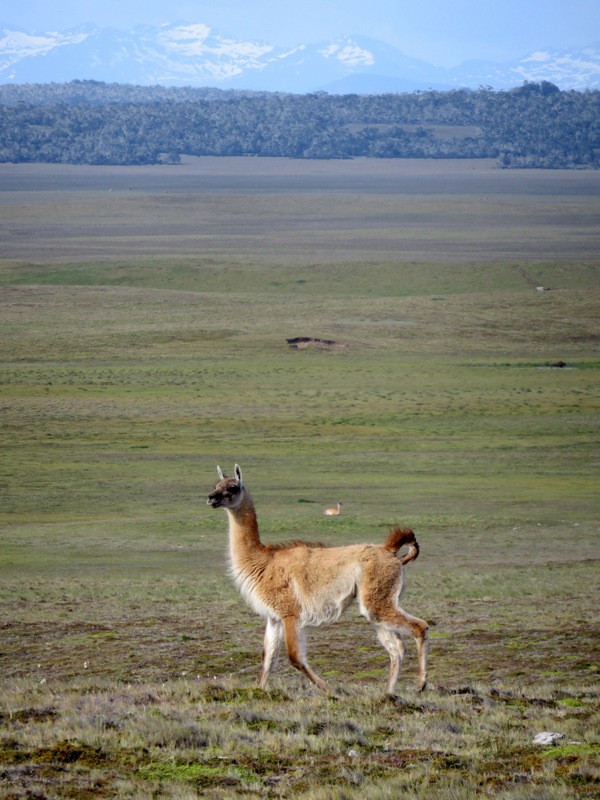
Guanacos share the pampa with the foxes, rhea and livestock.

Campanilla (Streaked Maiden)

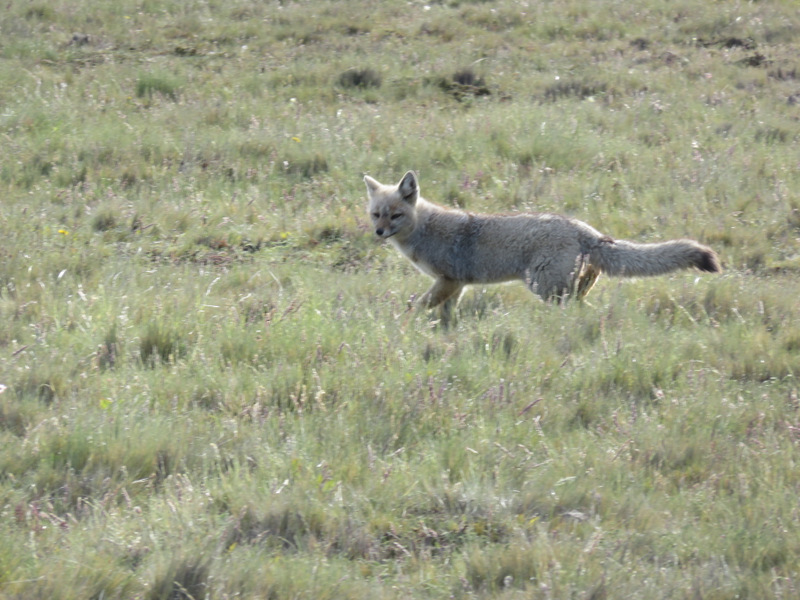
South American grey fox.

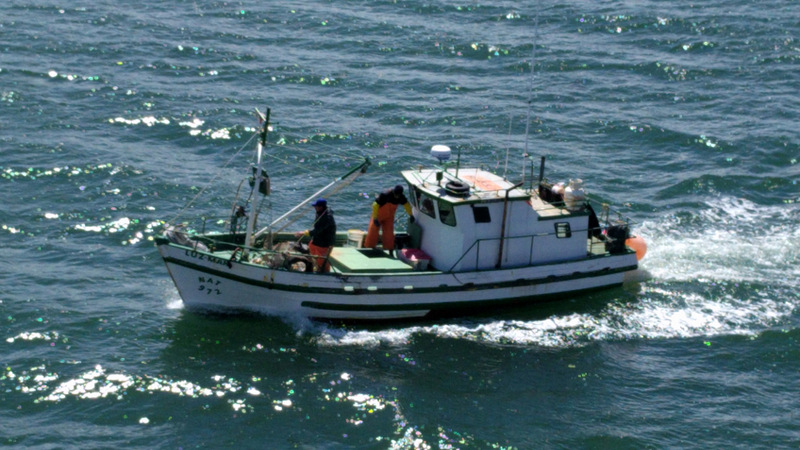


The fishing fleet.
To go to Torres del Paine we crossed the border to Chile, stopped at some sleepy little towns, took the ferry from Porvenier to Punta Arenas and drove on to Puerto Natales. The sun was out and the fishing boats were in, so we bought a fish, broke out the bicycles and spent a few days there.

During the zenith of the sheep industry in Patagonia, two large “frigorificos” or cold-storage plants were constructed in the Natales area, of which one has survived. The plant at Puerto Bories, about 4 km NW from Puerto Natales, was a project of the Sociedad Explotadora de Tierra del Fuego. It was inaugurated in 1913 and in production until 1993. The Cold-Storage Plant was constructed in “Post Victorian Industrial” architectural style and features of number of British machinery examples which reflect the technology of the beginning of the 20th century.
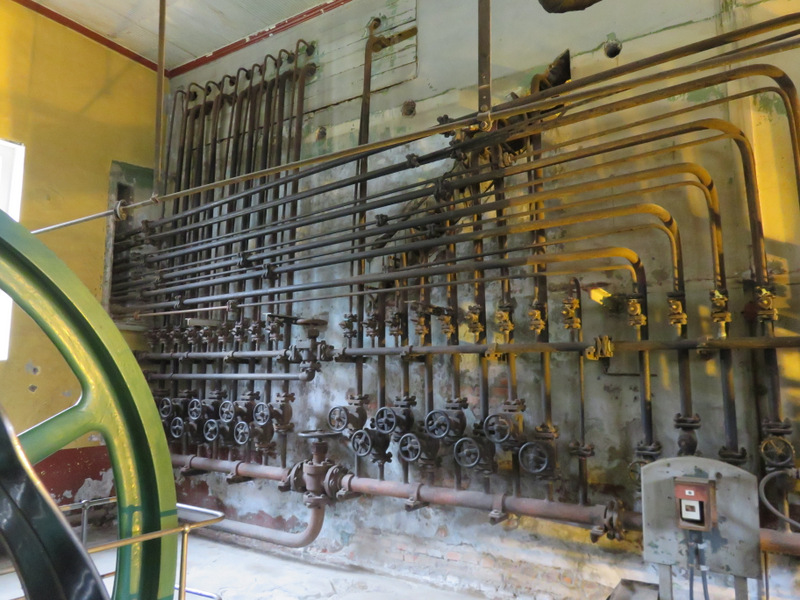

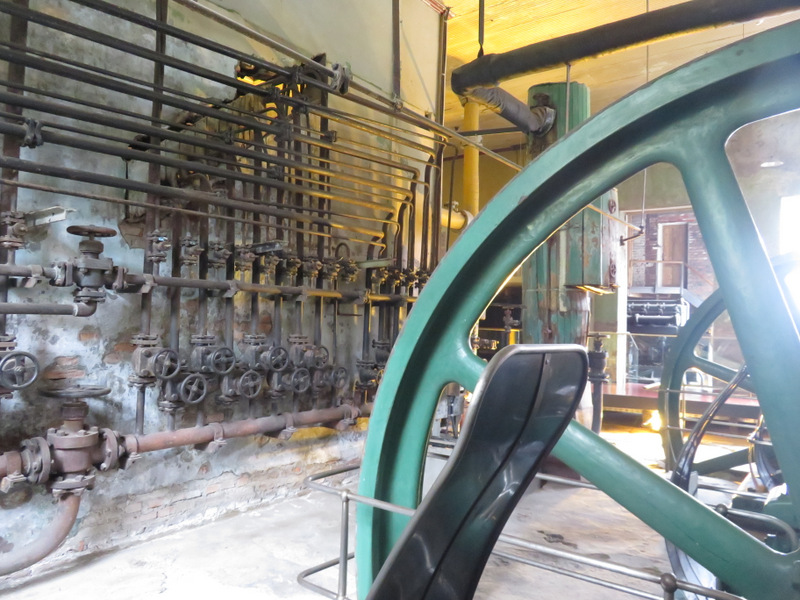
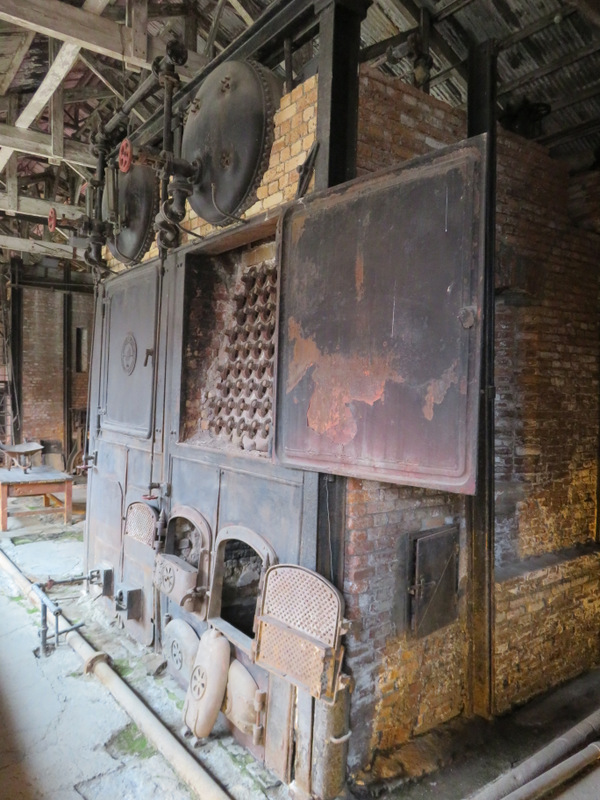
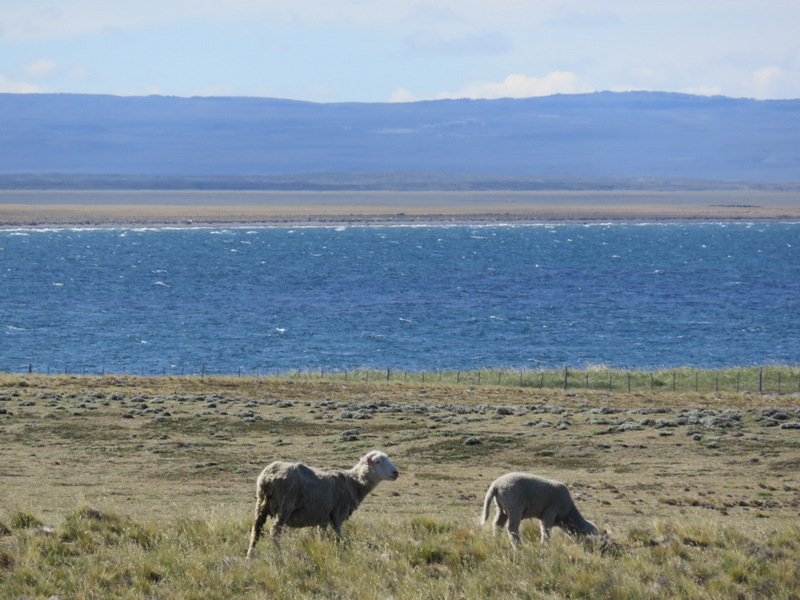
When the sheep industry collapsed and there were only two left (just joking) they turned the cold storage into a hotel (not joking) called “The Singular Patagonia”. We rode our bikes over there and stopped by for Kaffee und Kuchen.
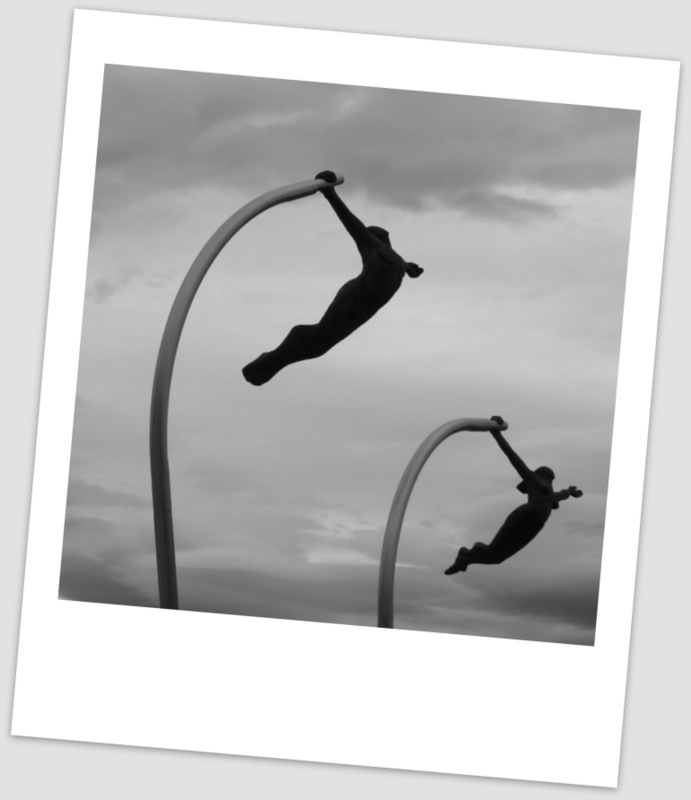
“Wind lovers”

The Antarctic Peninsula
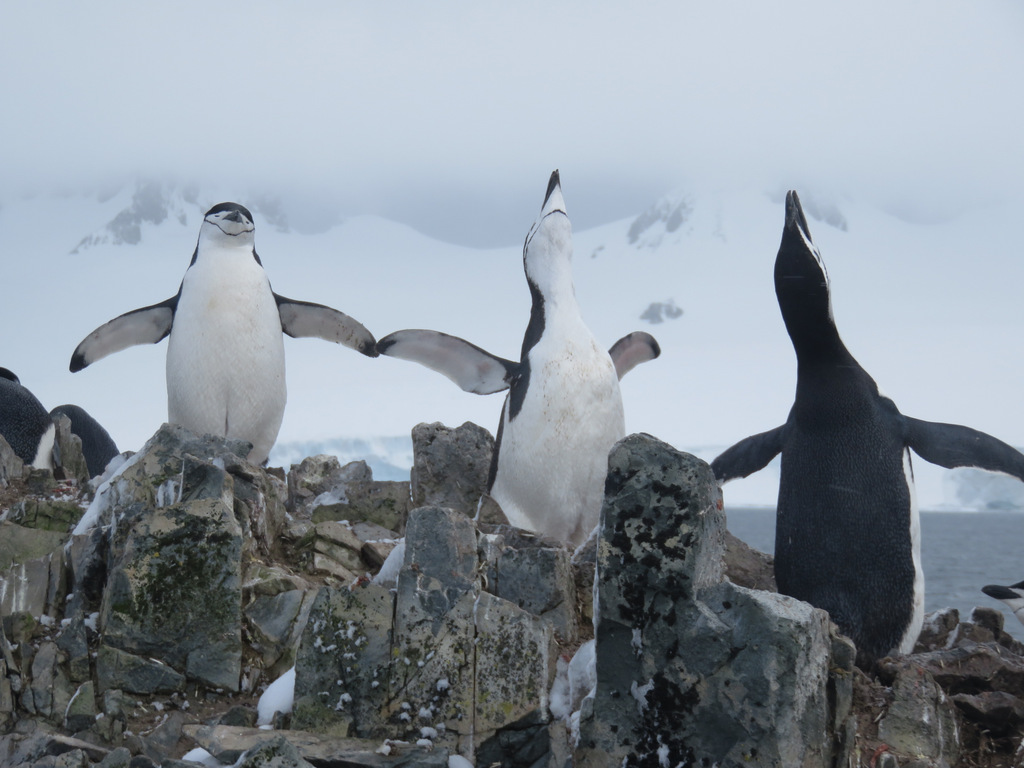 Antarctica made headlines not too long ago when a huge iceberg broke off and now is drifting off the continent. The one trillion ton iceberg, measuring 5,800 square km, calved away from the Larsen C Ice Shelf in Antarctica sometime between July 10 and 12 2017.
Antarctica made headlines not too long ago when a huge iceberg broke off and now is drifting off the continent. The one trillion ton iceberg, measuring 5,800 square km, calved away from the Larsen C Ice Shelf in Antarctica sometime between July 10 and 12 2017.
Global warming is on your mind when you go the polar regions of our world. Frozen but still rich in wildlife, life depends on the cold temperatures. Krill is the main source of food here.
There are some commercial fisheries going on, Ice fish, Patagonian Toothfish (sold as Chilean Sea Bass) and yes: Krill. Stocks are good so far and hopefully the krill fishing is not damaging to the eco system. Norway and Japan still kill whales here, and while they say it is for scientific purposes everybody knows that the whale meat is sold for human and animal consumption.
It took us two days to cross from South Georgia Island to the South Shetlands Islands and then on to the Antarctic Peninsula. The days at sea are by no means boring, there are presentations and lectures several times a day. We made new friends and met interesting people on this trip.
It was an international group, most guides spoke several languages and one of the guides spoke fluent Chinese. Naturally he spent a lot of time with the Chinese passengers which were very happy about that. While not all of our Chinese fellow passengers spoke English, I enjoyed talking to the girls. They adored our young guides. Dressing up for photo ops was very important and we had some good laughs with them.
One nice evening the crew put on a big BBQ on the back deck, another evening – on the back deck we had a beer tasting competition and Glühwein to warm up again after the cold beer. Haha, good thing the boat was stuck in the ice and did not rock, so we made it back to the cabin without bouncing off the walls.
We both liked spending time on the bridge, a familiar place for us since we make our living and spend a lot of time on our boat. The captain, from Russia, did a great job handling this ship, it was interesting to watch the crew do their job. They are always on the lookout for icebergs and for things that might be interesting to the passengers and would point out some whales or birds.

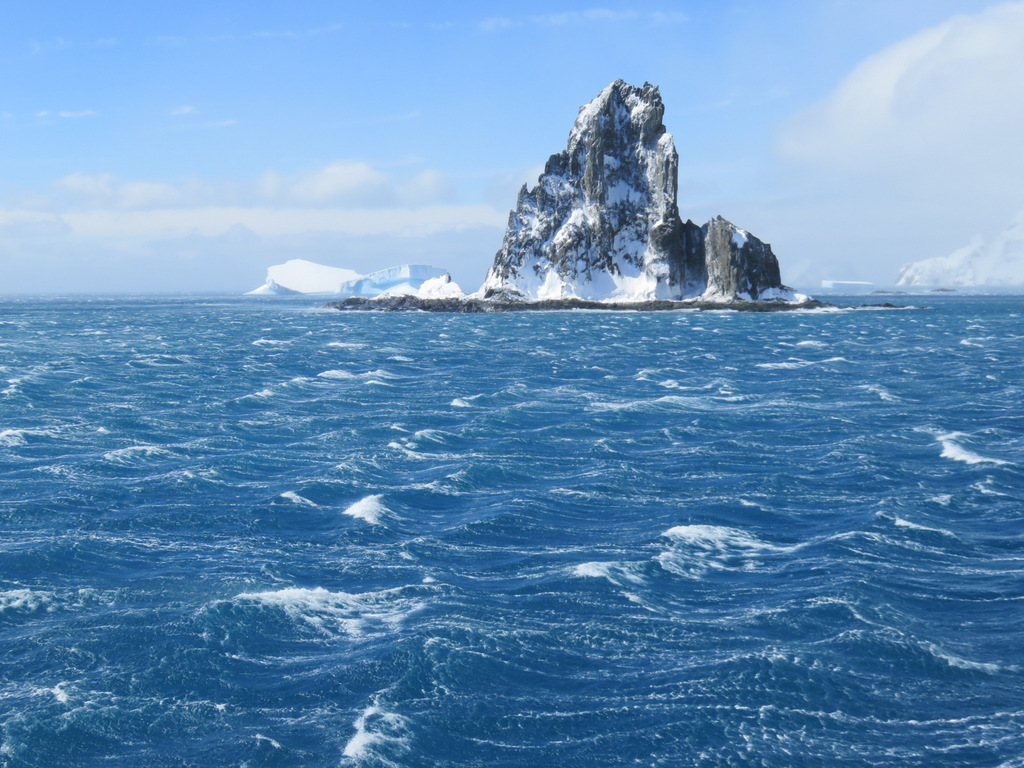

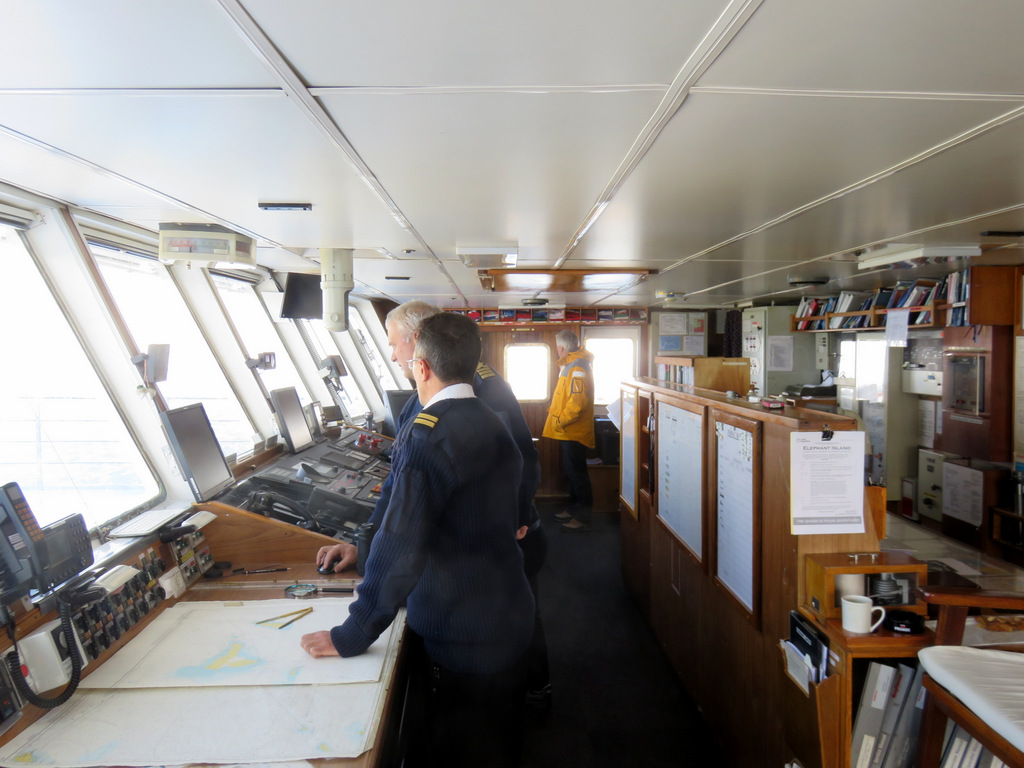

The penguins climb very high and breed up there





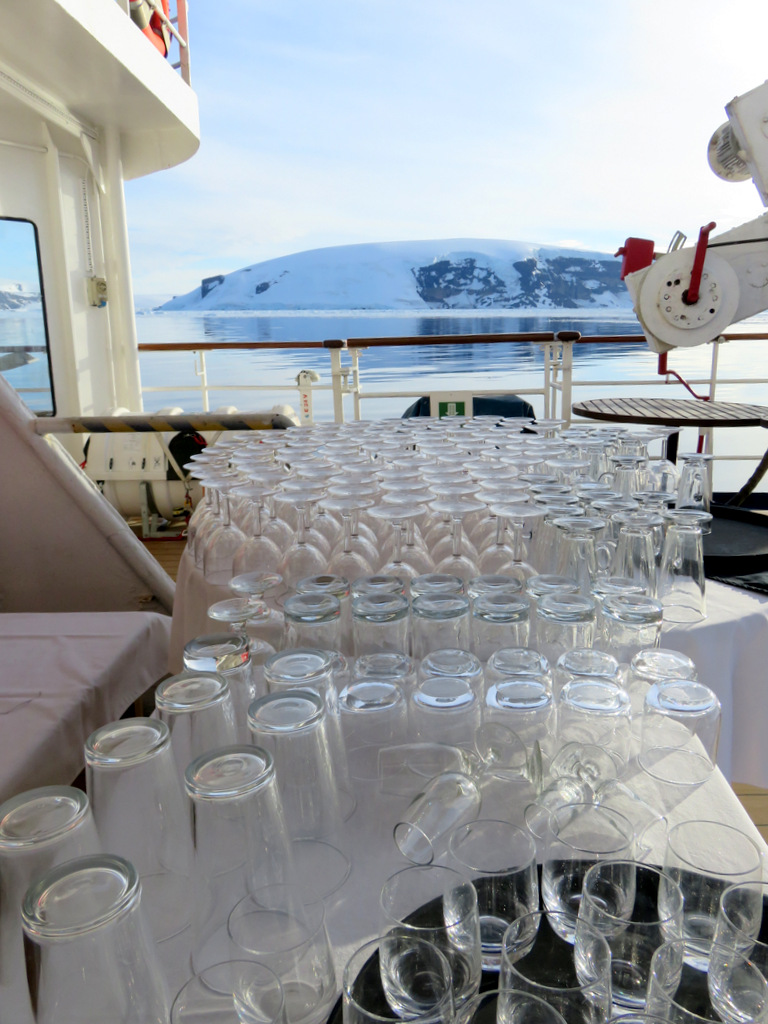
Tonight we will celebrate !
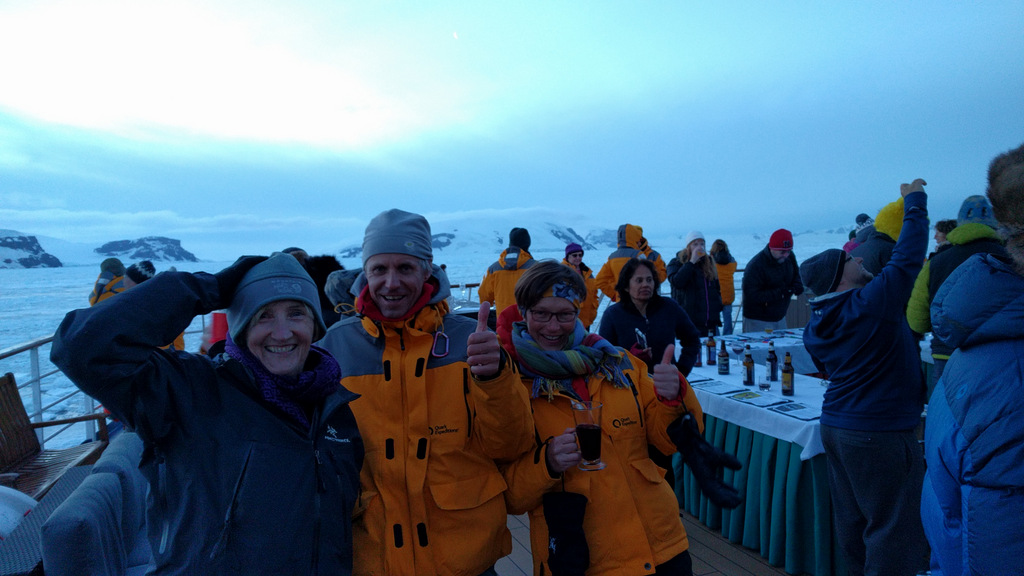

Sunrise

We were part of the group “Wild”, here we wait for our group to be called down to the zodiacs for another trip to the icy wonderland.
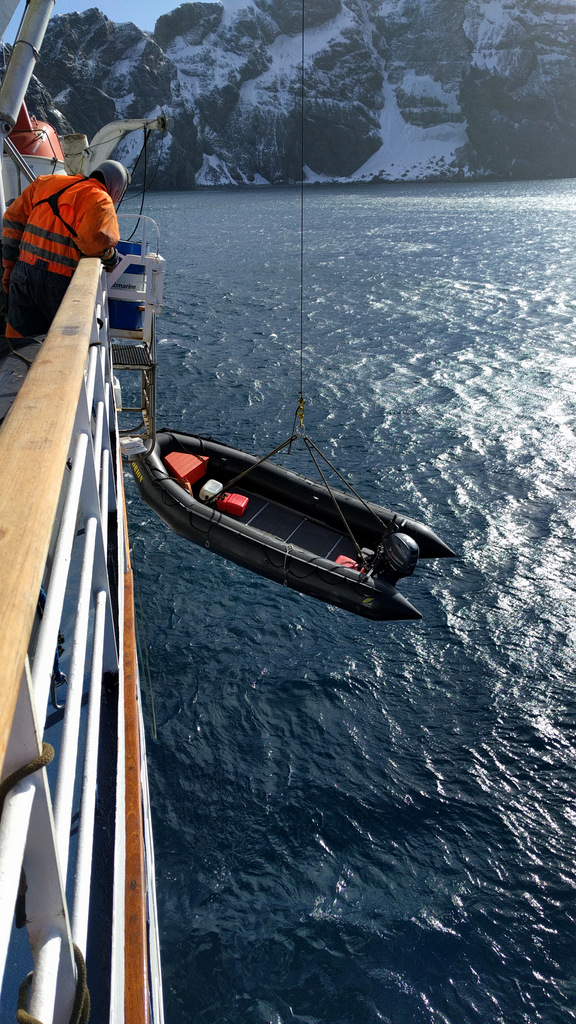
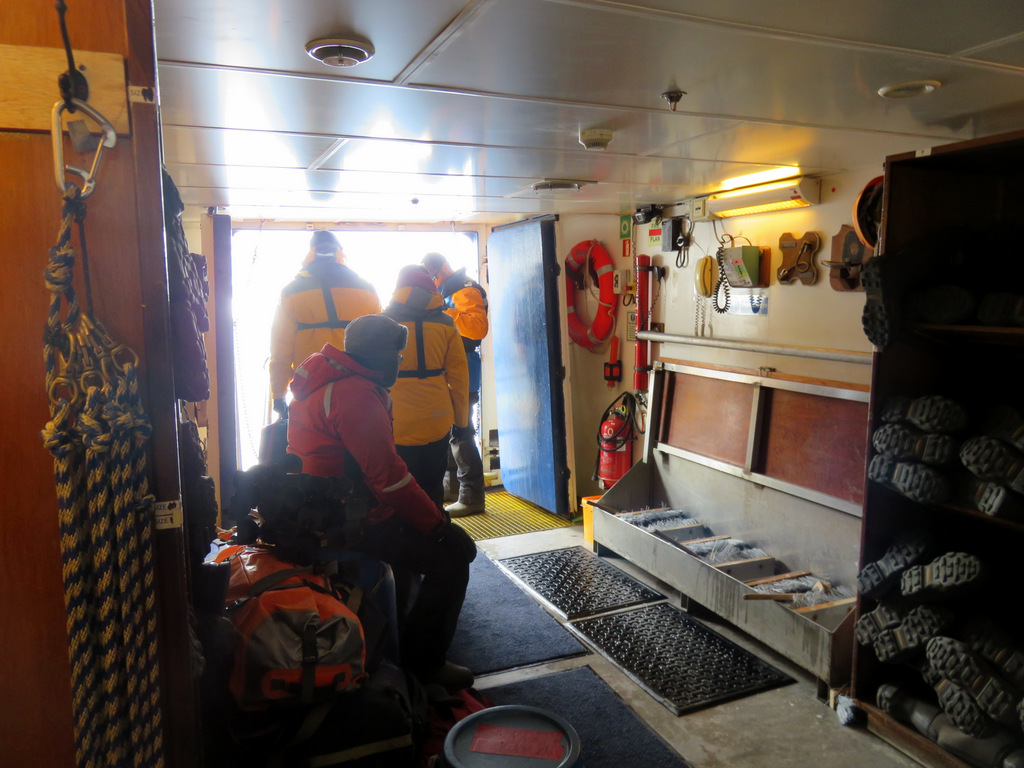
The boot washing station, coming and going we had to disinfect our boots to prevent introducing new organisms from one place to another.
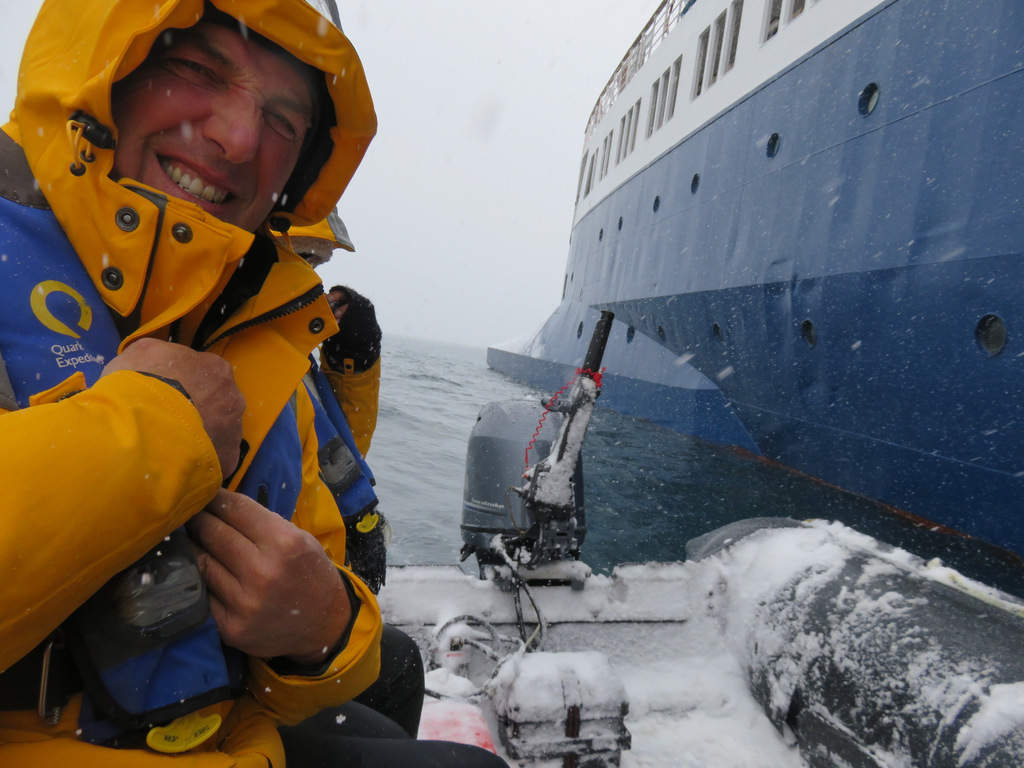


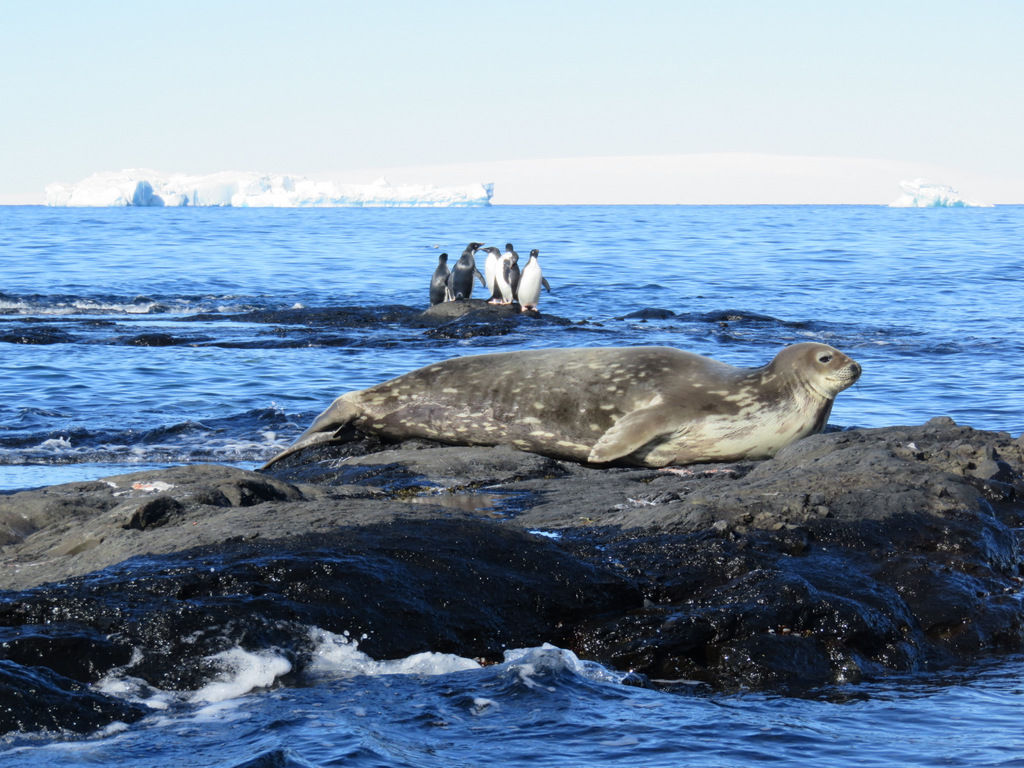
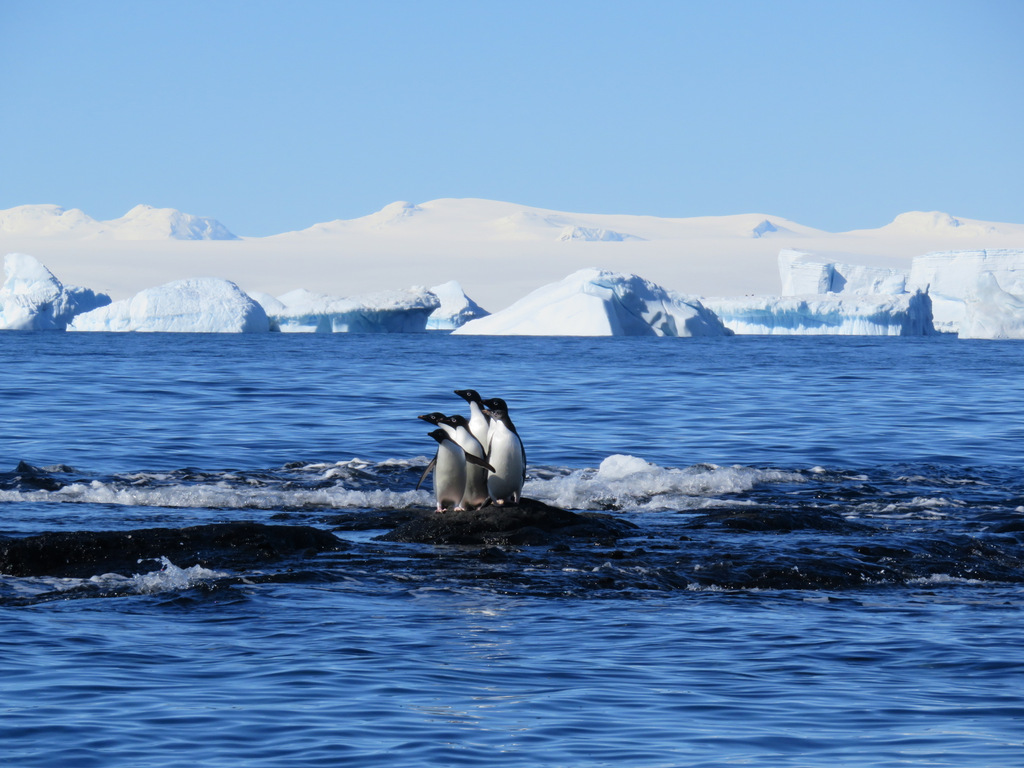


Sometimes you move faster when gliding and sliding.

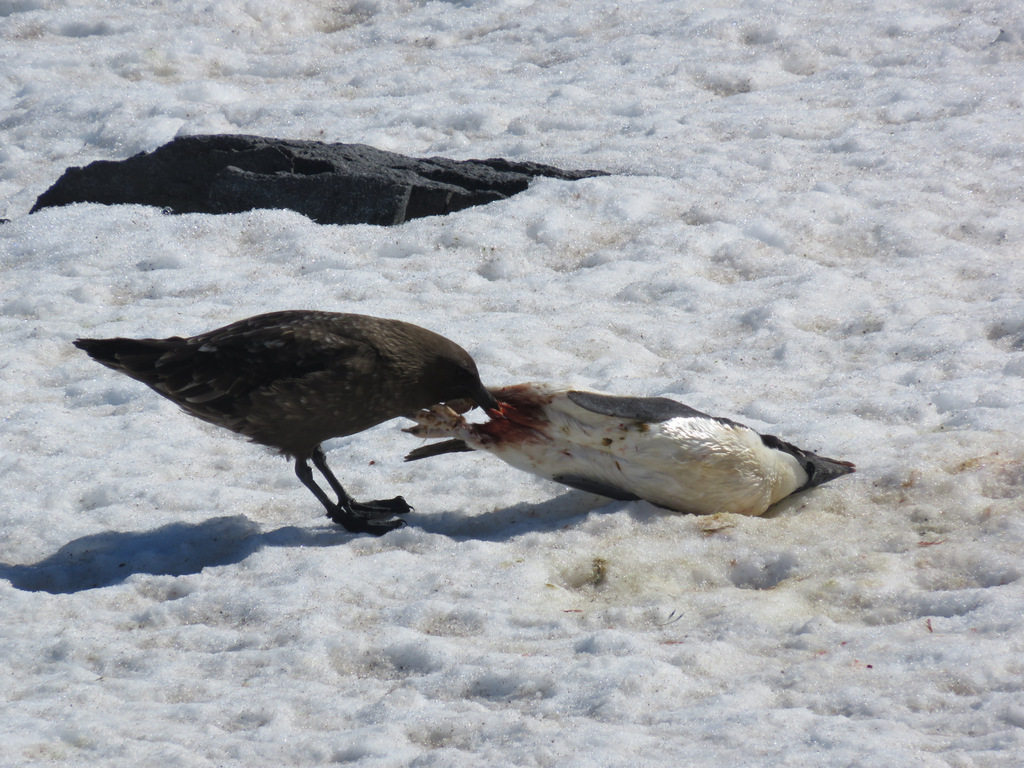
Skuas are always looking for lost chicks, dead or weak adults.


They are sitting on eggs, the nests are made of pebbles.

Headstand with penguins.



Pinturas (Petrels)

Adelie penguis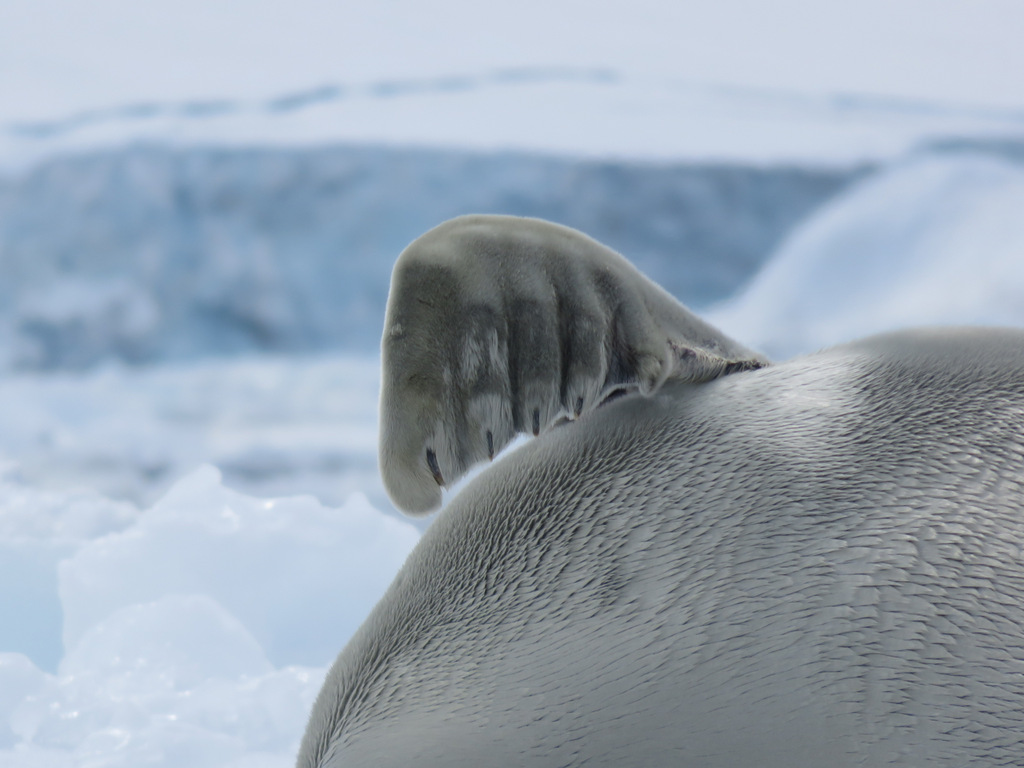
I love this picture.

I am giving the chinstrap penguin the right of way, they always have the right of way.
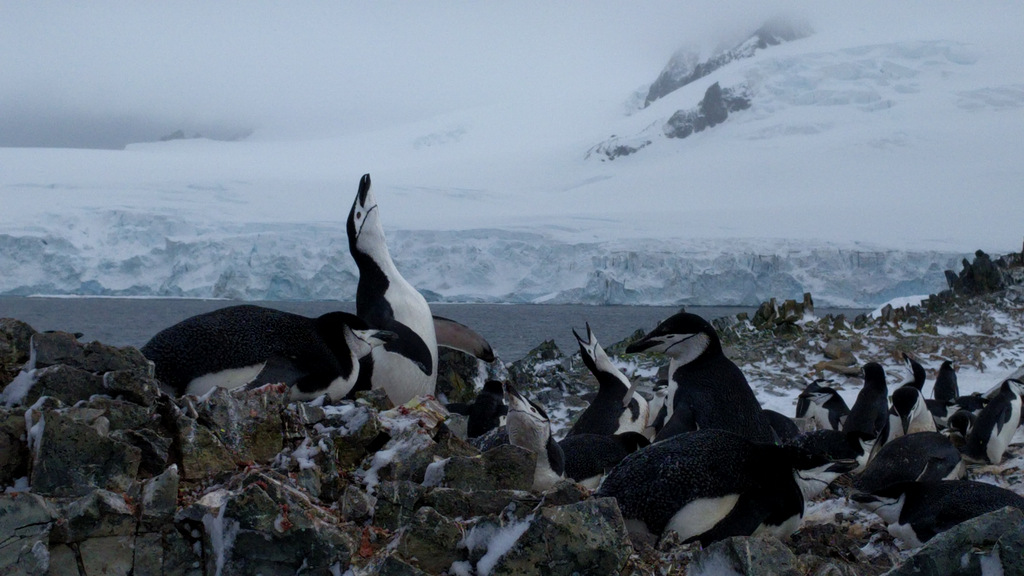
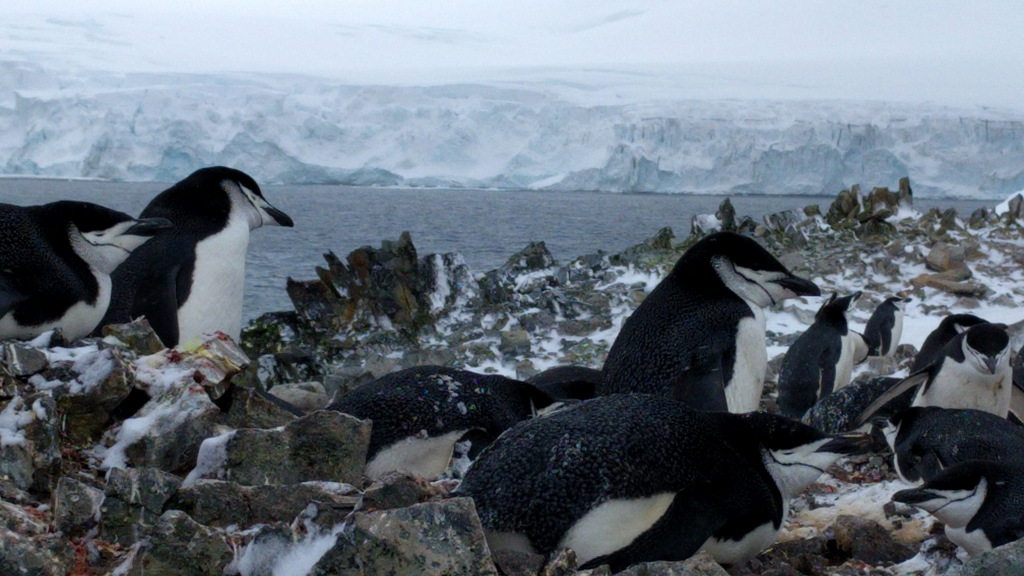
Chinstrap penguin rookery. The highest slopes are the most popular because they become ice-free first and they use their beak and claws to reach seemingly improbable spots.
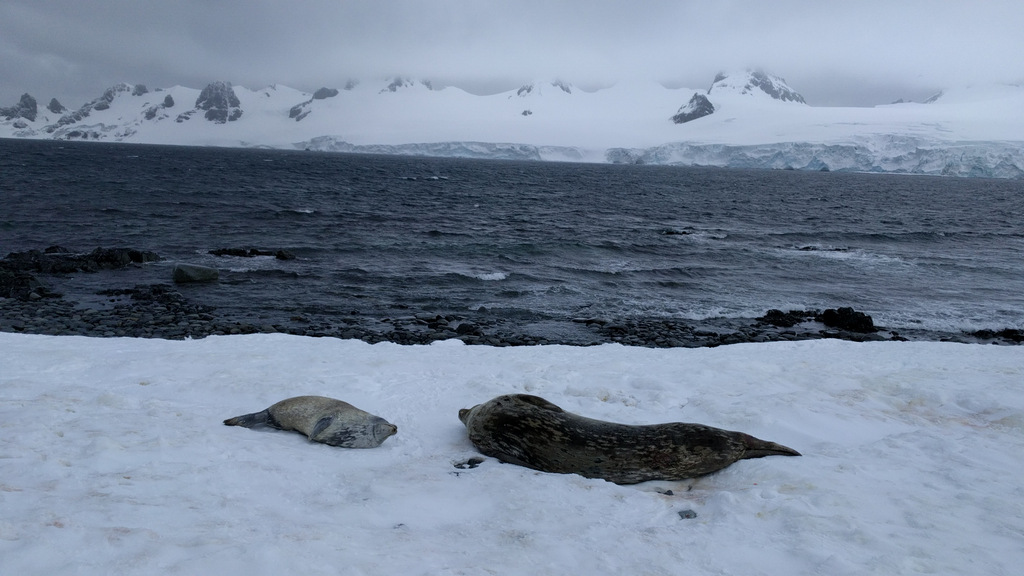
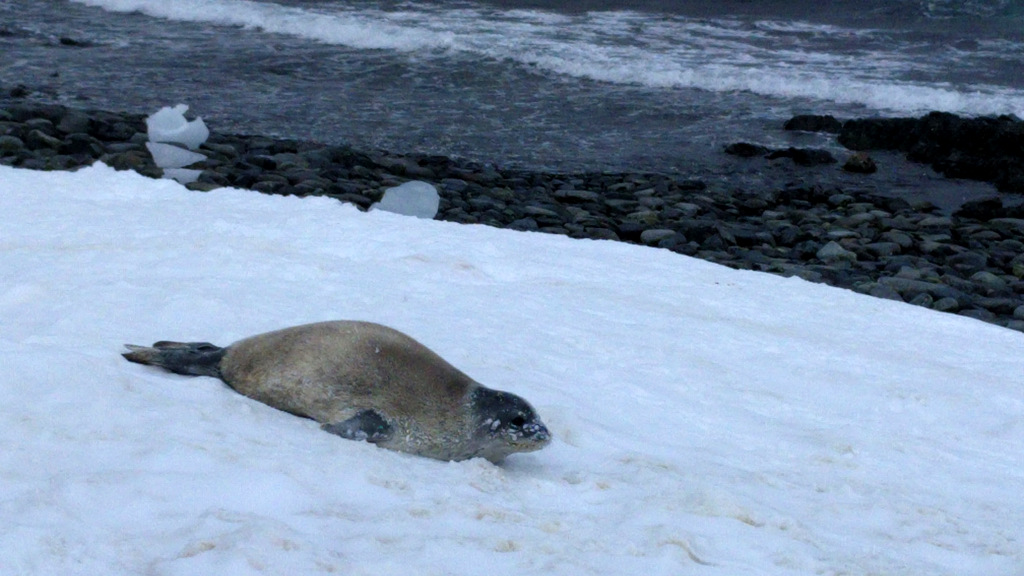


A chinstrap for sure.

Fred decided to join Günter.

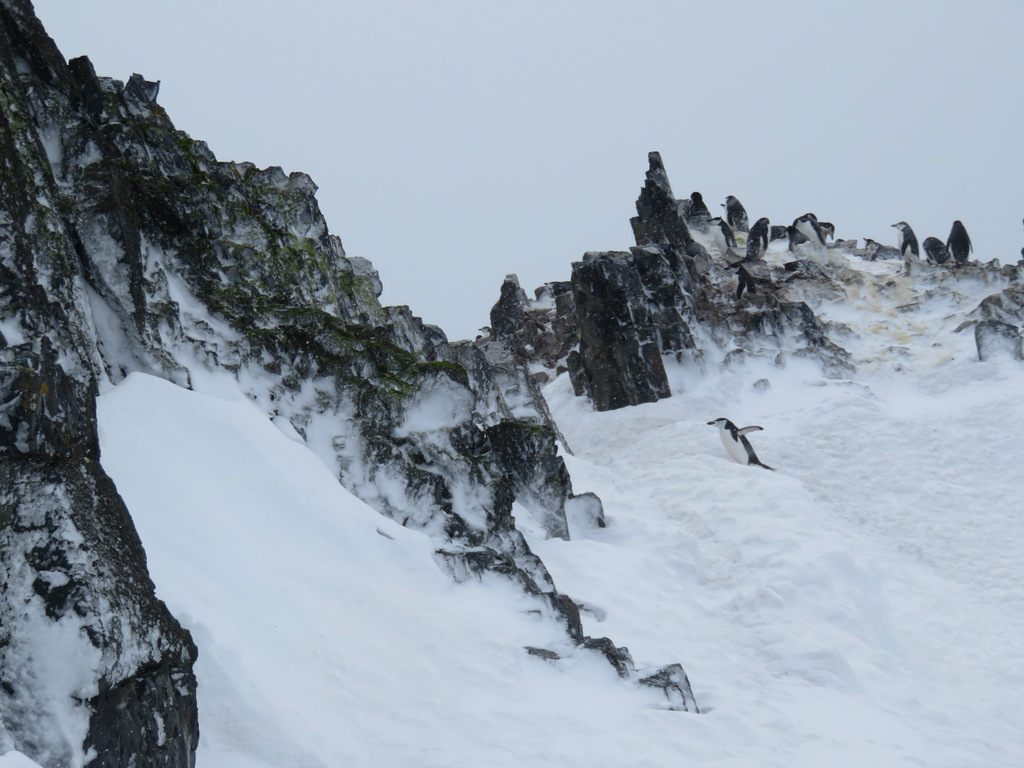

This guy carried a single pebble back down to the beach, who knows why?

Deception Island
in the South Shetland Islands, with one of the safest harbours in Antarctica. This island is the caldera of an active volcano, which seriously damaged local scientific stations in 1967 and 1969. The island previously held a whaling station;


Blue eyed shags.


One of our fellow passengers (from China), selfie time again.
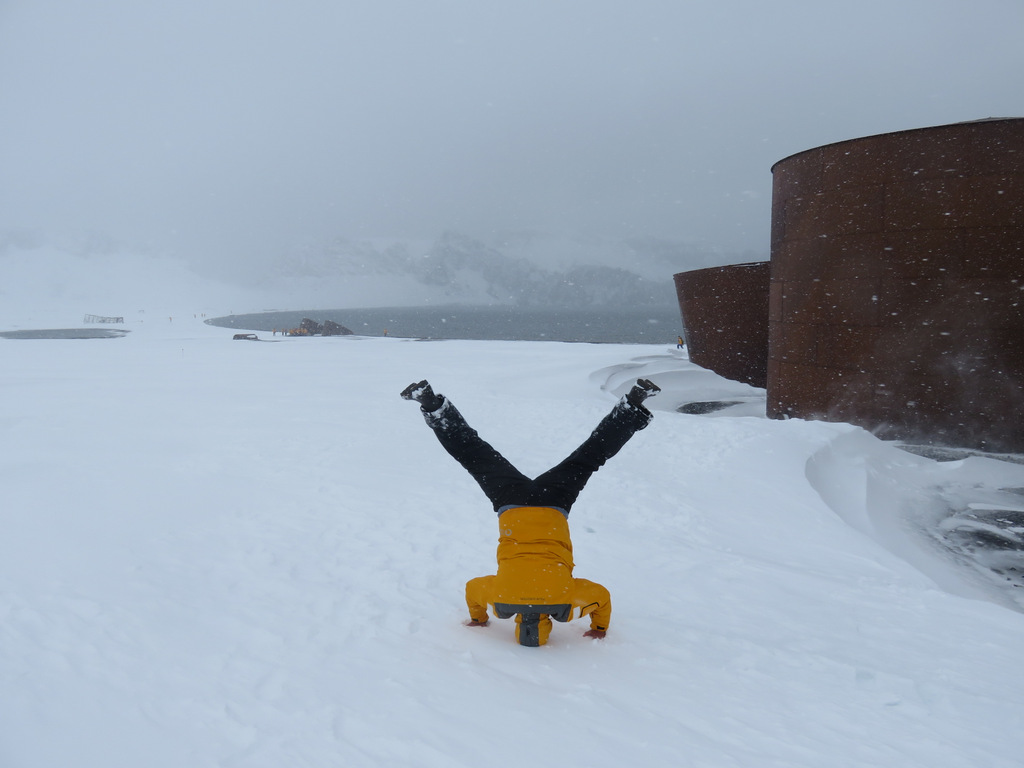

I really liked this place for some reason.

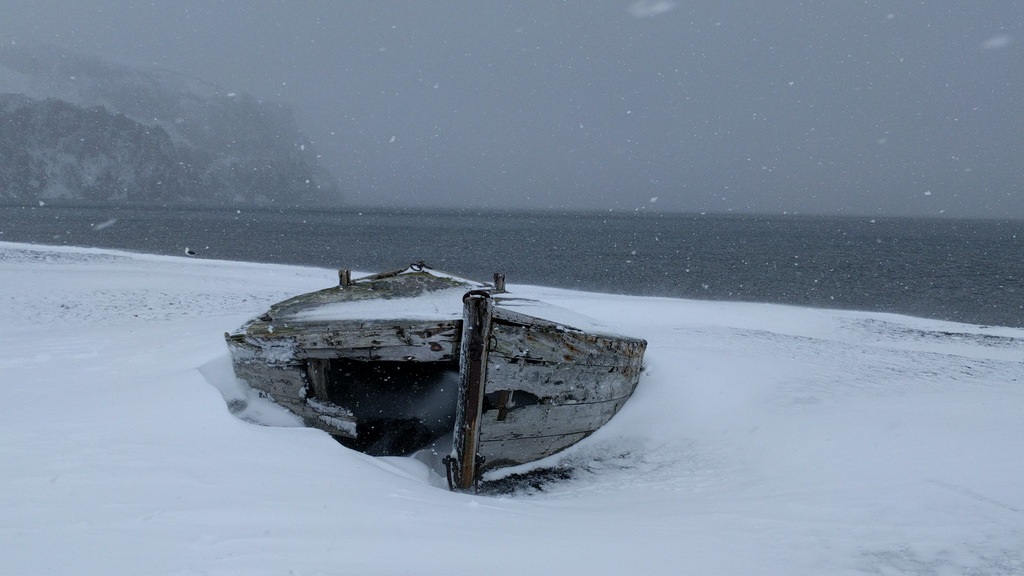
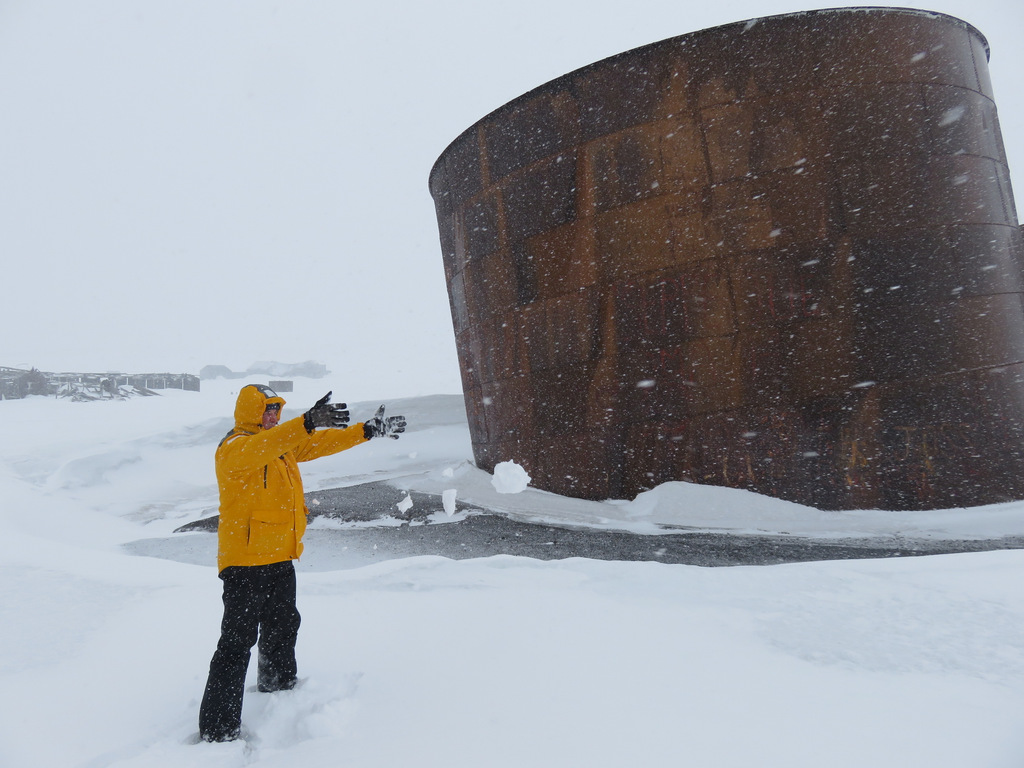
THE POLAR PLUNGE
Many people signed up for the “polar plunge”, the water was – 1° C (30° F)
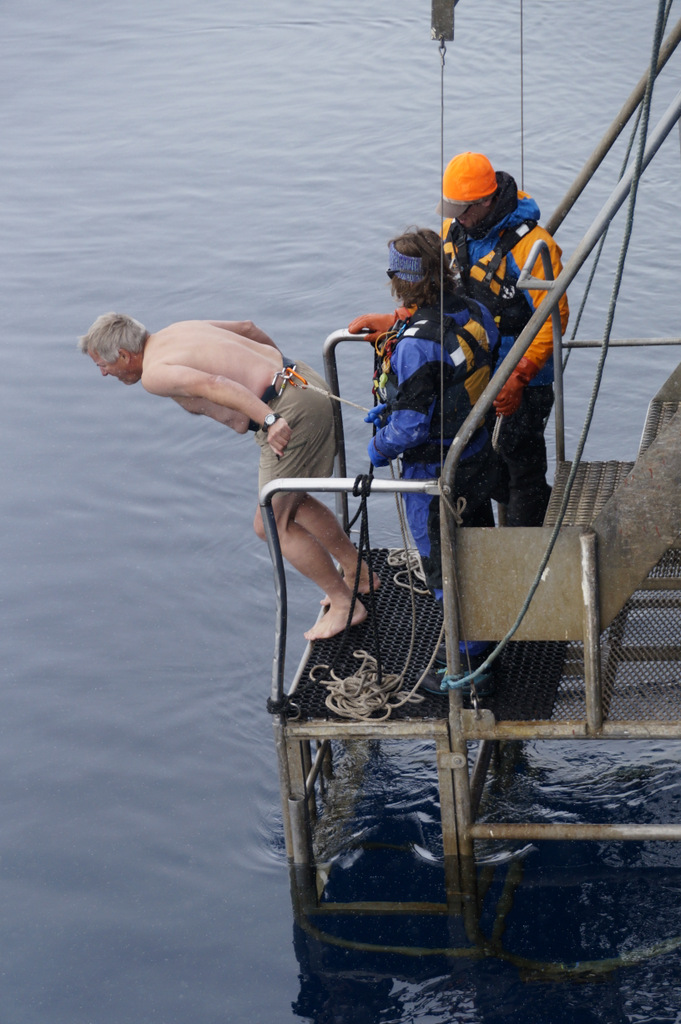
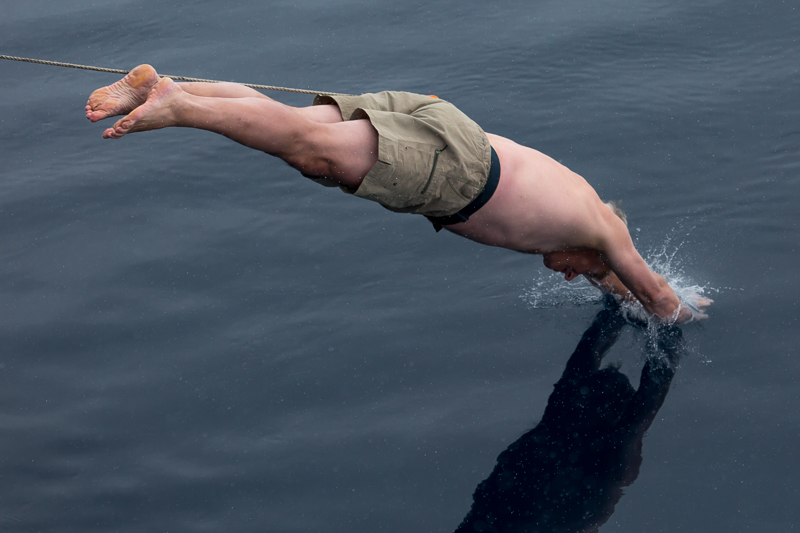
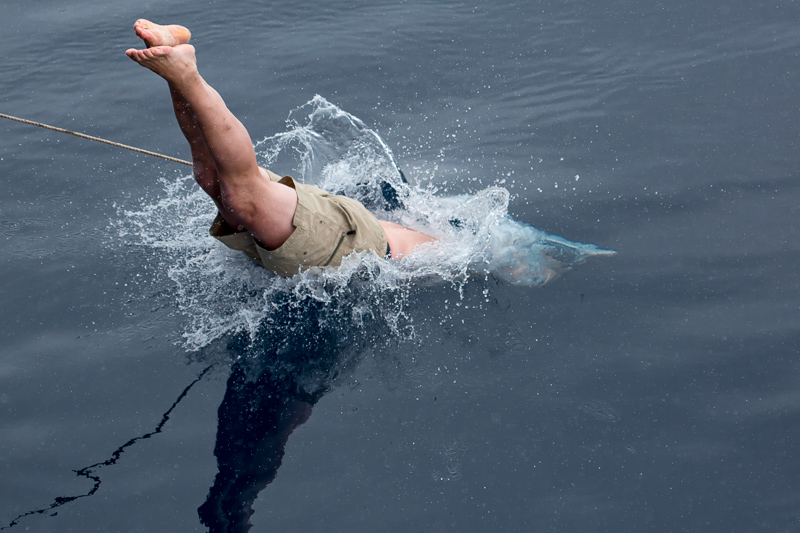

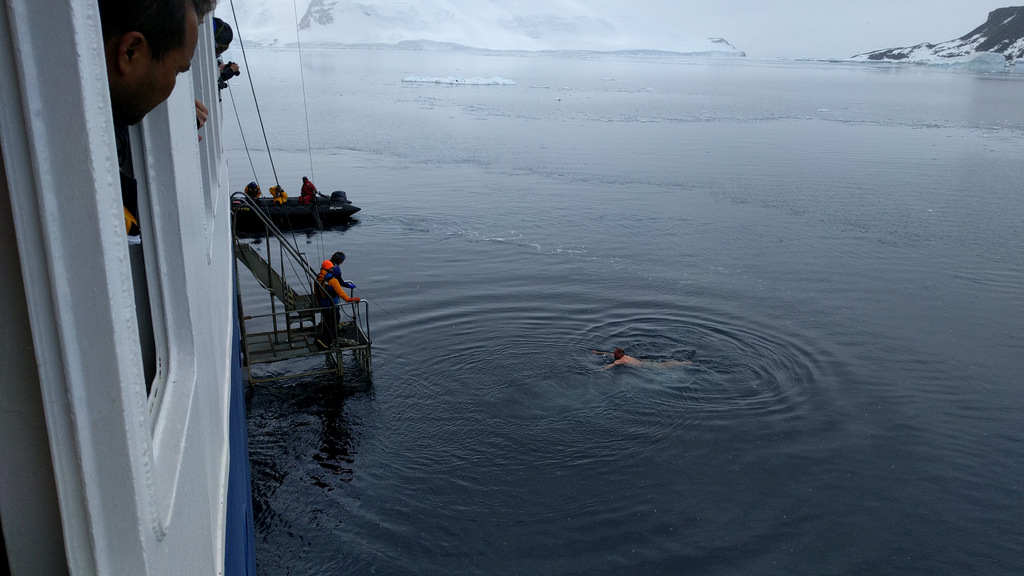

Drake Passage

The trip back was rough and wild and beautiful!
South Georgia Island
If you plan a trip to Antarctica, do NOT skip South Georgia Island! It was the highlight of our trip by boat. If you are familiar with Sir Ernest Shackleton and the “Endurance” you have heard of it. On his epic journey to find help for his stranded crew he ended up there, crossed the island from King Haakon Bay to the whaling station at Stromness Bay.
The island is covered in snow and ice, a windy place. We had to bundle up because of the wind chill, it really was not that cold there.The world’s largest breeding colonies of king penguins live here, close to 600 000. Their numbers are increasing. We visited several different bays and got to watch them. They, as well as the marine mammals on the beaches were totally fearless of human beings.
Life on the boat was great. Our room was comfortable and clean and soon we were settled in and enjoying the routine. This is not like a regular cruise, wake-up calls could be early, as early as 4.30 am one day. It all depends on the weather and tides. Bundle up, grab a quick cup of coffee and off you go. Not too much coffee though, because you are not allowed to go to the bathroom while on shore. The rules are strict when you step on the island, our boots get thoroughly cleaned before we leave the boat so not to introduce new plant material, even the velcro on the jackets gets checked for seeds. Rats have been a big problem here, they are slowly getting eradicated. (They did not check our pockets for rat babies 🙂

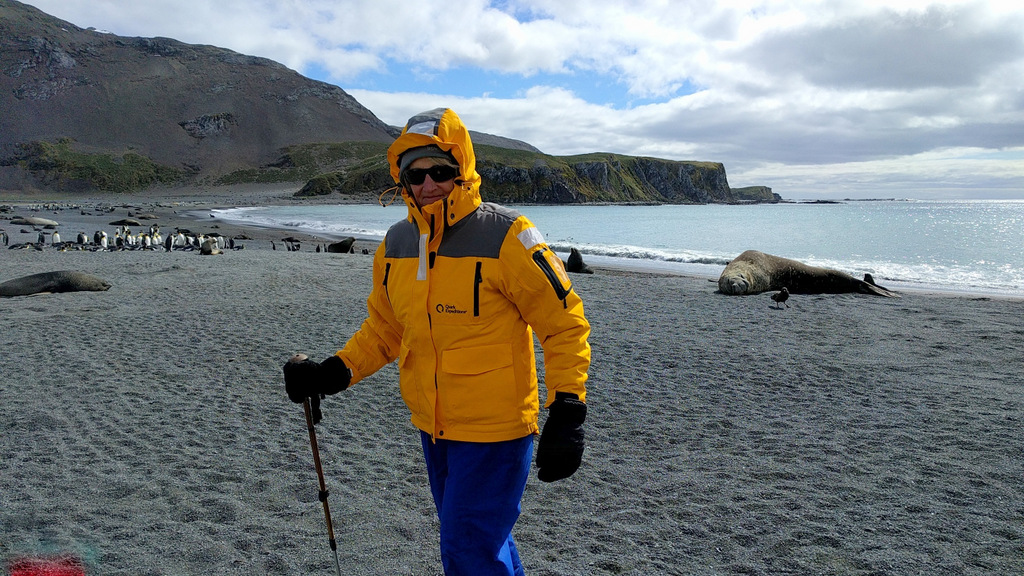
The Southern Elephant Seals rule the beach, our presence did not bother them at all. The hiking pole is also a way to keep the occasional pesky fur seal at bay.


King penguins

 Surfing King penguins
Surfing King penguins

“Oakum Boys” they call the fluffy brown King penguin chicks
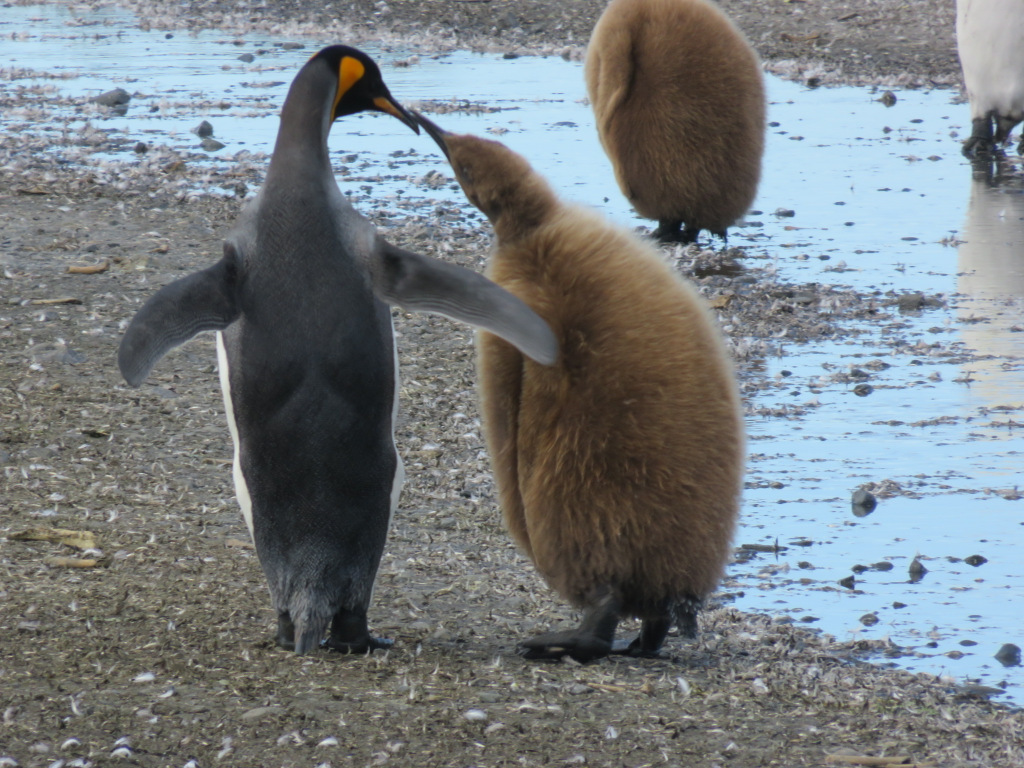
These chicks have already survived one winter and are still being fed by their parents.


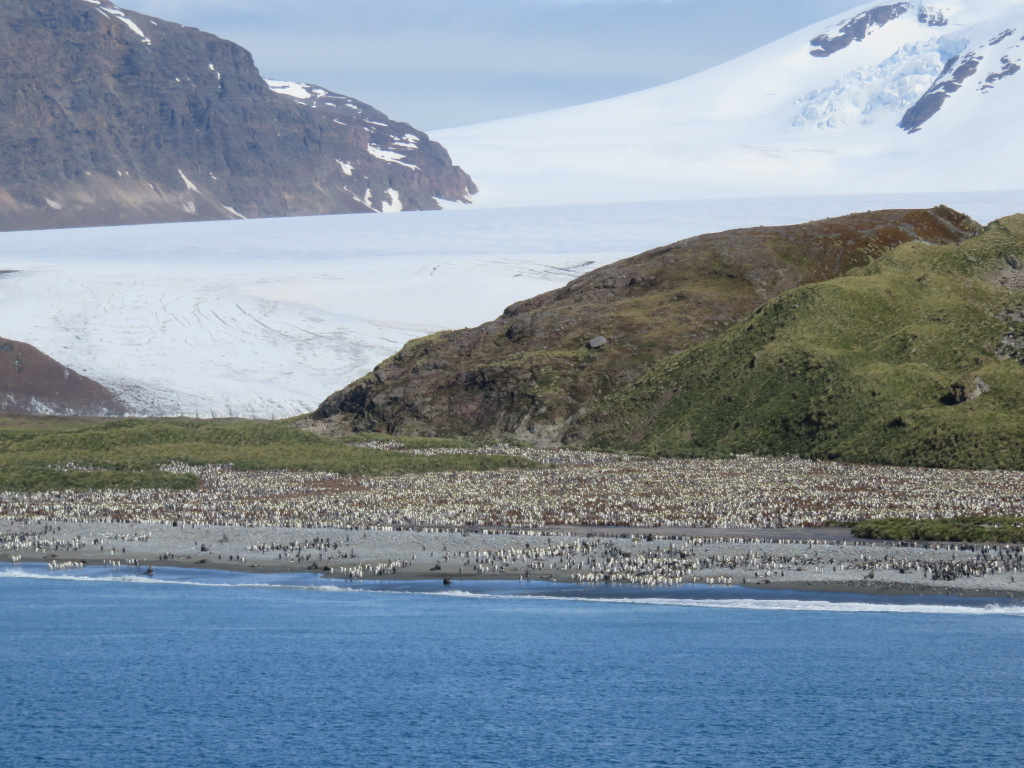 One of the colonies of King penguins.
One of the colonies of King penguins.

Snowy Sheathbill

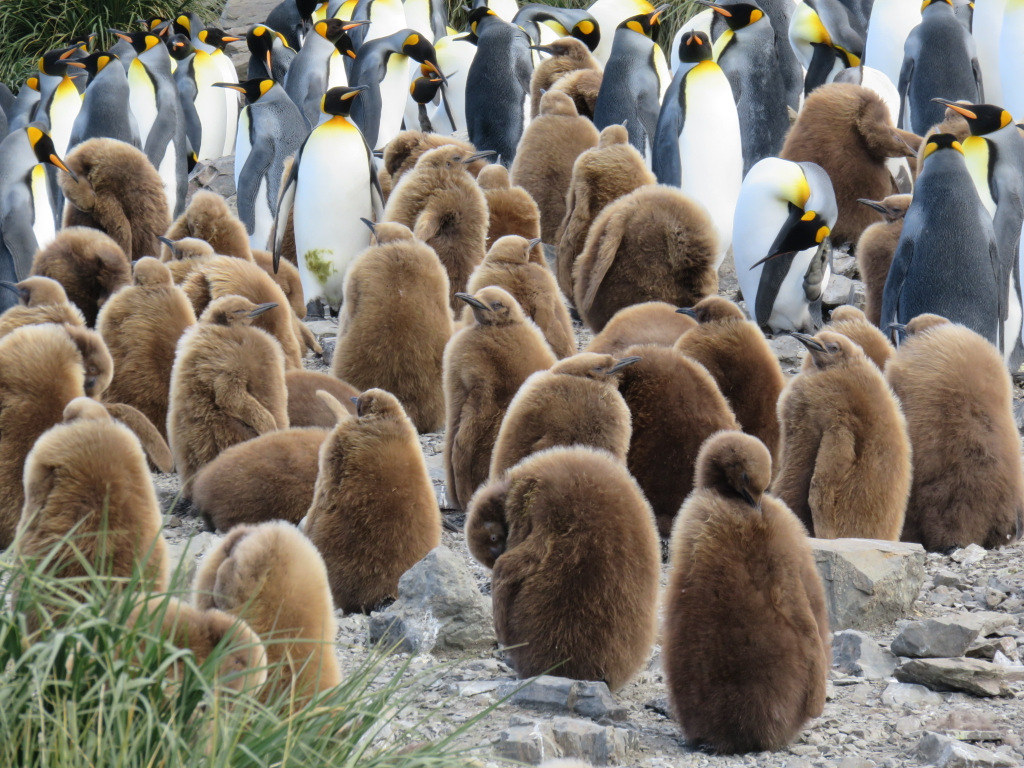

Elephant seal are huge, the males grow to 6,2 m (20 +ft), can weigh 3500+ kg. 

What looks like a rock in the water is a giant sleeping Elephant seal. He moved only once the whole time we forded the stream – and actually came closer.


 Yes, that is Barbie at a photo shoot.
Yes, that is Barbie at a photo shoot.


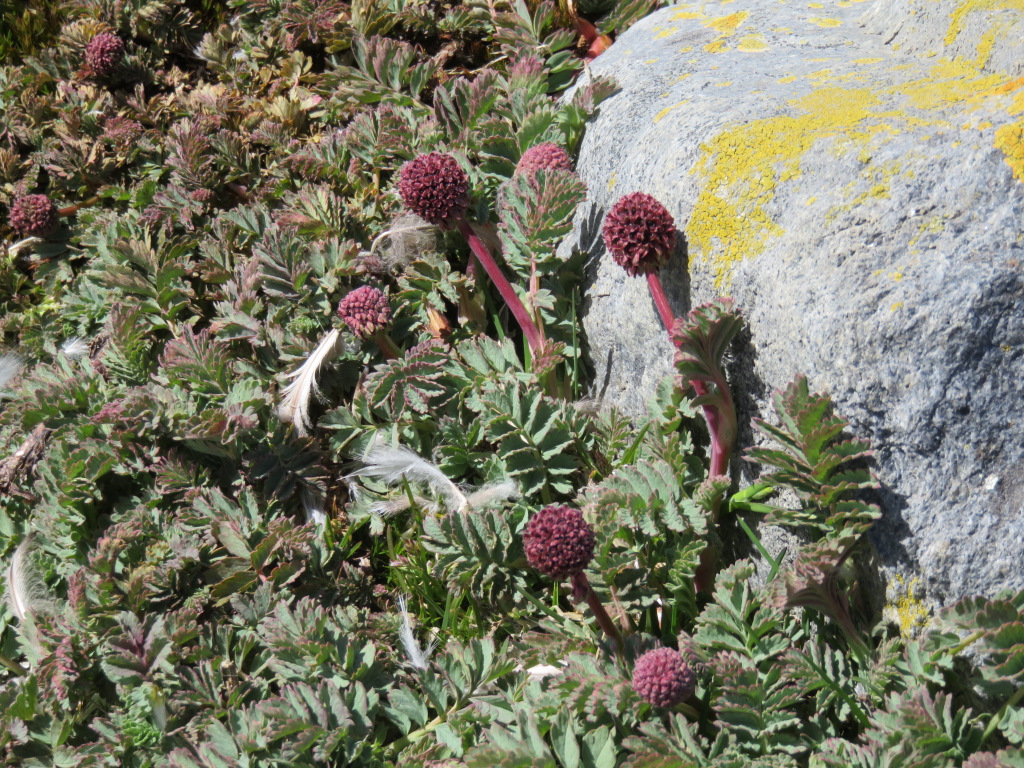
Burnet is one of the few native flowers that can grow in this environment.
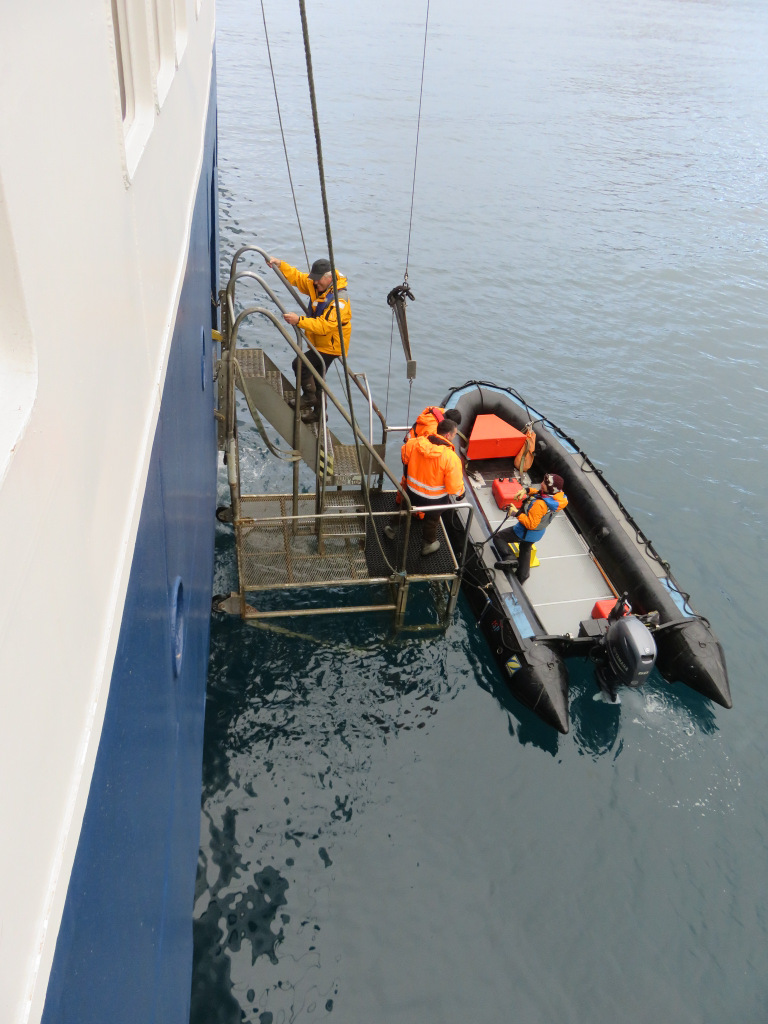
That was a great day, tomorrow another bay with different penguins.

Gentoo penguins nest way up on the hills. While Günter hiked up to a lake I sat up on the hill in the tussock grass for more than an hour watching their nesting behaviour. They keep working on the nest even though it is perfect, stealing material from other nests and getting pecked at for it. As I looked up to the ridge I saw a group of them climbing up that way. Whatever posesses them to go that high I don’t know.

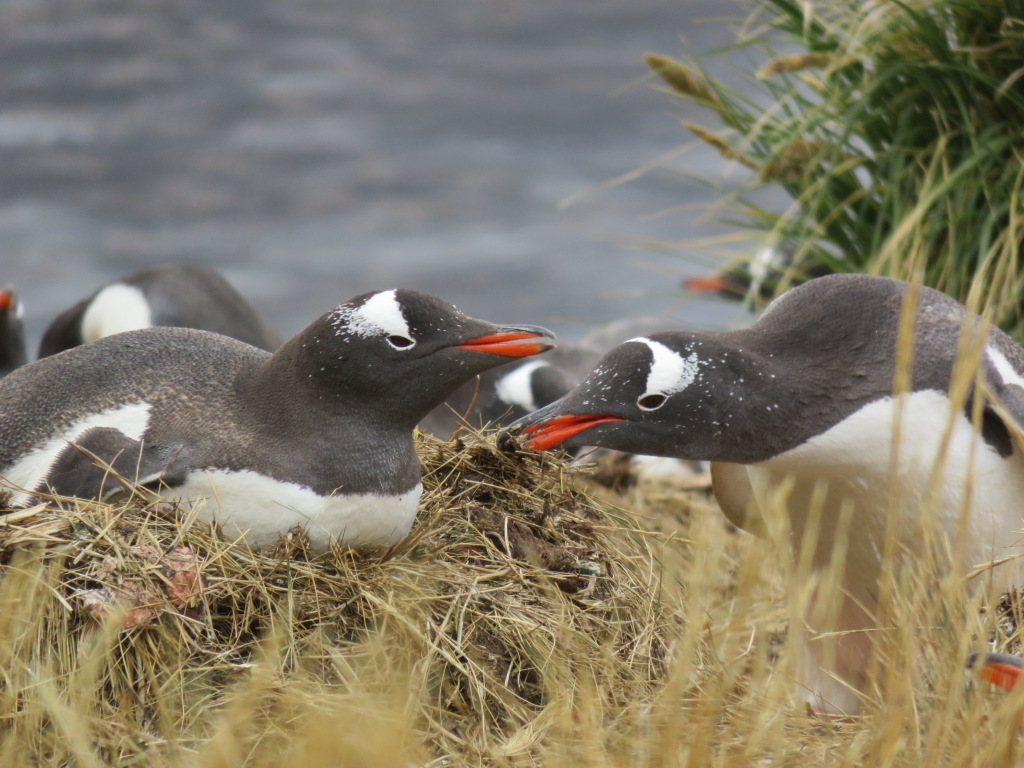

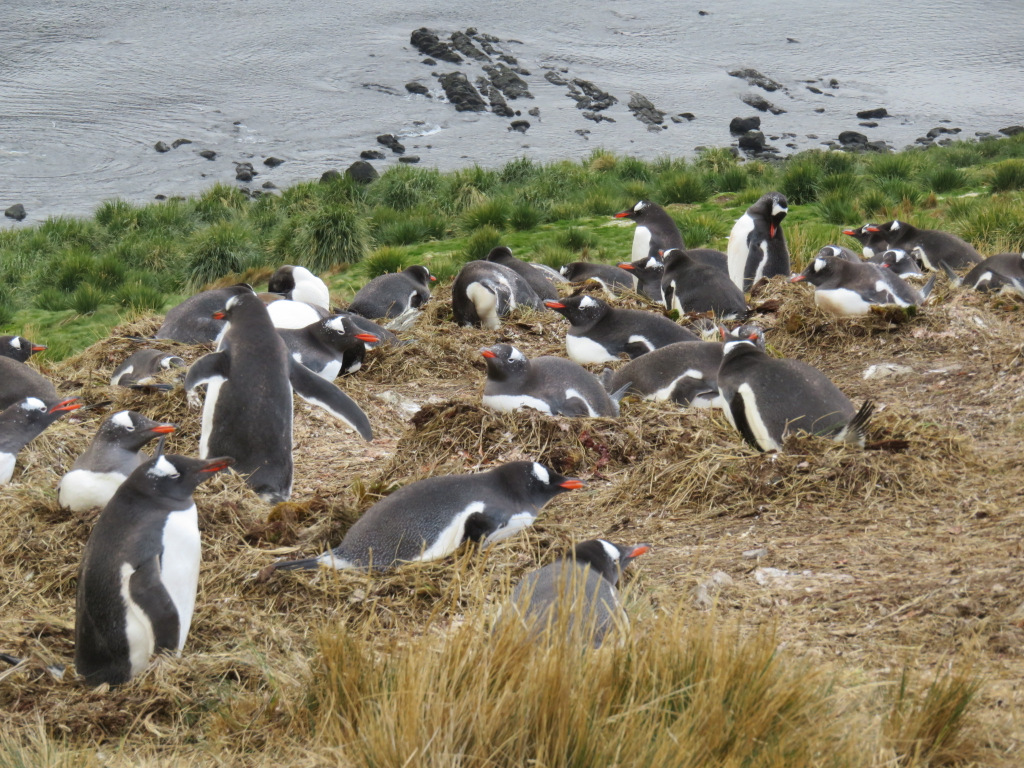
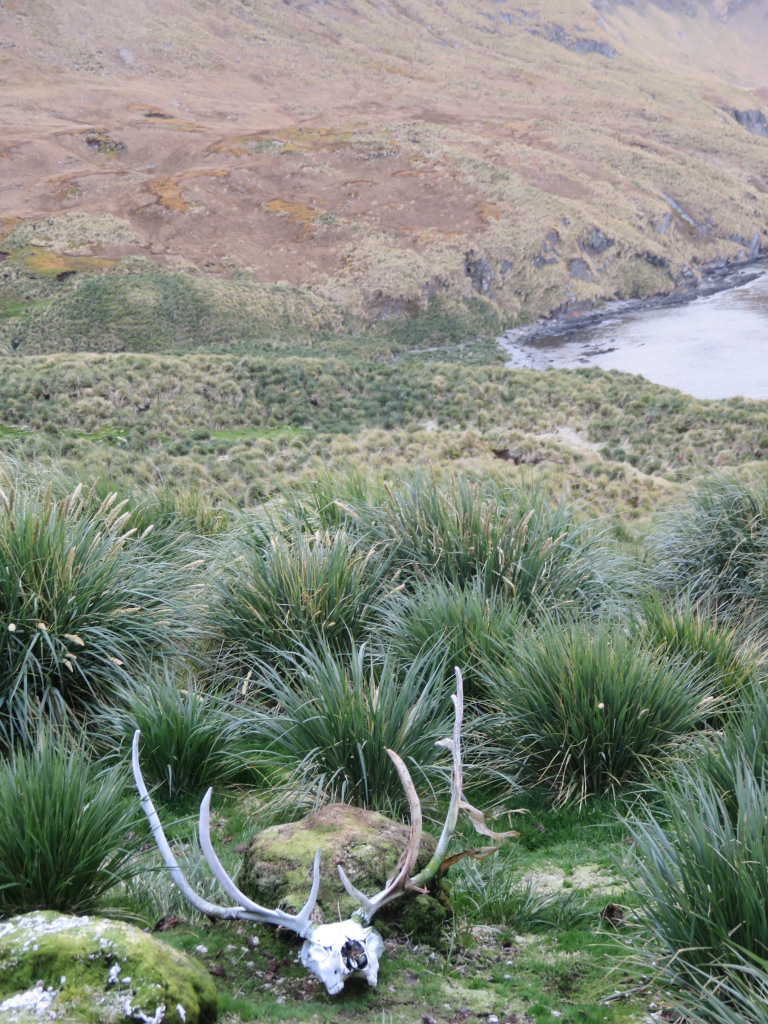
Reindeer were introduced by the whalers as a source of food about 100 years ago. The were devastating the plant life and since then have been eradicated.

Hiking from Fortuna Bay to Stromness, following in Sir Ernest Shackletons footsteps.
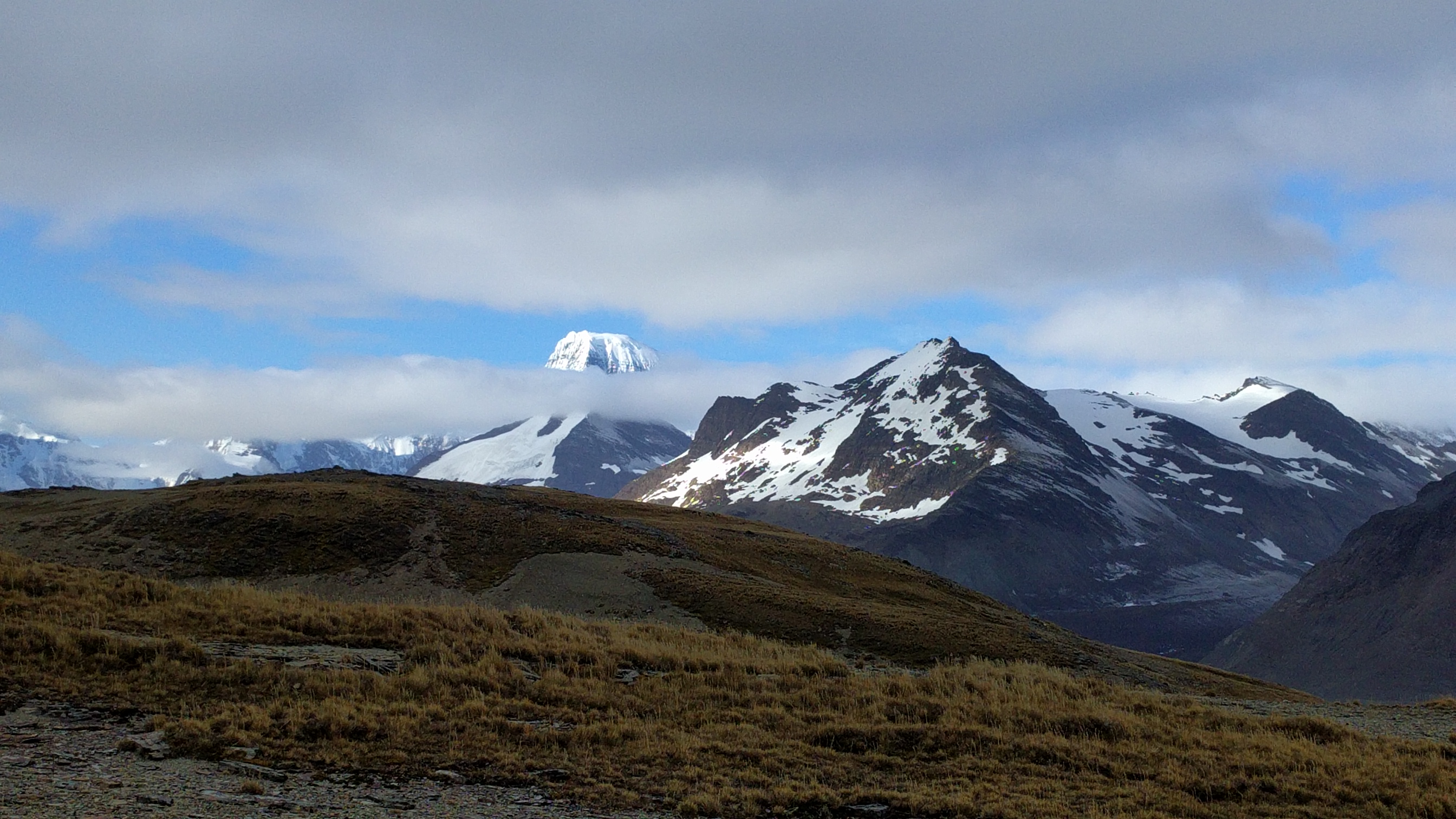

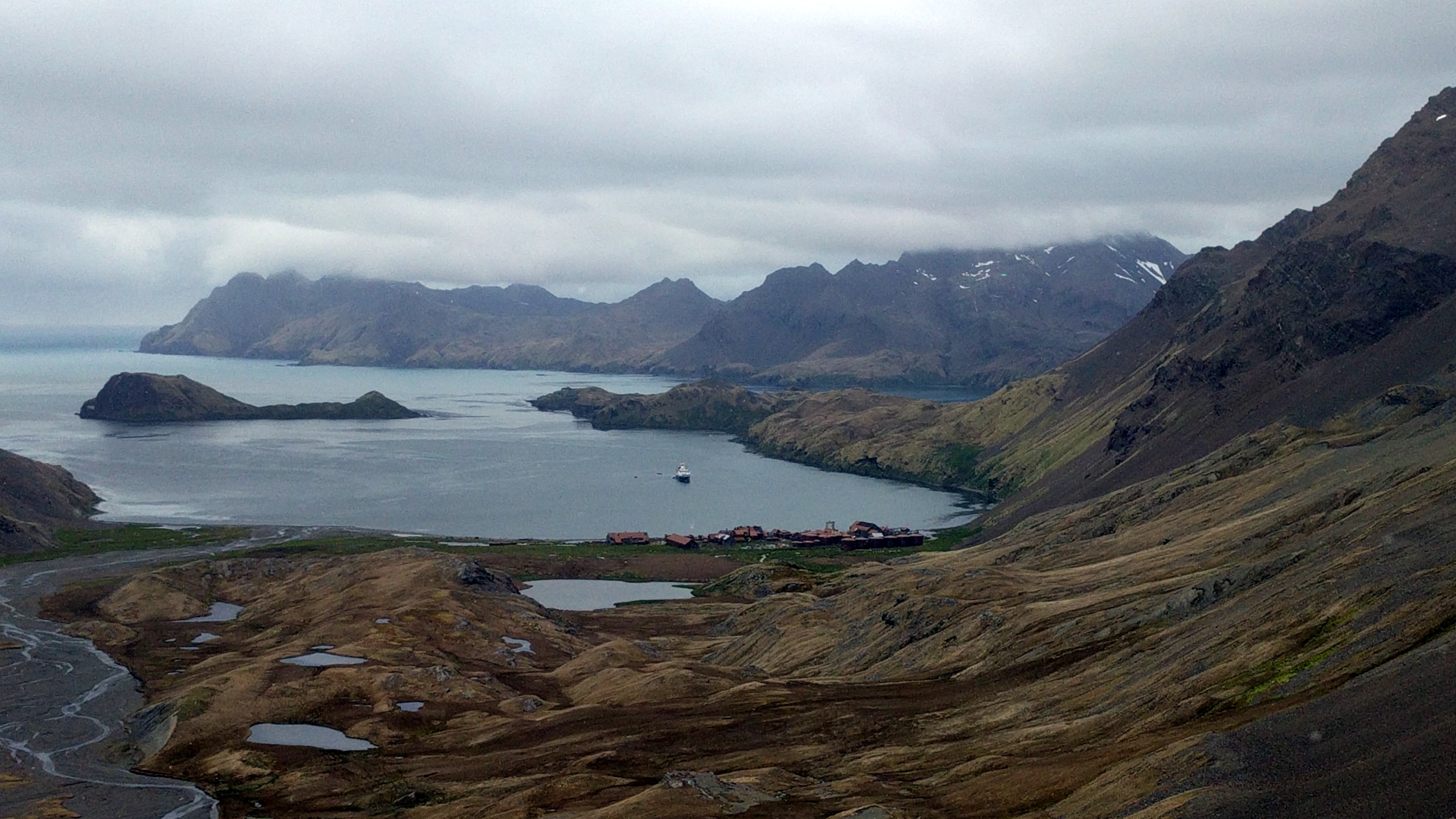
Shackletons view when he finally reached Stromness.

The waterfall.

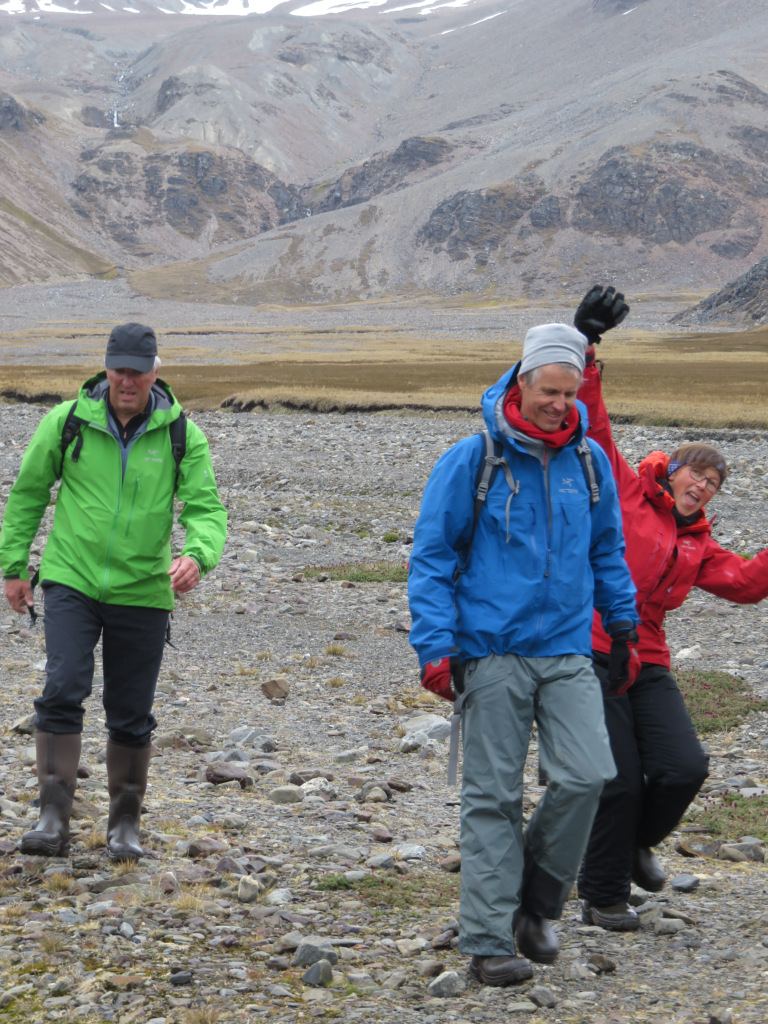
Günter, Fred and Doris arriving at Stromness after the three hour hike.
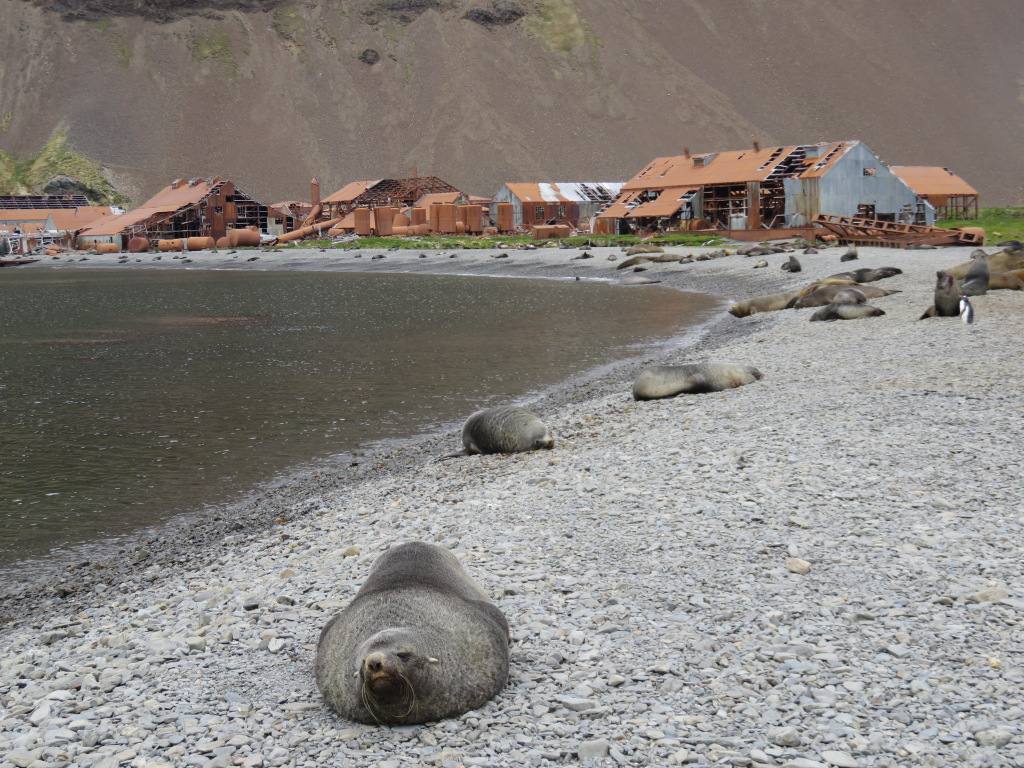


See Günter run, he almost stumbled over the fur seal under the propeller.
Larsen Harbor

A whaling station with a big blubber rendering operation in its days.


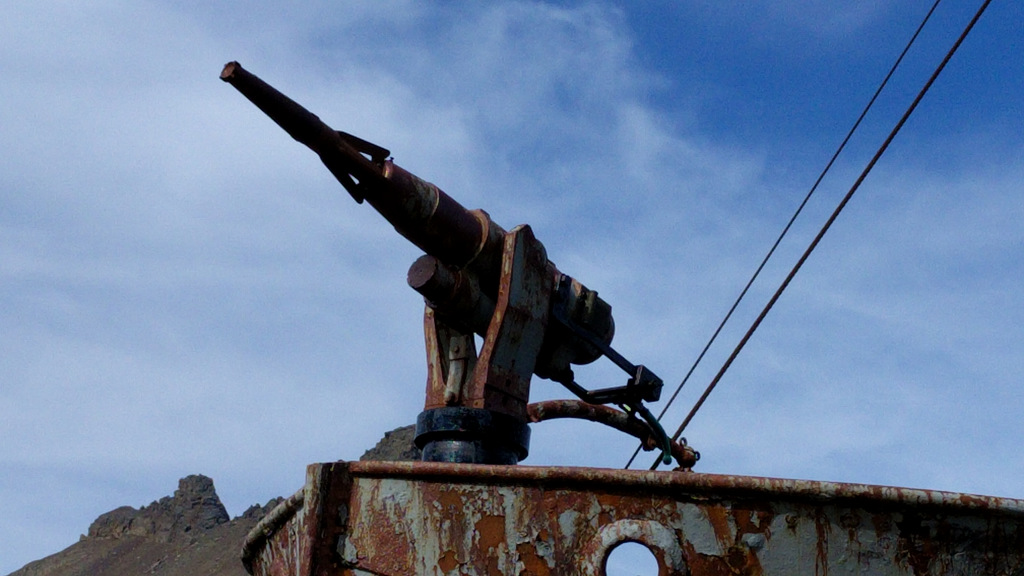

The whalers built a church and ski jump, must have been Norwegians, they have their priorities.
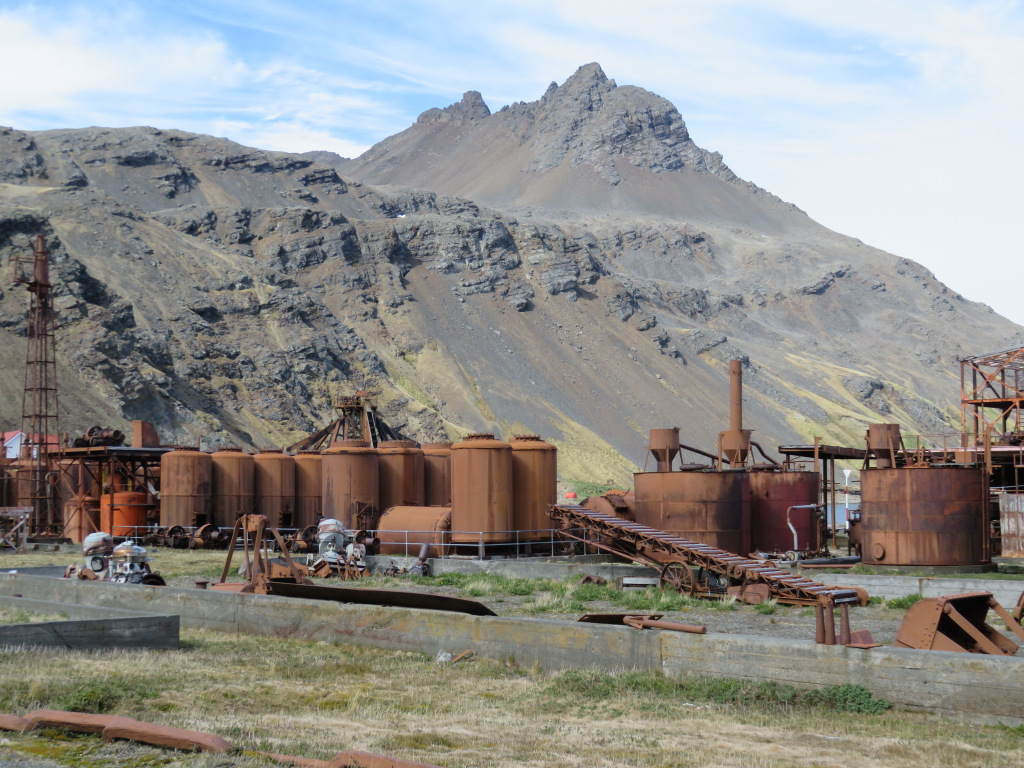
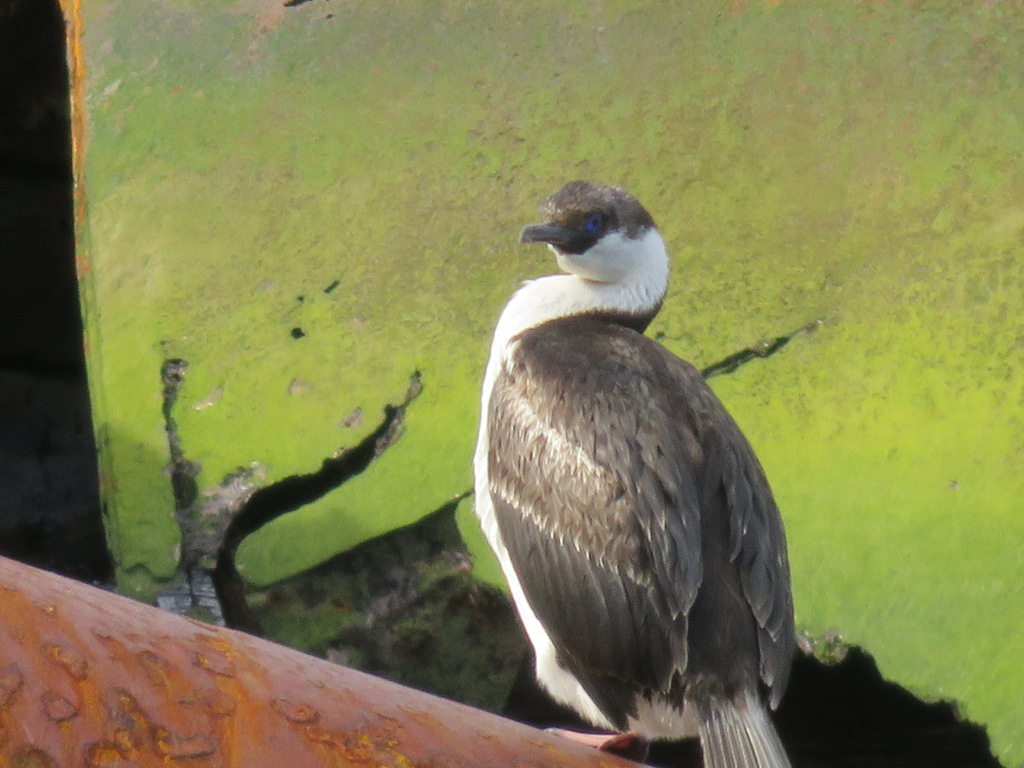
Blue eyed shag
 Fur seals
Fur seals

A face only a mother could love

Drygalski Fjord
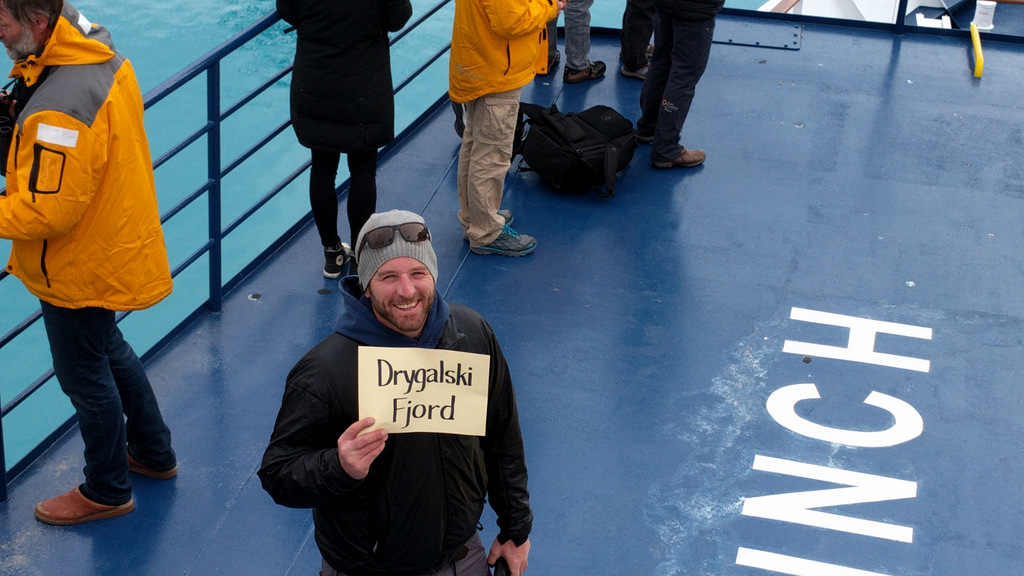
This is one of our great guides “Sean”, he lives in Juneau.
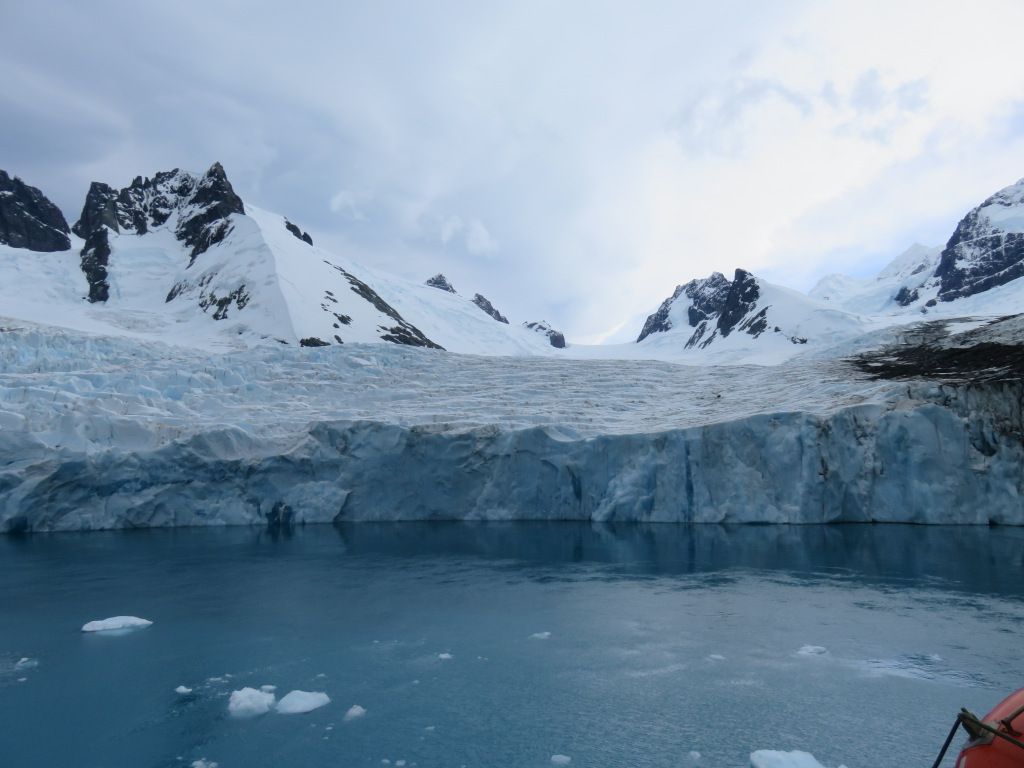

Antarctic terns

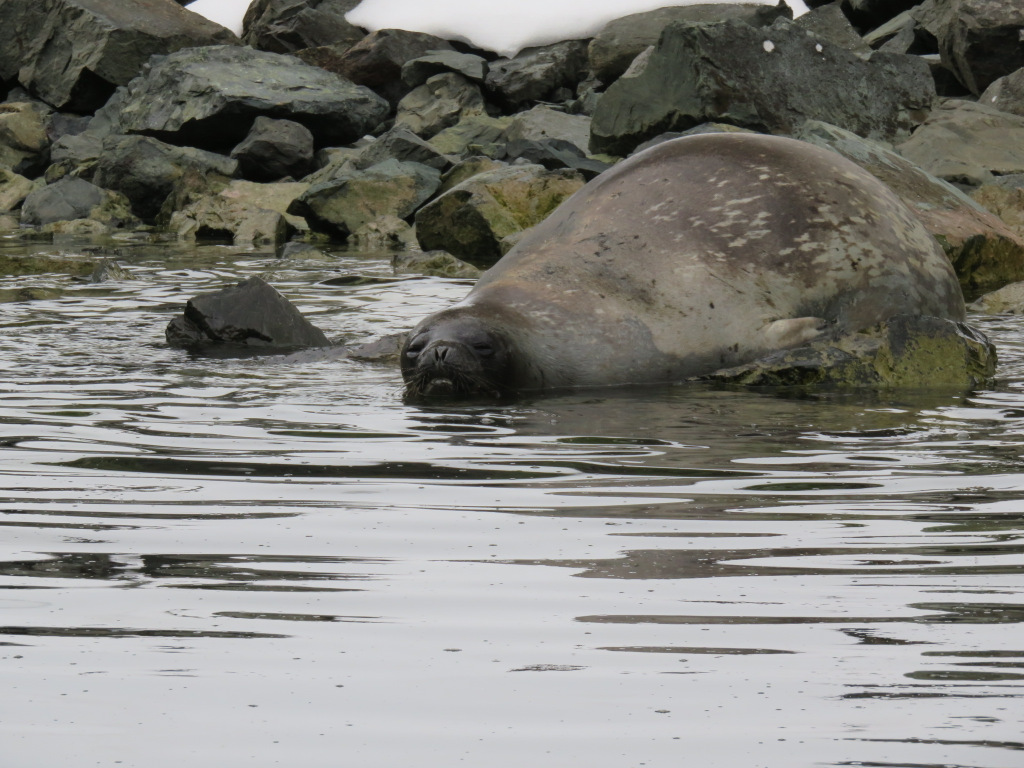
Weddell seal.

Good bye South Georgia and on to the Antarctic Peninsula


The Falkland Islands (Malvinas)
The Falkland Islands November 10. to November 27. 2017
Tourism is has grown steadily in the Antarctic region. The “Lindblad Explorer” first started taking a few interested people to these places in the late 1960s. I remember as a young woman seeing their advertisements in the National Geographic magazine. Now there are several “Expedition Vessels” that make trips to Antarctica and neighboring islands.
So with the help of “Freestyle” in Ushuaia booked a trip with Quark Expeditions, we wanted to see the frozen world beyond.
The trip included the Falkland Islands, South Georgia Island and the Antarctic Peninsula. After parking our camper in a gated lot in Ushuaia we embarked on an amazing journey.
The boat (129 passengers and 80 crew) was comfortable, we had a nice stateroom, the crew was welcoming and as we were traveling down the Beagle Channel we were looking forward to a new and different kind of adventure.
The Falkland Islands are remote and not many people visit this windy and treeless group of islands, they consist of two large islands and 740 small islands and islets. The main industry is the sheep that can be seen everywhere and fishing right leases to foreign companies.
Argentina insists that it has ownership of the Falkland Islands, Las Malvinas, but they are still British for now. And when you go there you can feel it.
Our ship took around two days to get to the northern-west tip (of West Falkland) where we disembarked on the islands of Steeple Jason, Saunders and West Point Island, (1255 ha or 3100 acres and owned by one family). The Zodiacs took us ashore and dropped us off at the beach. Our guides not only are great Zodiac captains, but full of knowledge about the area and animals. Some of us needed extra help with getting in and out of the Zodiacs,especially when the seas were bumpy, there was always a helping hand and a smile from them.
From there we went for walks through high tussock grass, over hills, to large bird colonies. The birds are almost fearless of humans and walking along nesting Black-browed albatross and penguins we could observe them without feeling like an intruder.
Of the 3000 people who live on the islands, 2000 reside in the capital Stanley. In the harbor we saw three sail boats, one flew a German flag, we were tempted to go down to find out more about their travels. Were they going to round Cape Horn? We never found out because it was time to go back to the boat and head to South Georgia Island.

Falklands
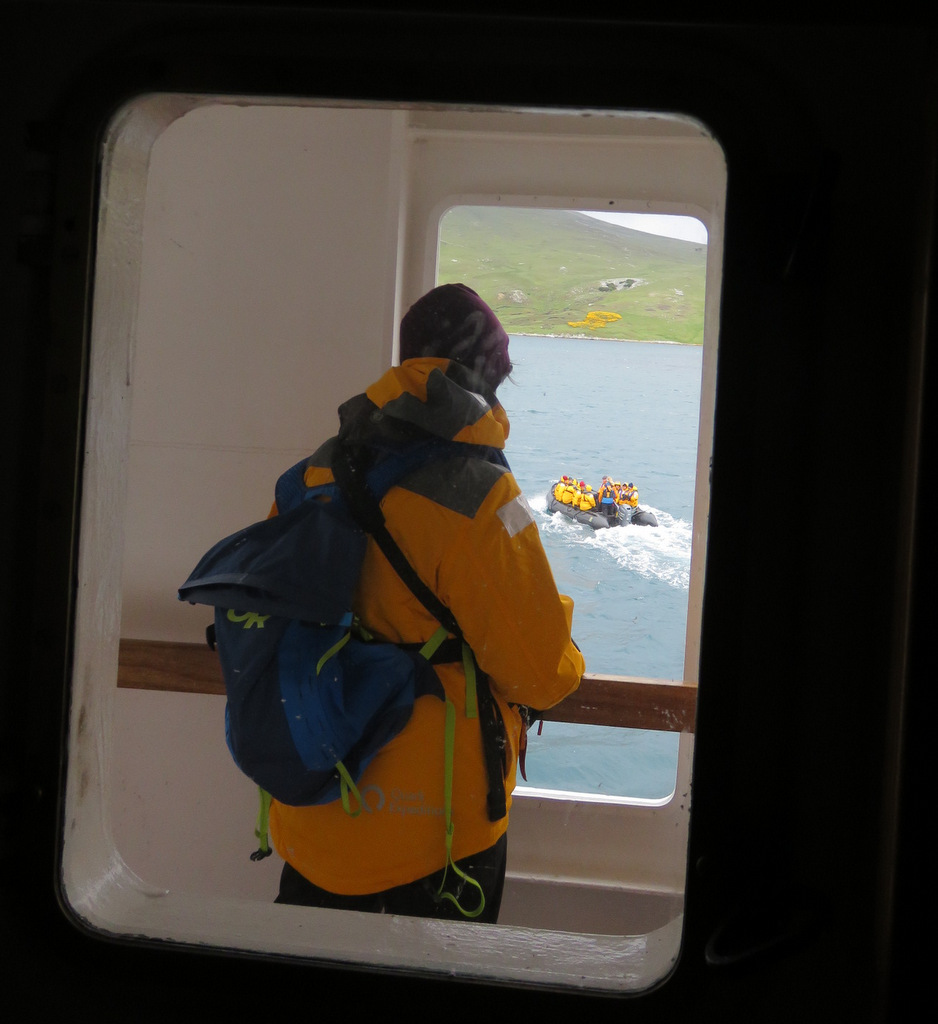

“The Gang”

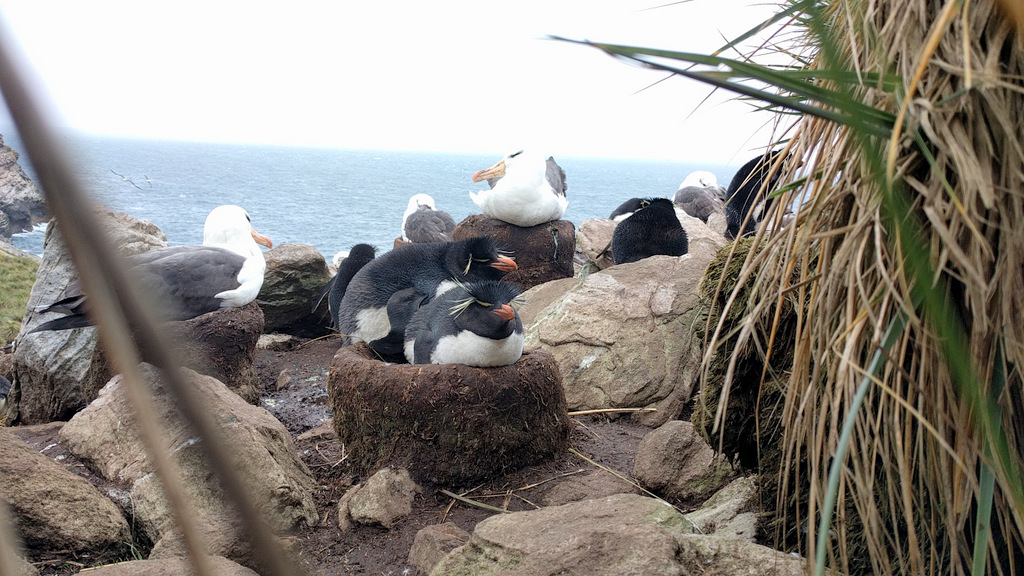
score!
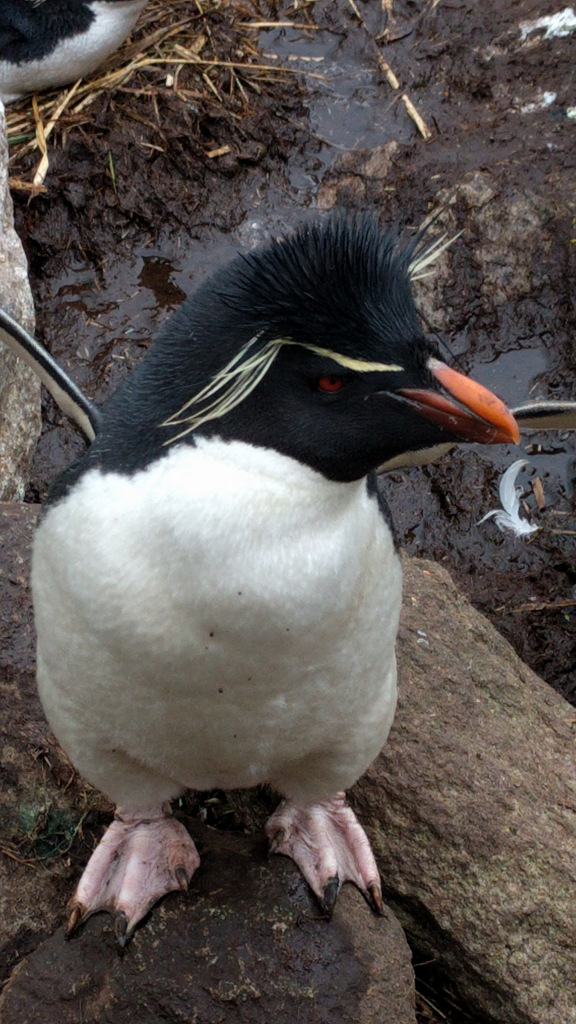
Rockhopper penguin

nesting Black browed albatross




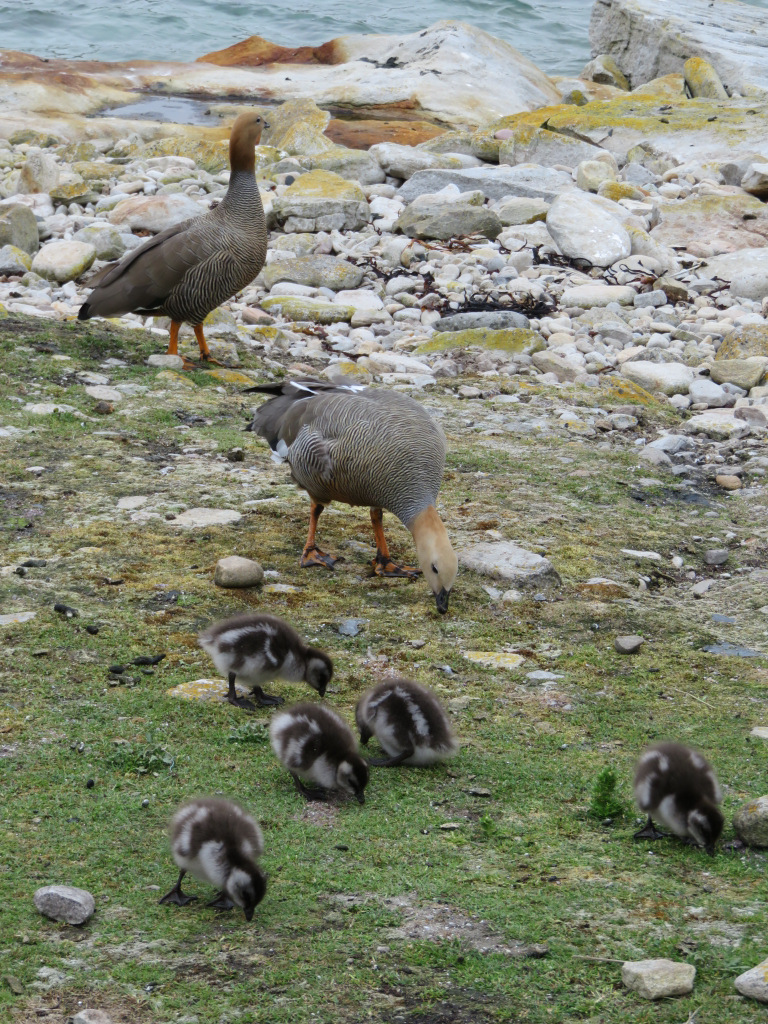

The Peninsula Valdes
We have been working our way down the east side of the South American continent, pretty much following the main route to Ushuaia, veering off for a few days here and there. We camped along rivers, on beaches and twice even in a turn out with high enough walls to protect us from the incessant winds of Patagonia. It is still early spring here and there are few tourists at the famous spots like the Valdes Peninsula. This place is famous for the orcas that sometimes beach themselves for a short time to catch a succulent sea lion pup for dinner. Well, we drove there and never saw that, just a few snoring sea lions on the beach. We saw our first penguins, the are nesting right now. At night we camped on a bluff overlooking the bay, a great spot, quite a few right whales were just hanging out right in front of us. But then the wind got stronger and stronger and after we went to bed I could not sleep for hours because the wind was shaking the camper. It was really loud and we used ear plugs, but every time I dozed off I dreamt that we would blow off the edge of the cliff, or that I was dragging anchor with our boat. The next morning I made Günter promise to never camp that close to the edge of a cliff ever again.
As we kept driving south we have enjoyed watching penguins and sea lions near our campsites and the winds are not that strong anymore. The coastal roads are breathtaking and worth the extra time it takes to drive them since they are not paved. There are many places to wild camp for the night and each one has its special charm. Some days the pampa is endless and mostly flat, other days it is hilly, with lakes and ponds, flamingos and ducks. We have seen countless guanacos and many rheas. Today we are at a campground in Puerto San Julian, it is a treat to get the laundry done, take long hot showers and find wifi. So I am catching up on some emails and then we will be off again, still headed to Tierra del Fuego. This town is a little dreary, but it has an interesting history. Magellan found this bay in 1520 and waited out the winter here. (He is famous for being the first to circumnavigate the world – his boat anyway.) The thousands of Magellan penguins up and down the coast here were named after him.
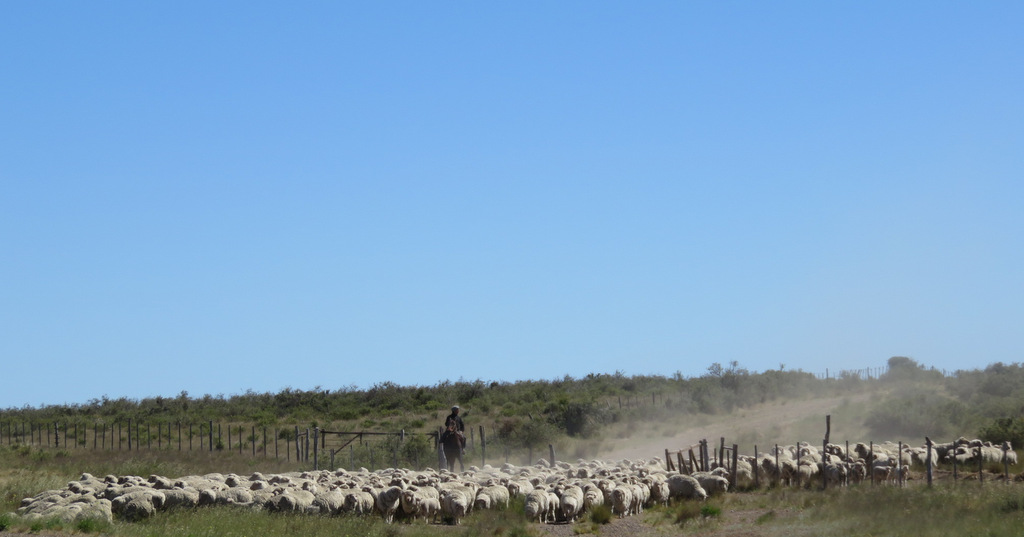


Lots of rheas share the pampa with the guanacos and sheep. Each female lays 20 to 40 or more eggs, amazing. The male incubates them. The male will use a decoy system and place some eggs outside the nest and sacrifice these to predators, so that they won’t attempt to get inside the nest. The male may use another subordinate male to incubate his eggs, while he looks for another female to start a second nest. The chicks hatch within 36 hours of each other. The females, meanwhile, may move on and mate with other males.


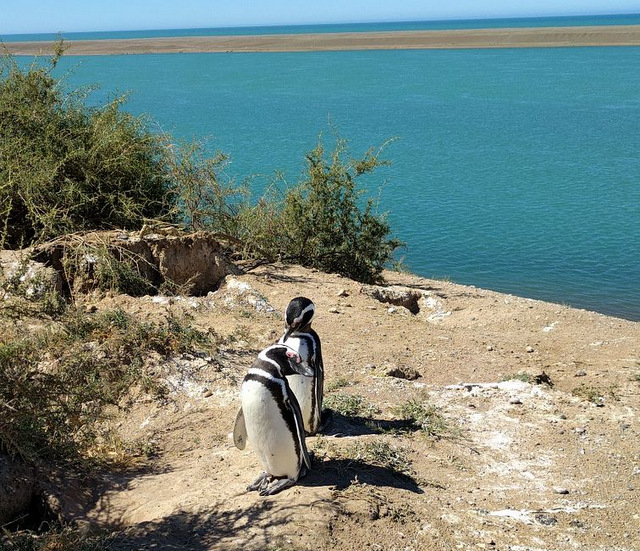


The Magellan penguins and sea elephants on the Peninsula Valdes are used to visitors and go about their business without being disturbed by us.


Here our camping spot, there was not a grain of sand anywhere, the cliff was swept clean by strong winds that blow almost all the time.
Colonia, Uruguay and on to the Argentine Pampas
After we dropped off our camper at Sandra’s near Colonia in Uruguay in March 2016 we flew home for a break. The plan was to return after a few months to drive south to Ushuaia. The standard route for most overlanders. Due to some medical issues we had to stay home much longer and our camper would have overstayed his welcome in Uruguay. So with Sandra’s help we applied for an extension from Aduana in Uruguay which allowed us to keep it stored until the fall of 2017. When we returned to Uruguay a few weeks ago we found out that some overlanders were in trouble for leaving their vehicles in the country and flying home. So after we picked up our camper and said goodbye to Sandra (who – together with husband Enrique – took great care of the camper and helped us with all issues) we headed for Argentina. When we approached the border we were a little apprehensive, but we breezed right through, got our piece of paper and then we were back in Argentina. The truck had been sitting for 1 1/2 years and we were not surprised when it had some issues, it barely made it up the hill at one point. We stopped at a gas station and after removing a rat’s nest from inside the air filter and adding some booster to the “old” diesel it ran like a charm again.
So we are off, headed south and getting used to camper life and close quarters. The wet pampas flew by the car window, lush greenery, beautiful birds and cattle as far as you could see. In Sierra de la Ventana we took a break, got our bikes out, dropped the laundry off and stayed for 4 days. Exploring the area on a bicycle or horse is the way to go, we ended up riding for 50 + km one day, through fields and past Estancias, their houses shaded by large trees. Beautiful horses everywhere and of course the beef cattle.
We never saw a car and at one point did not know exactly where we were, having left all electronic devices back at the camper. So we talked to some friendly gauchos who showed us the way.
It is a nice place to hang out in the off-season, a favorite vacation spot for Argentinians, probably a zoo in summer. We were camped beside the indoor pool and close to the creek in town, on the other side of the creek in the high bank, the burrowing parrots were nesting in caves. I loved sitting in front of the camper watching the parrots working on their nests and carrying on, noisy neighbors they are.
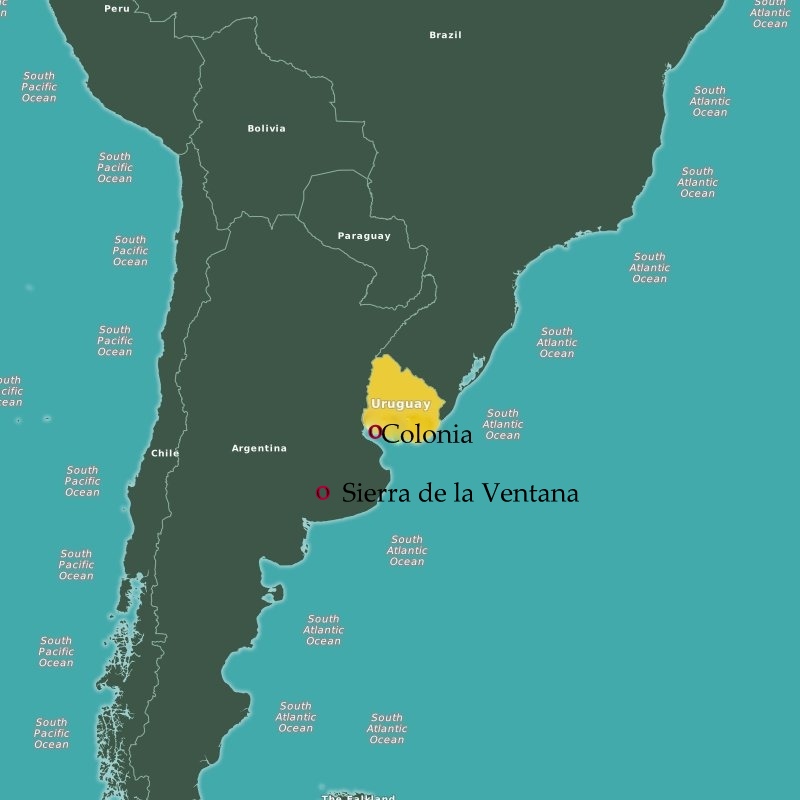
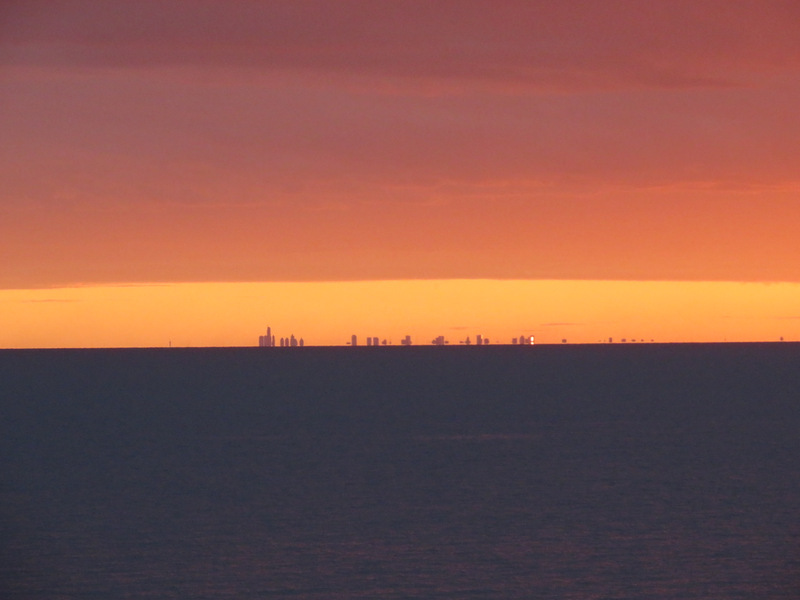
Buenos Aires seen from Colonia. Unadulterated photo.

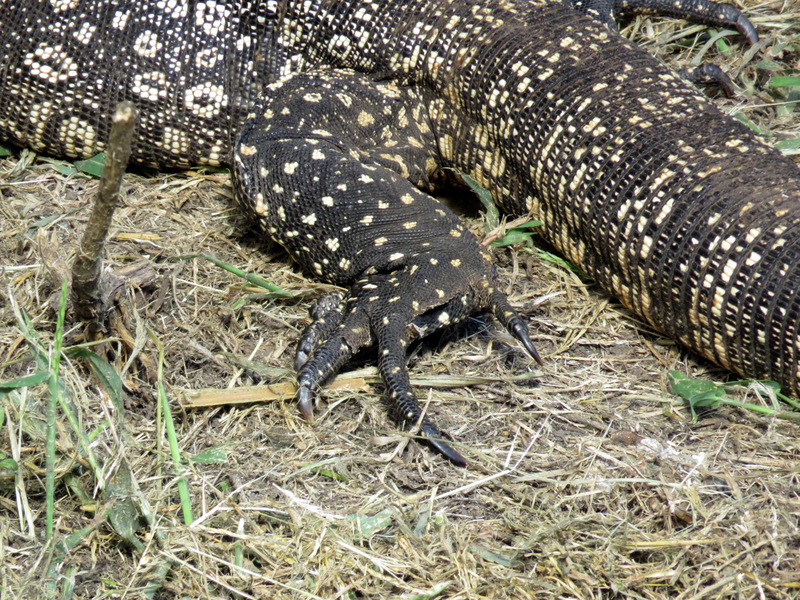
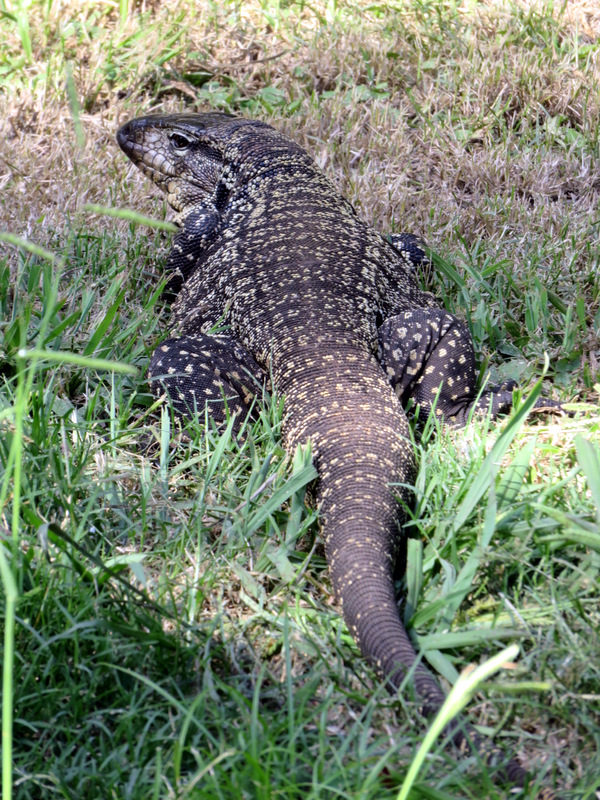
visitor in the camp ground

El faro in Colonia

Green parrots in the palms in Colonia.
Argentina, the Pampas
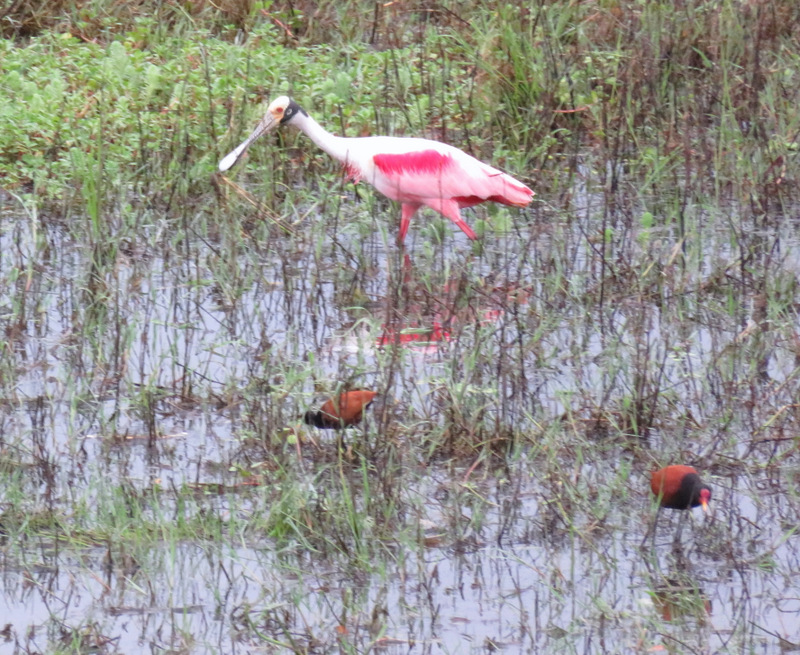
Roseat Spoonbill

Wood Storks

Gauchos
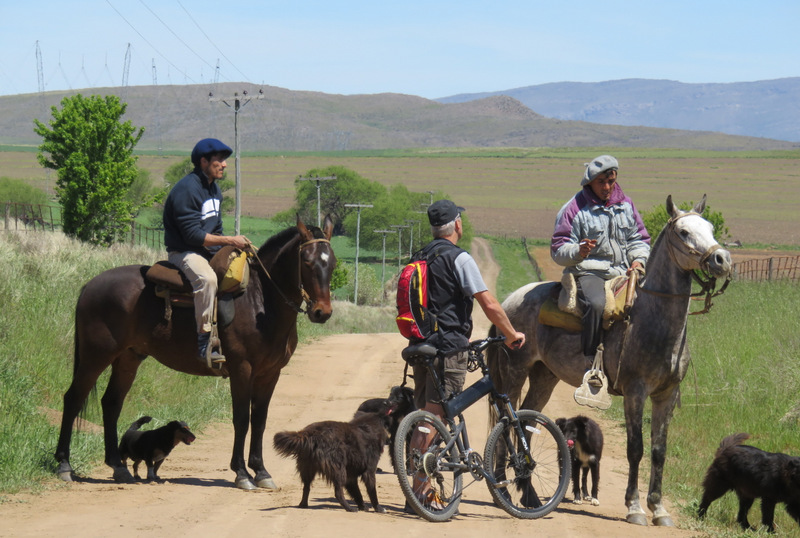
Asking directions after we were not sure anymore about the way home. One of our favorite photos.

50 km, more than we had planned.

all alone somewhere in the wet pampas


“My home is my burrow”
